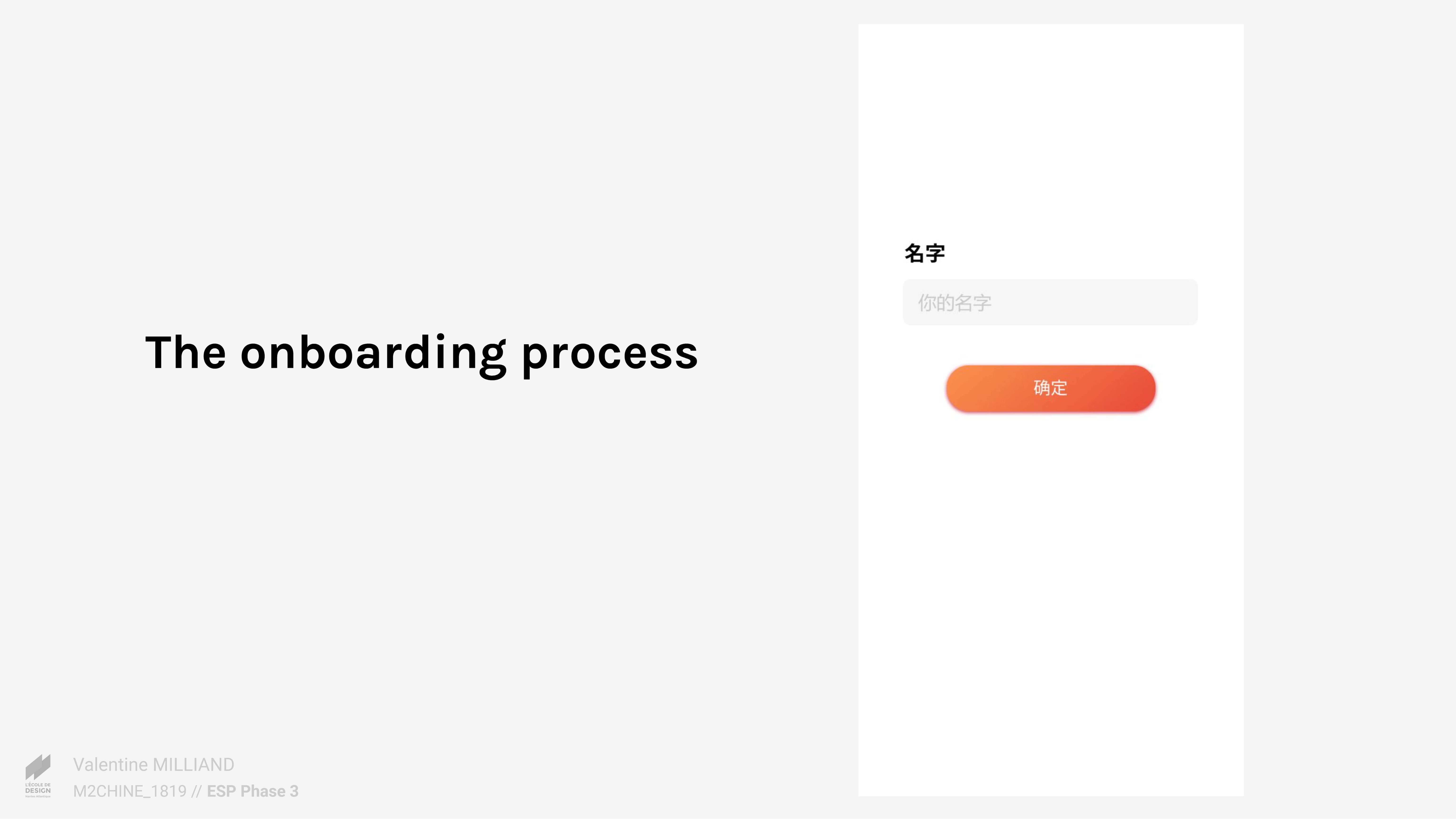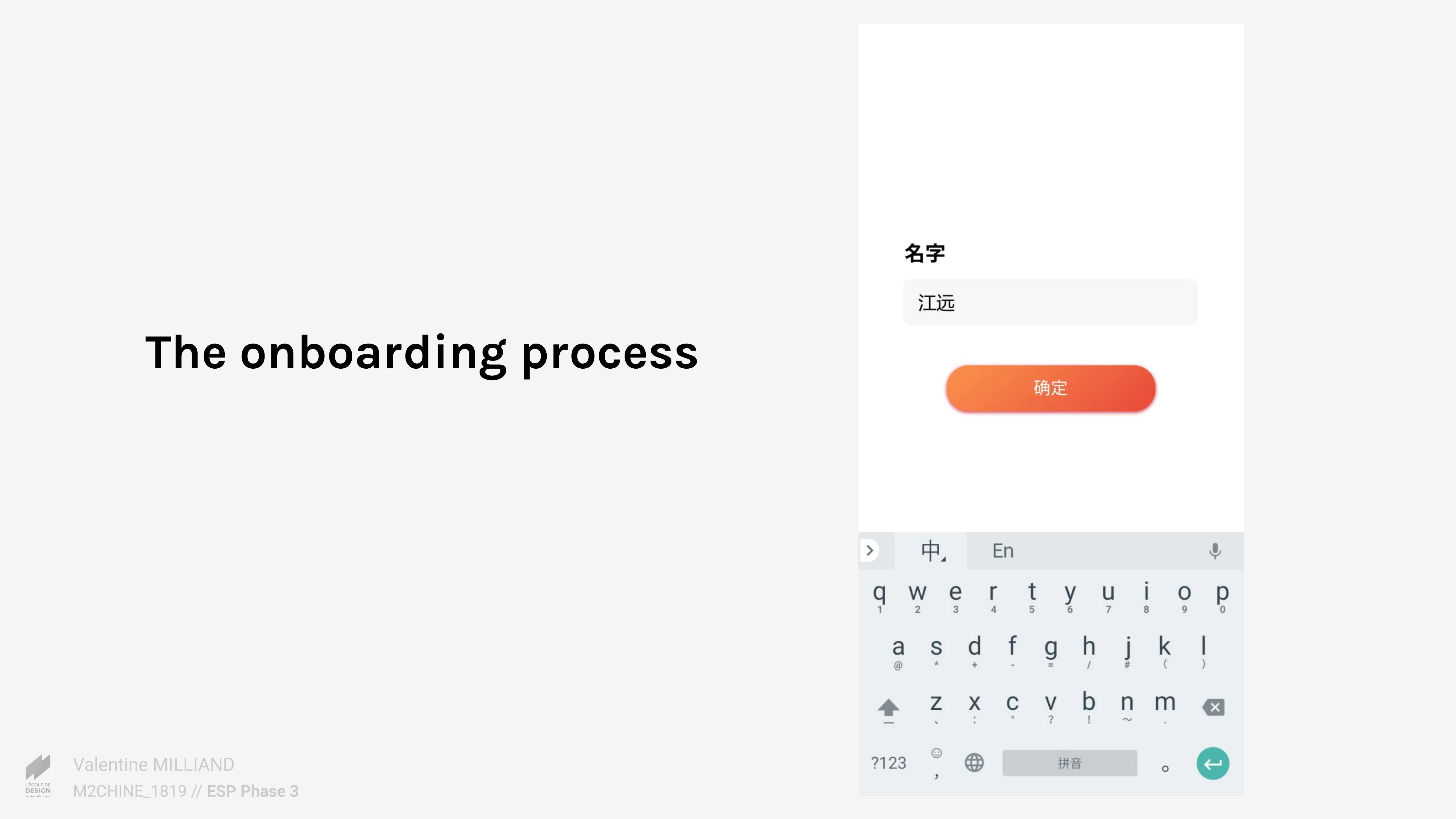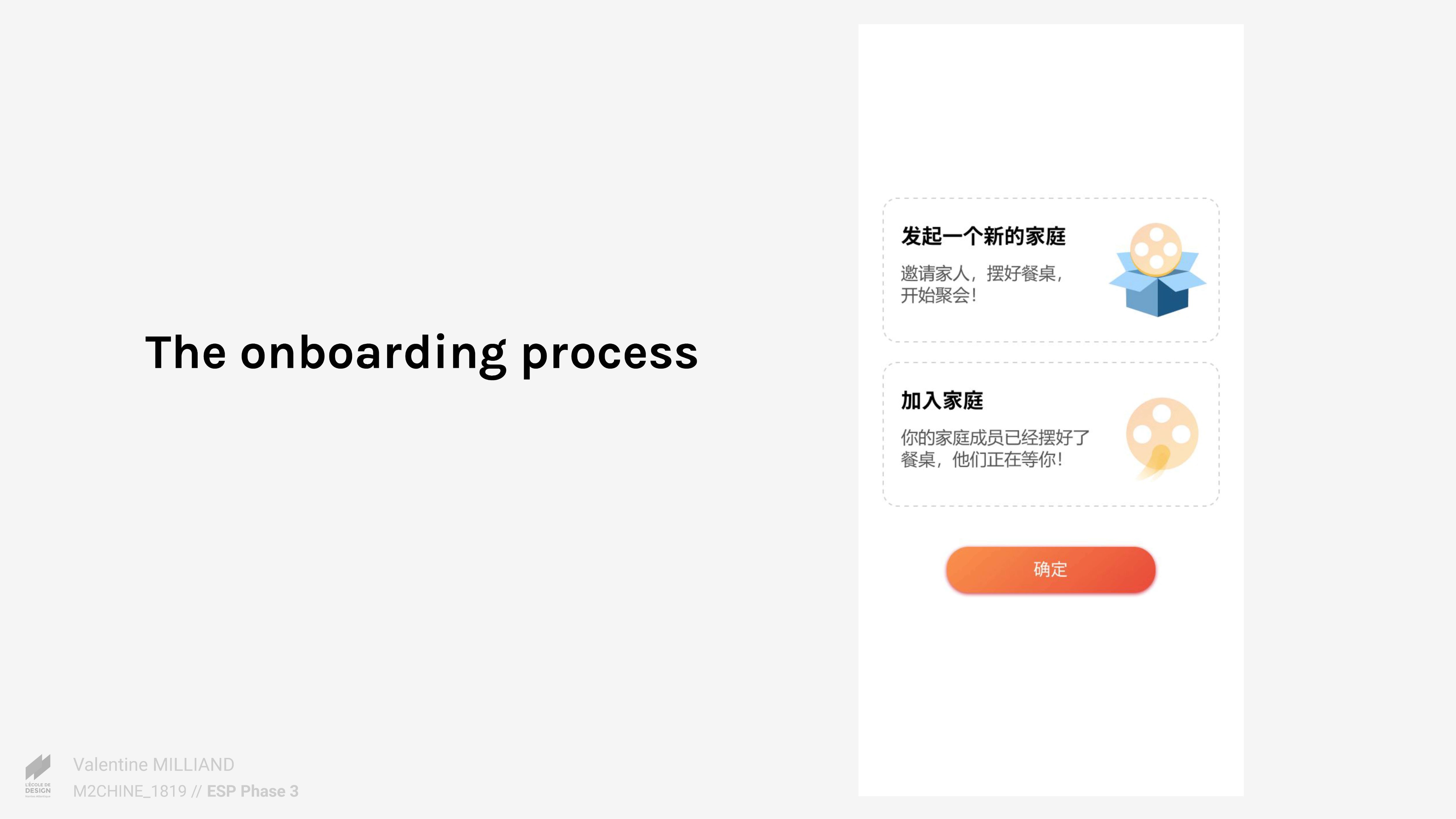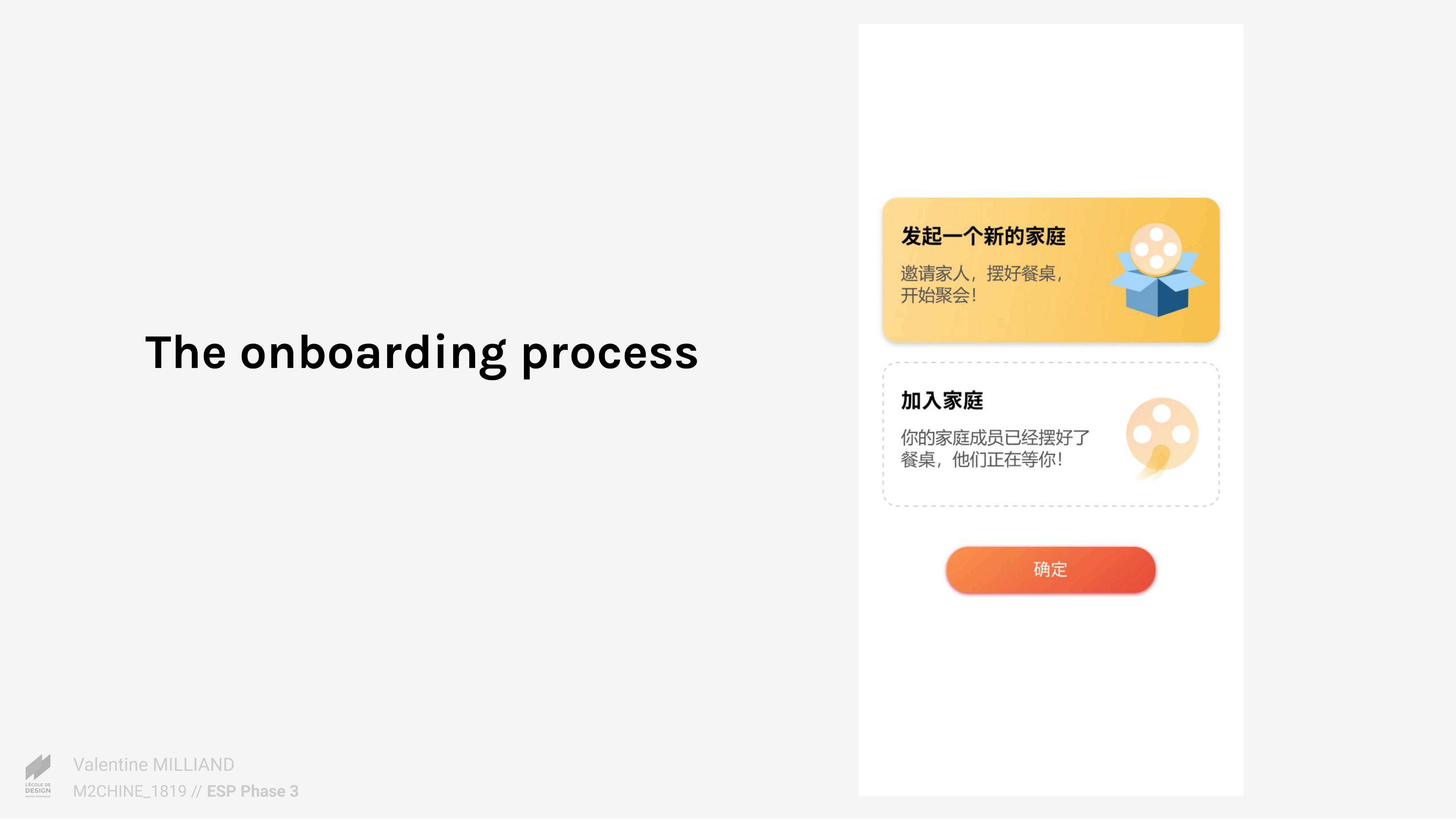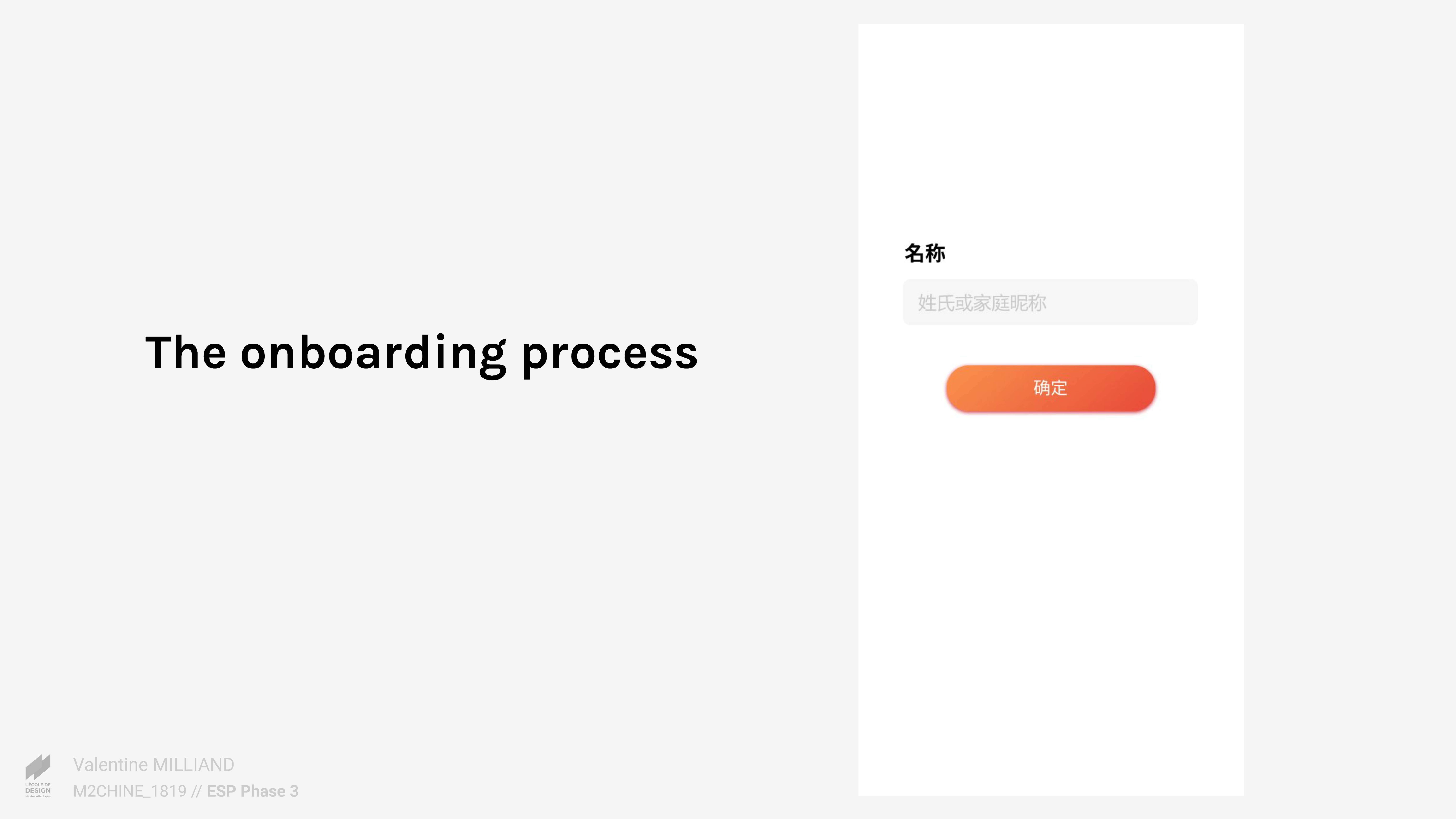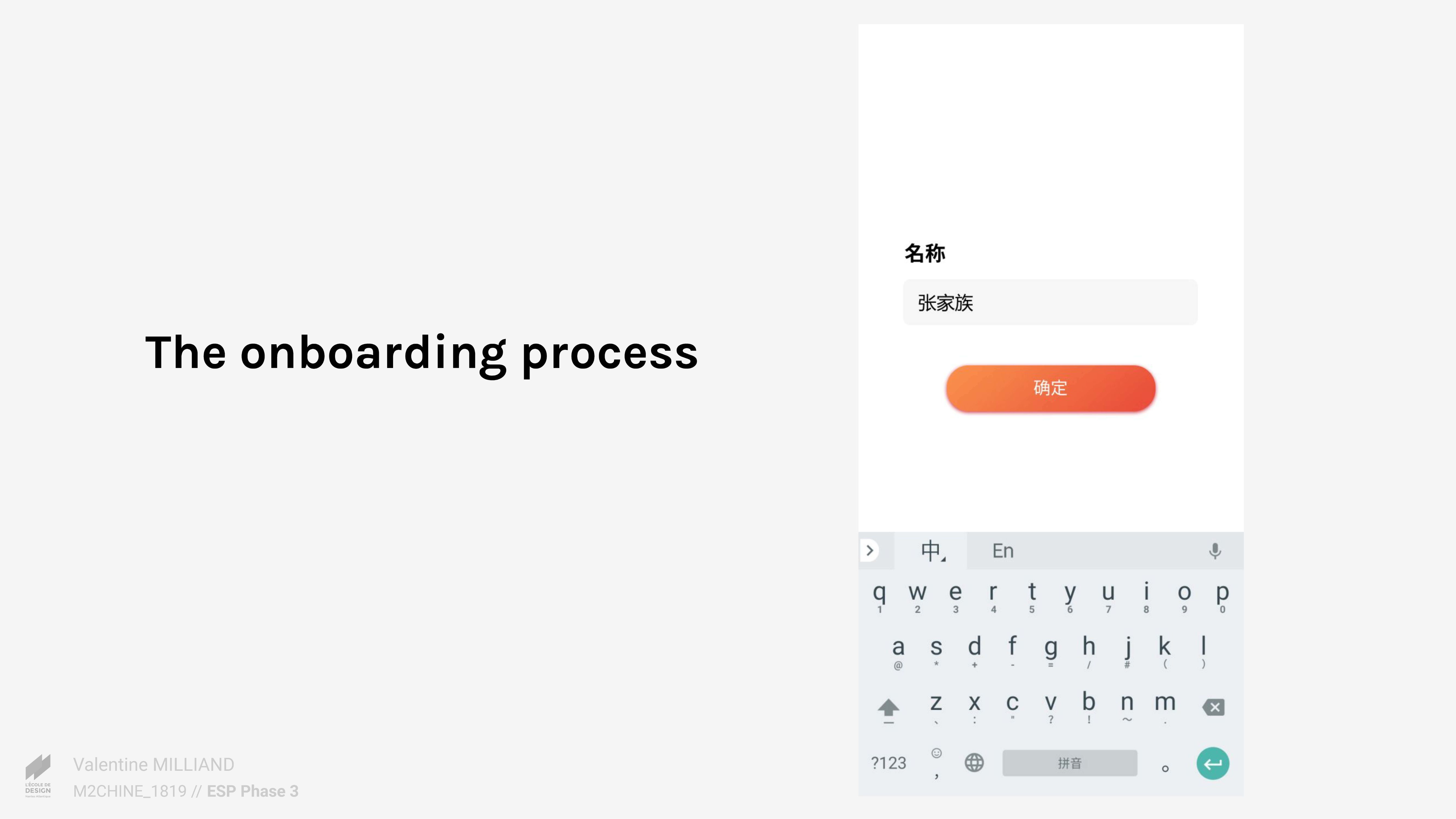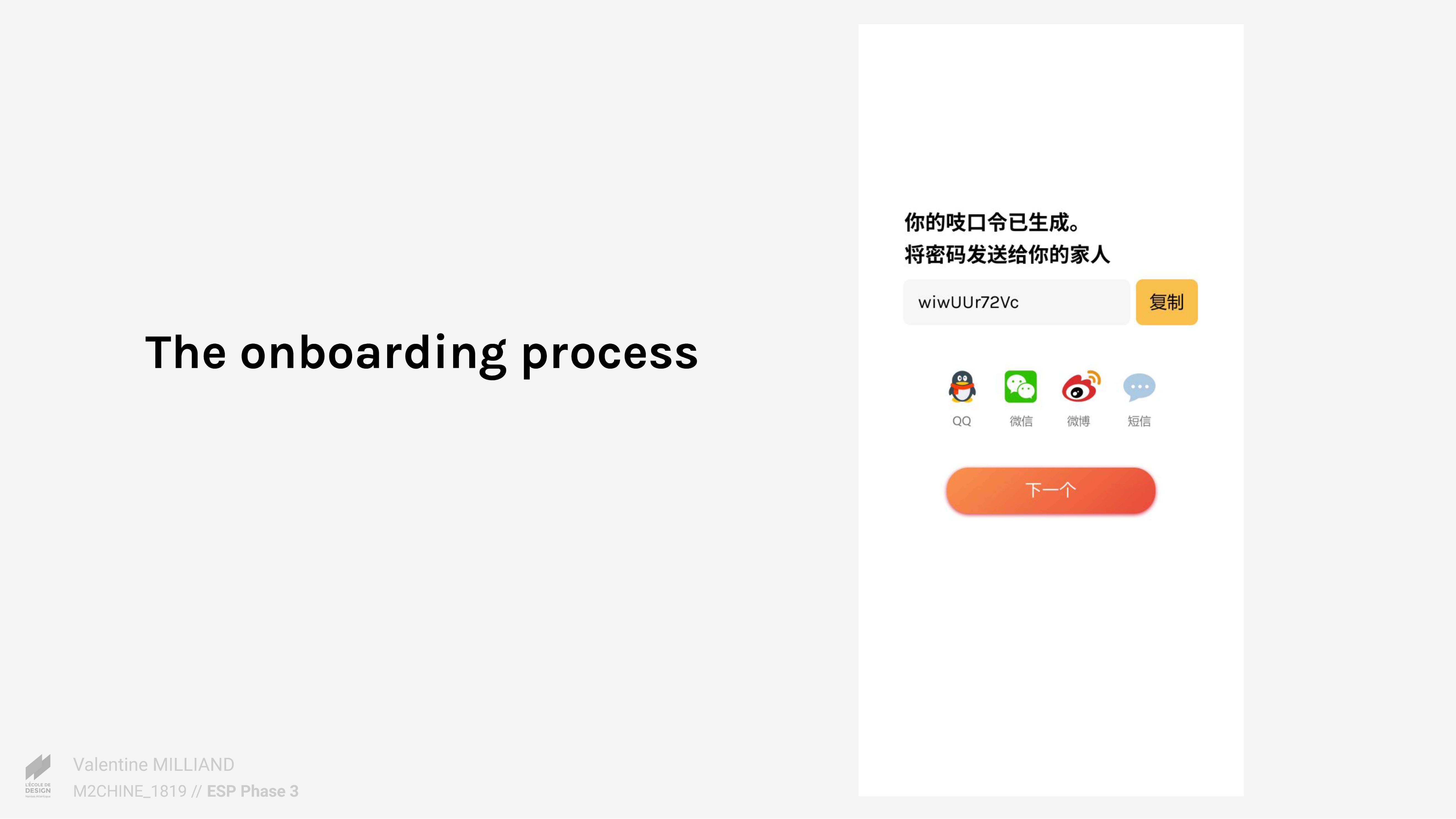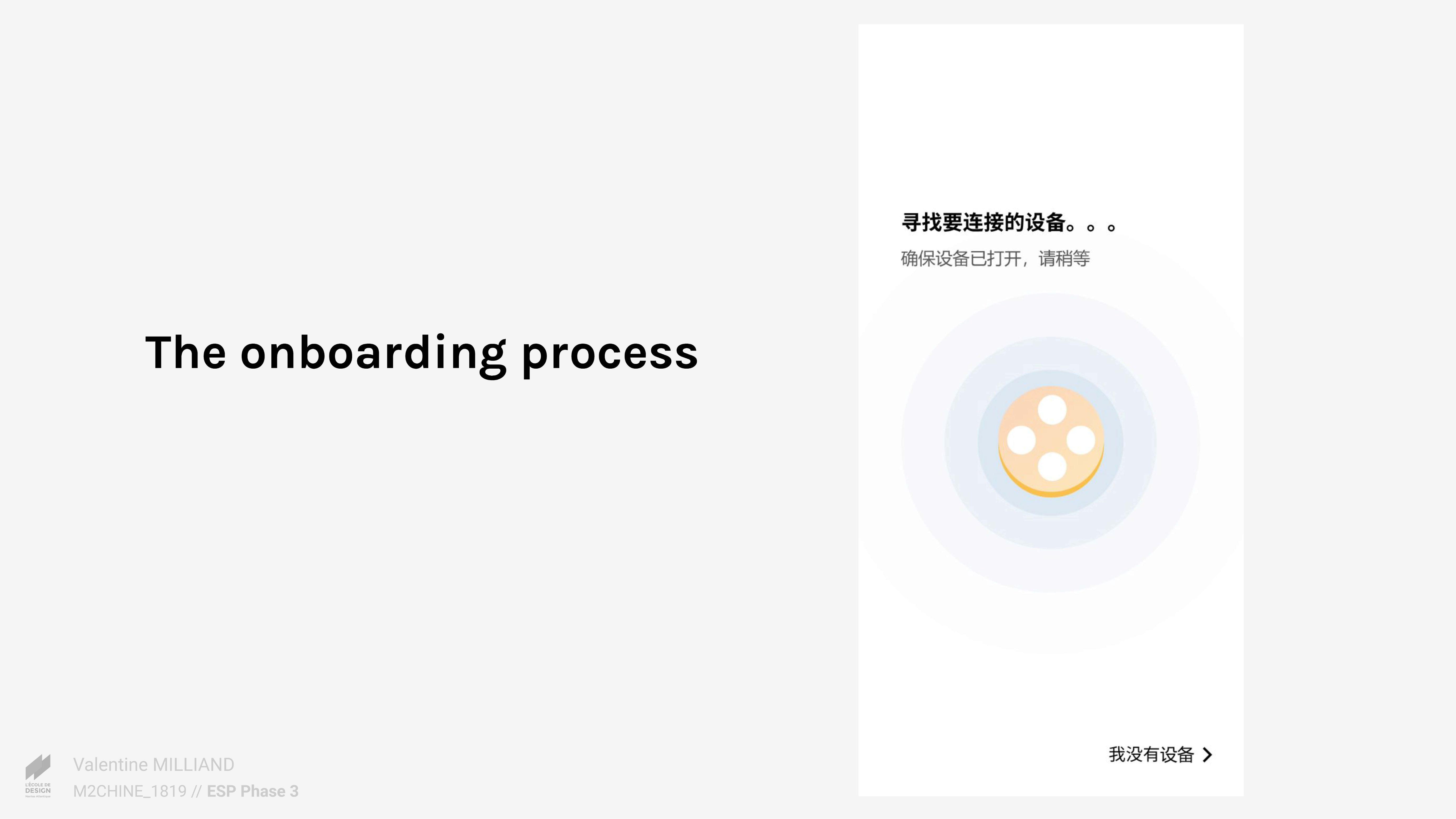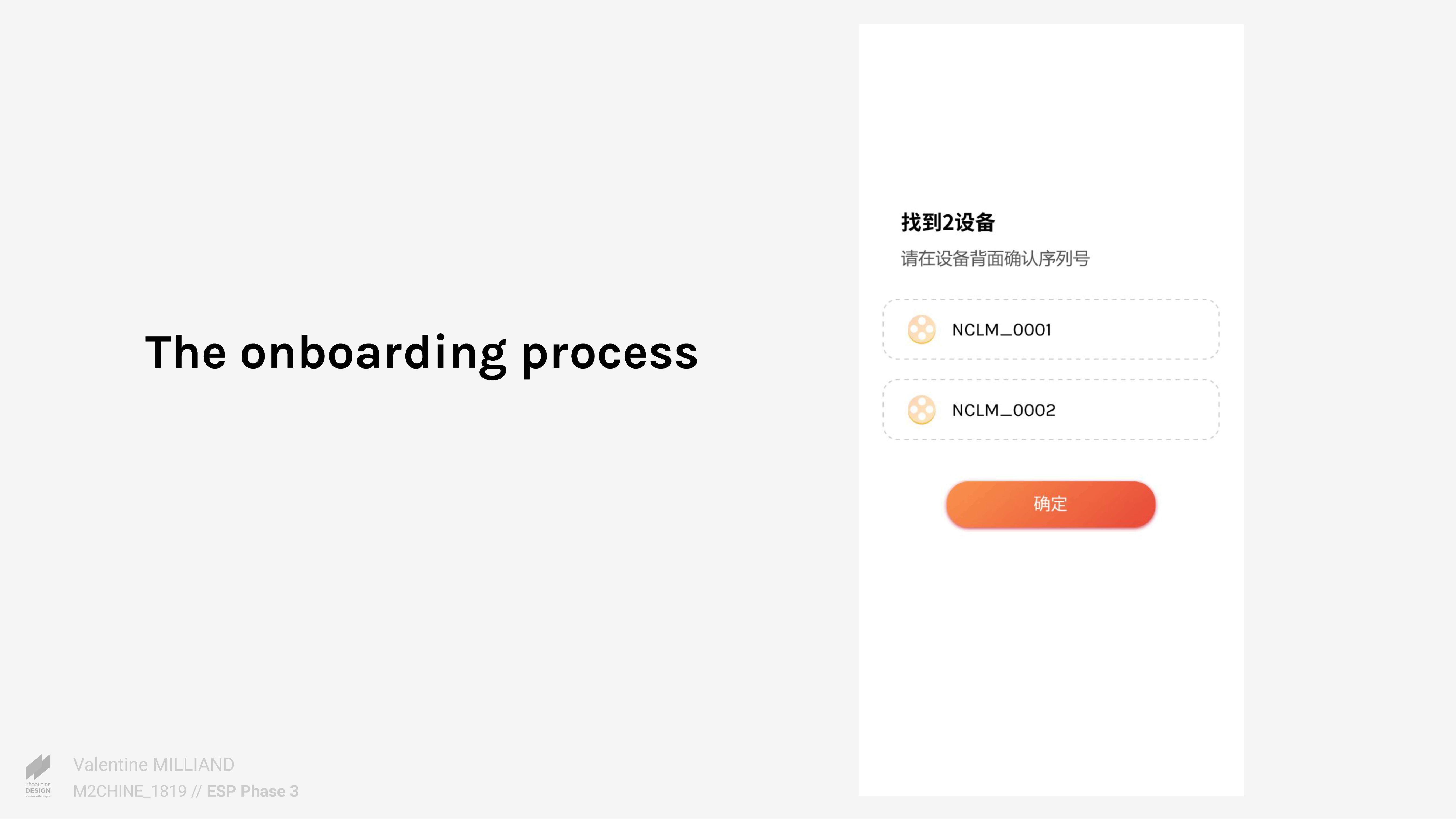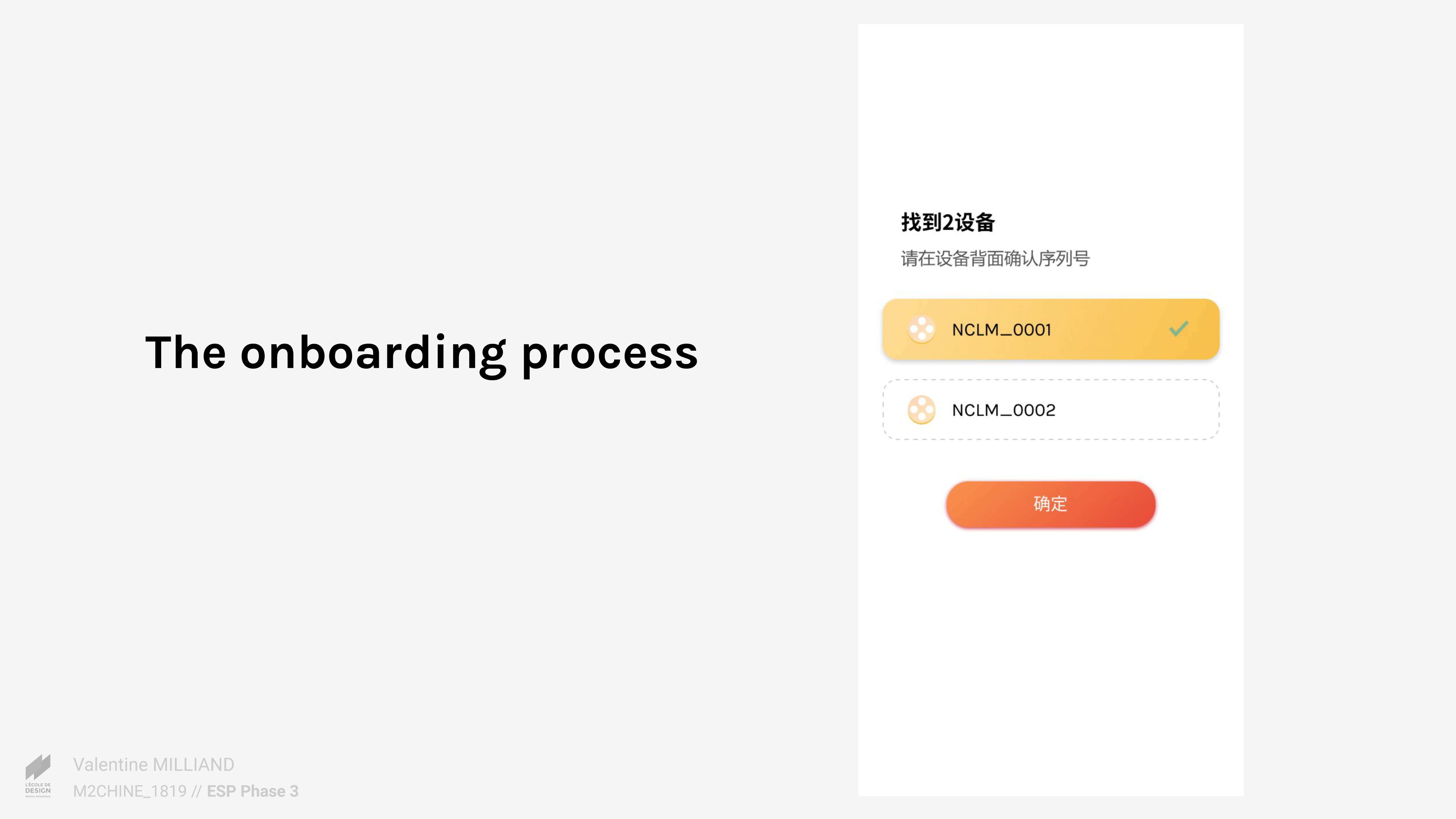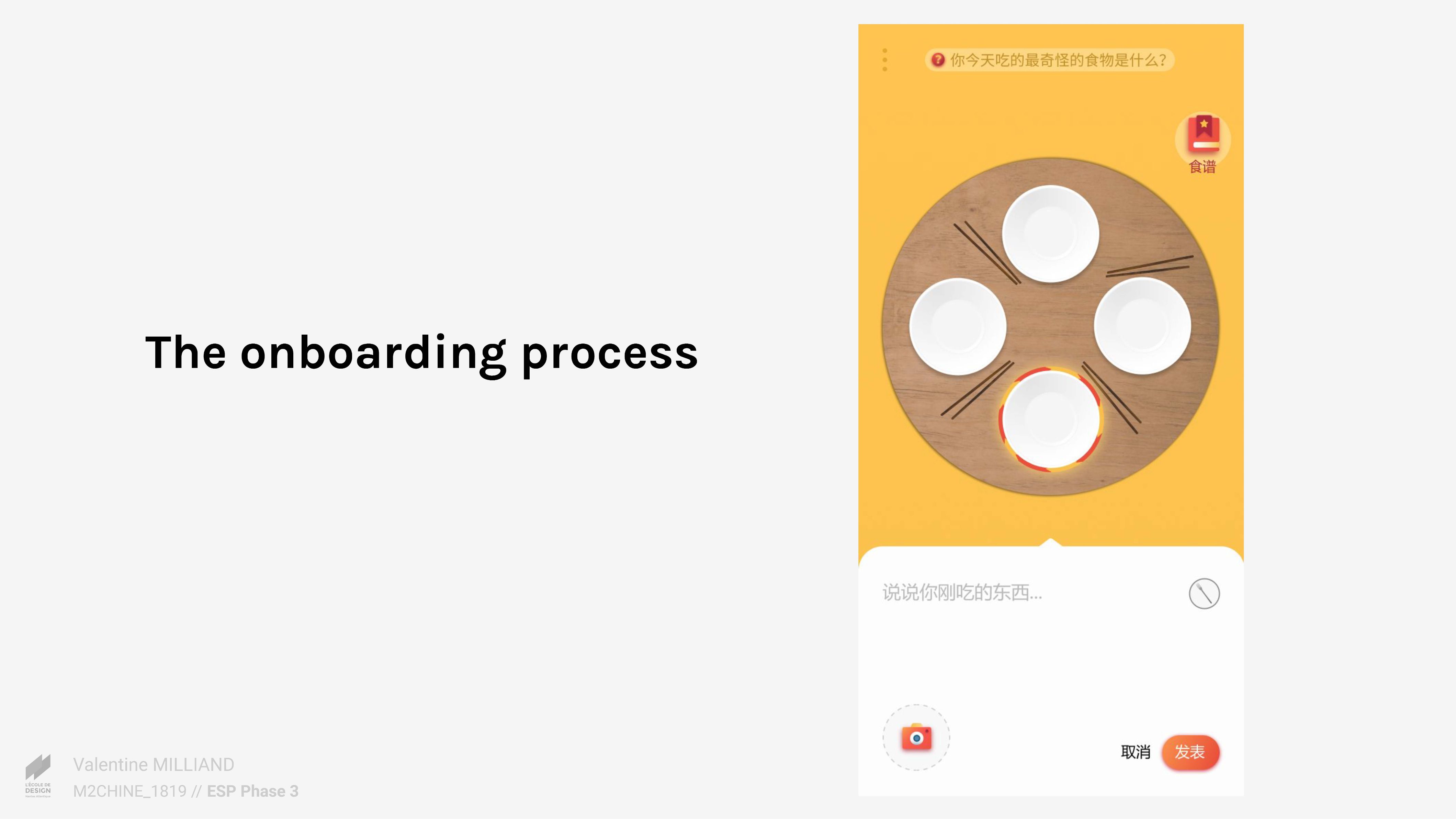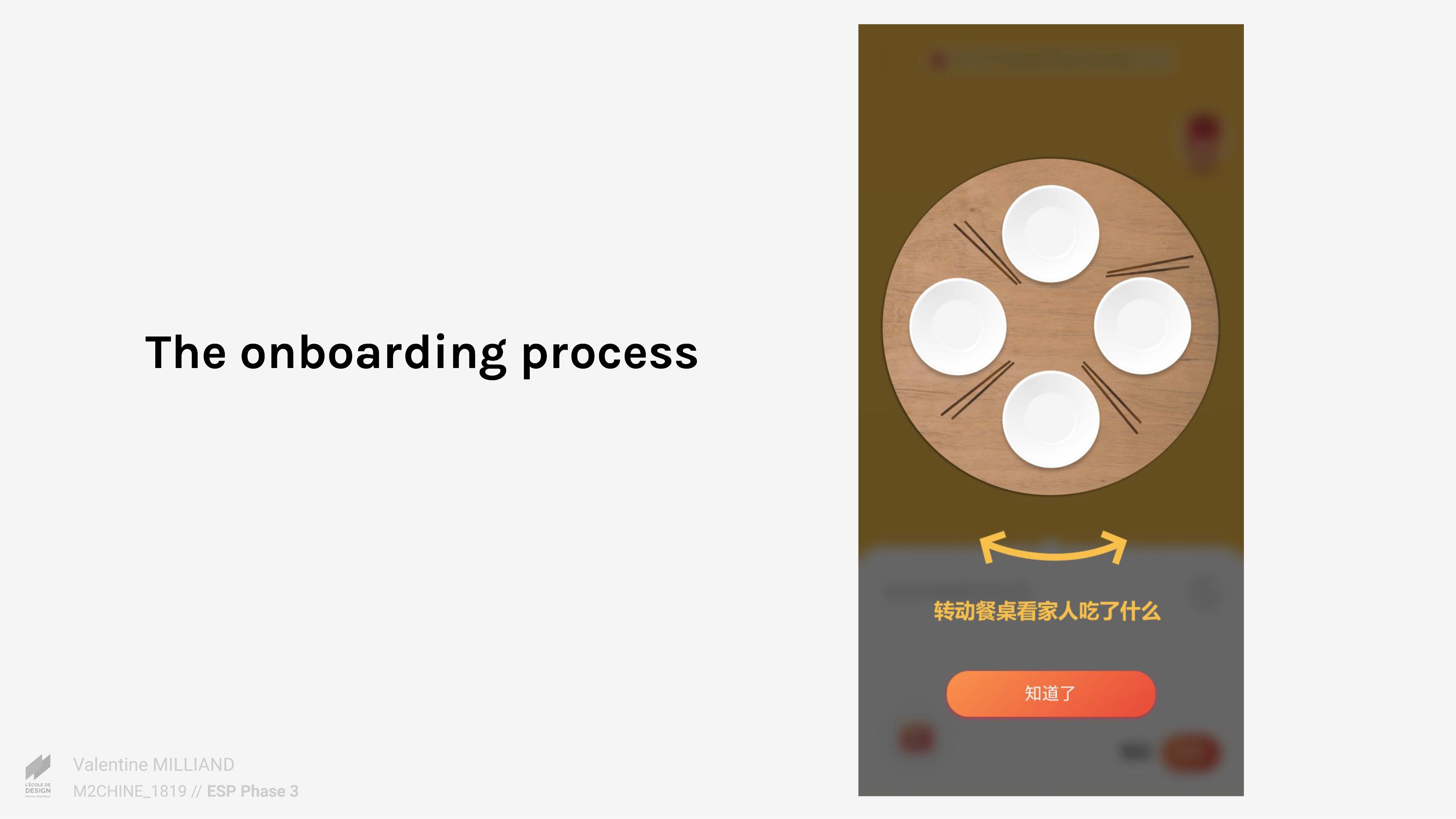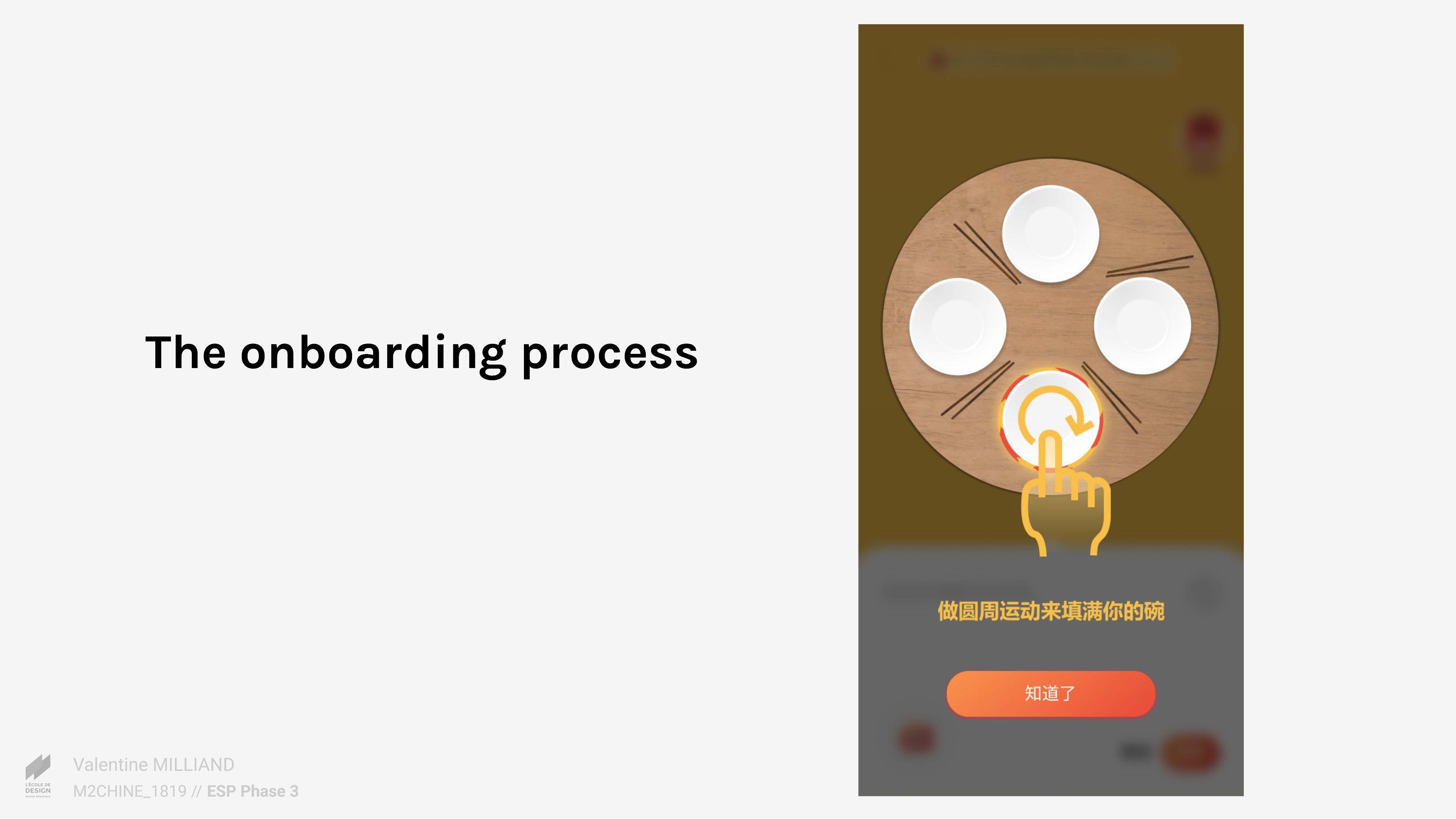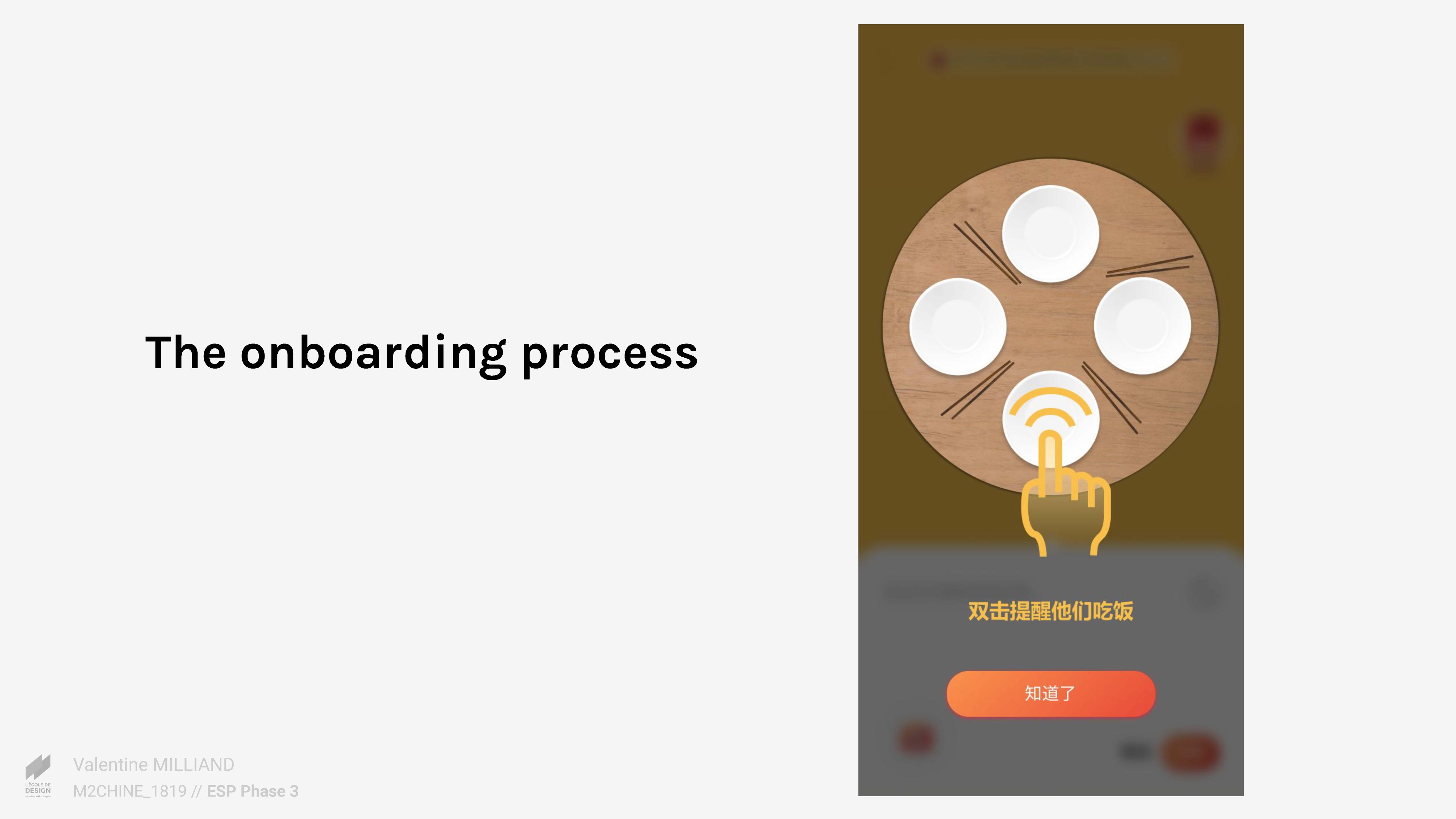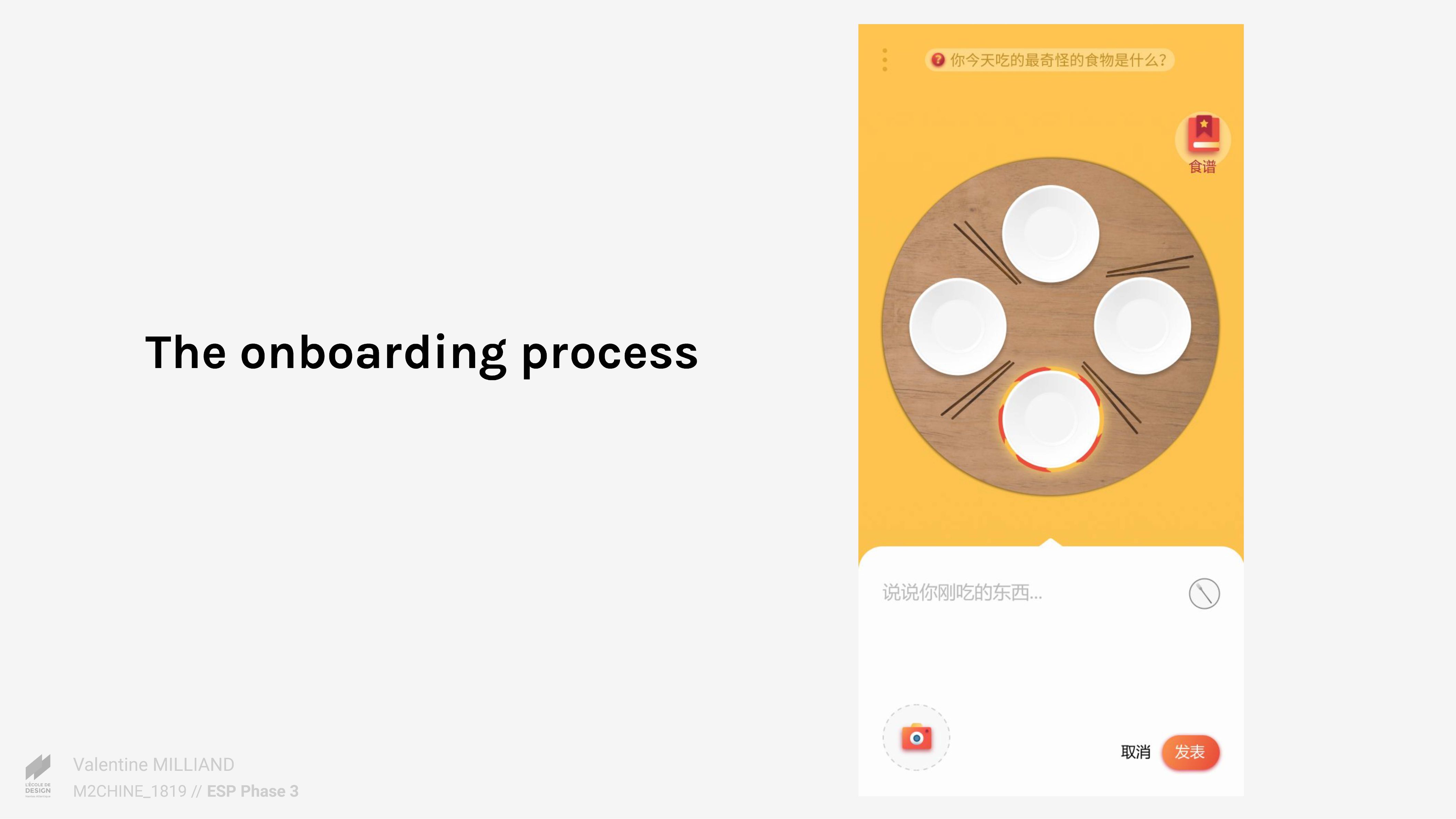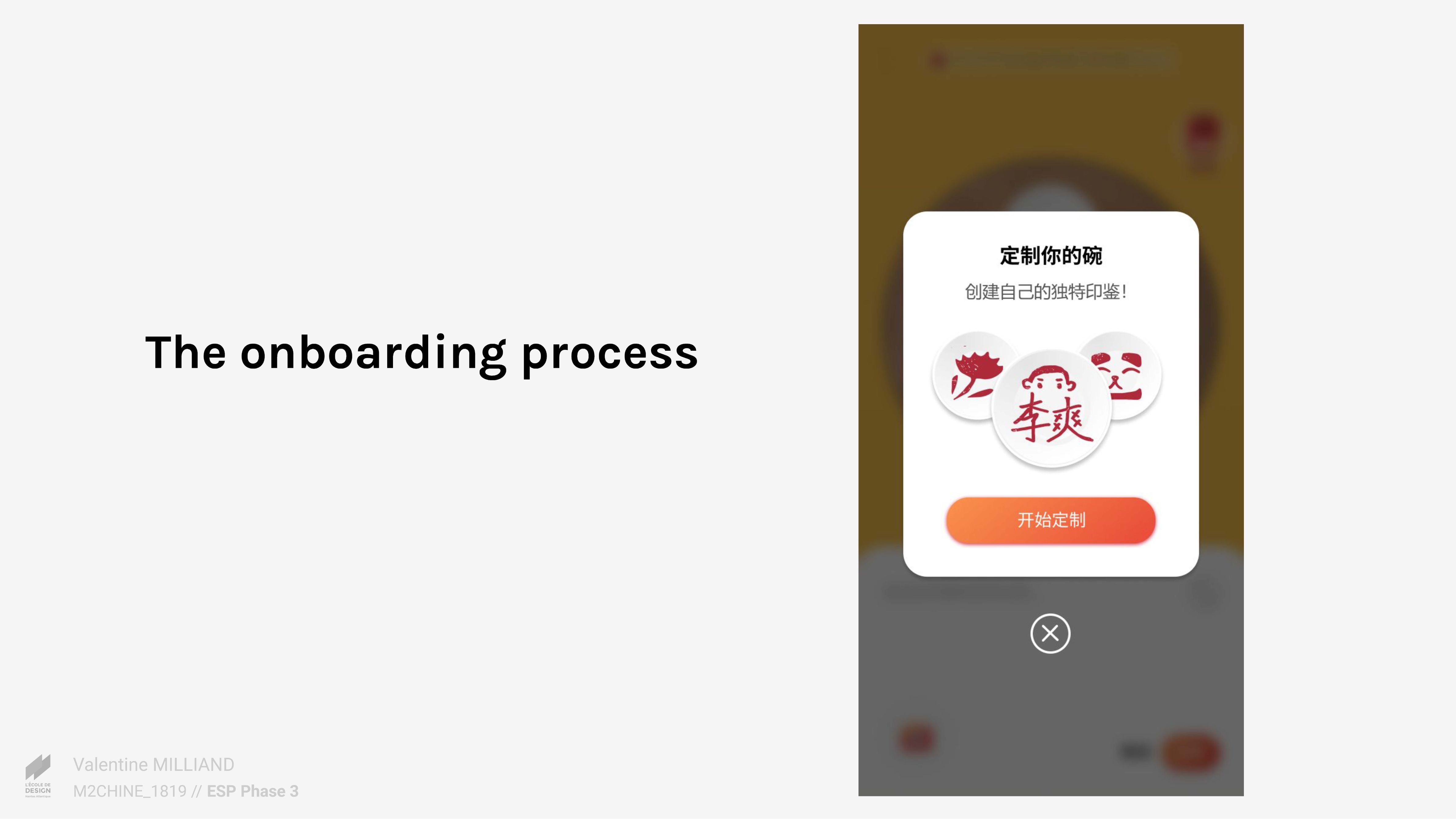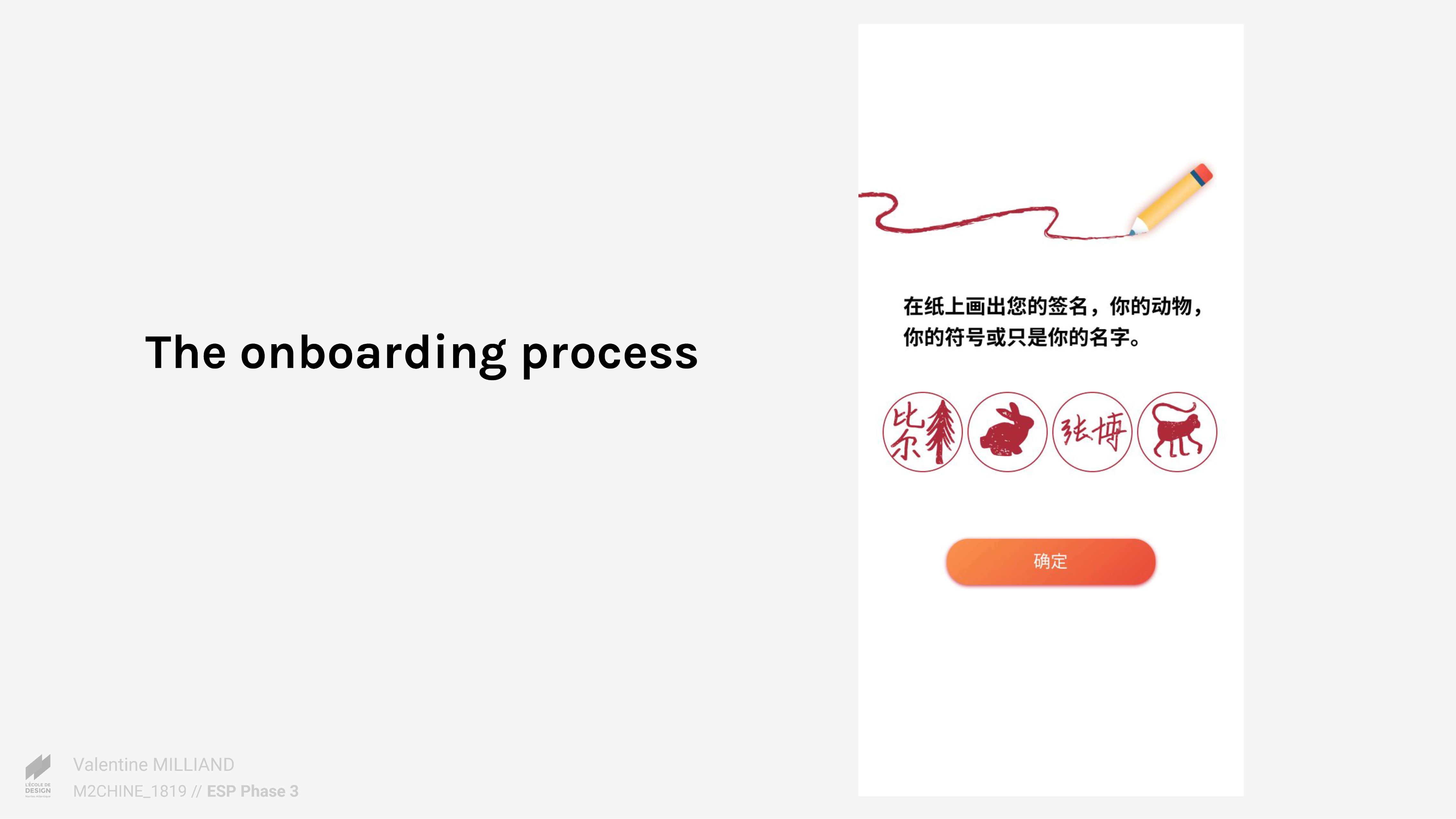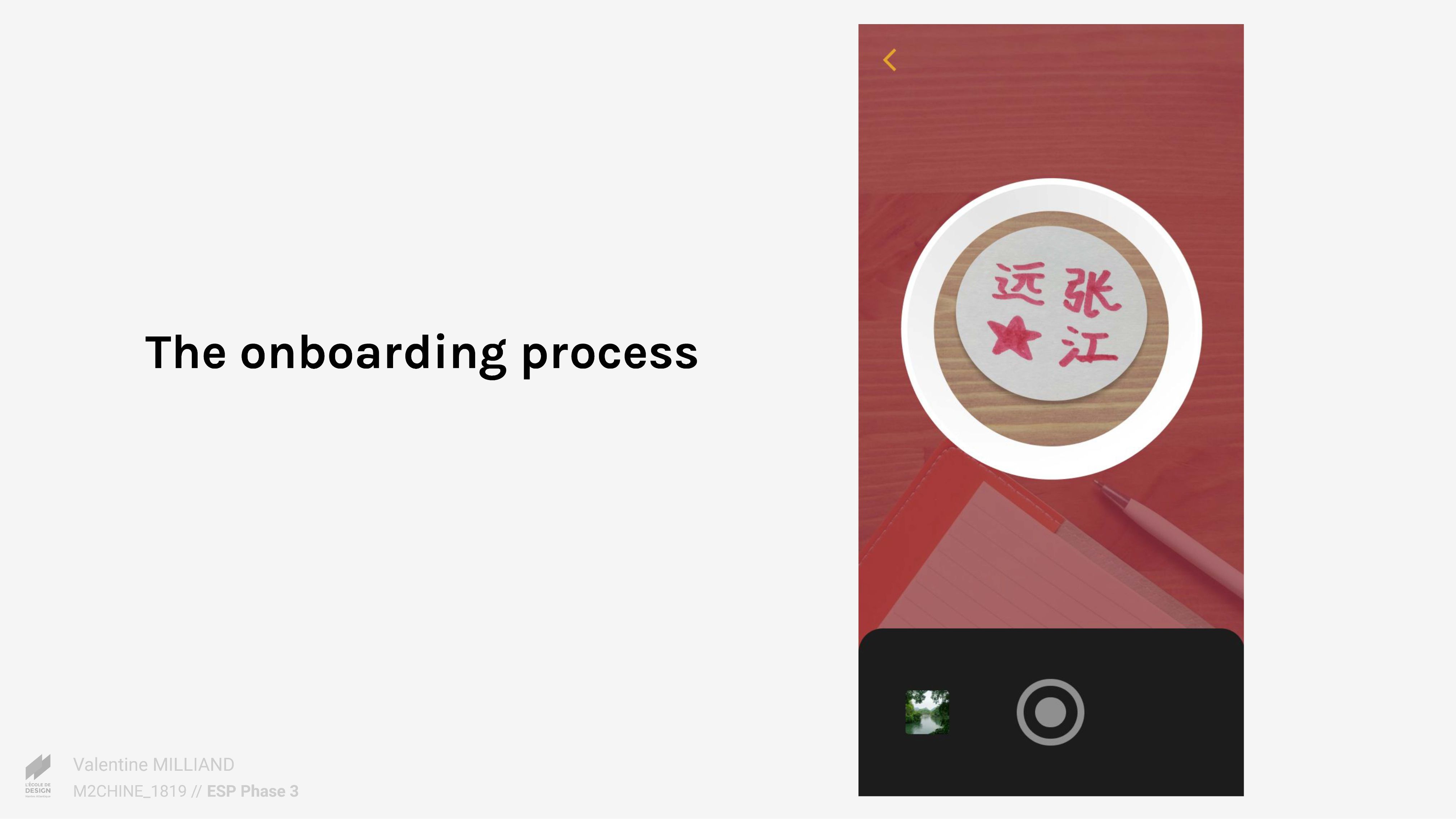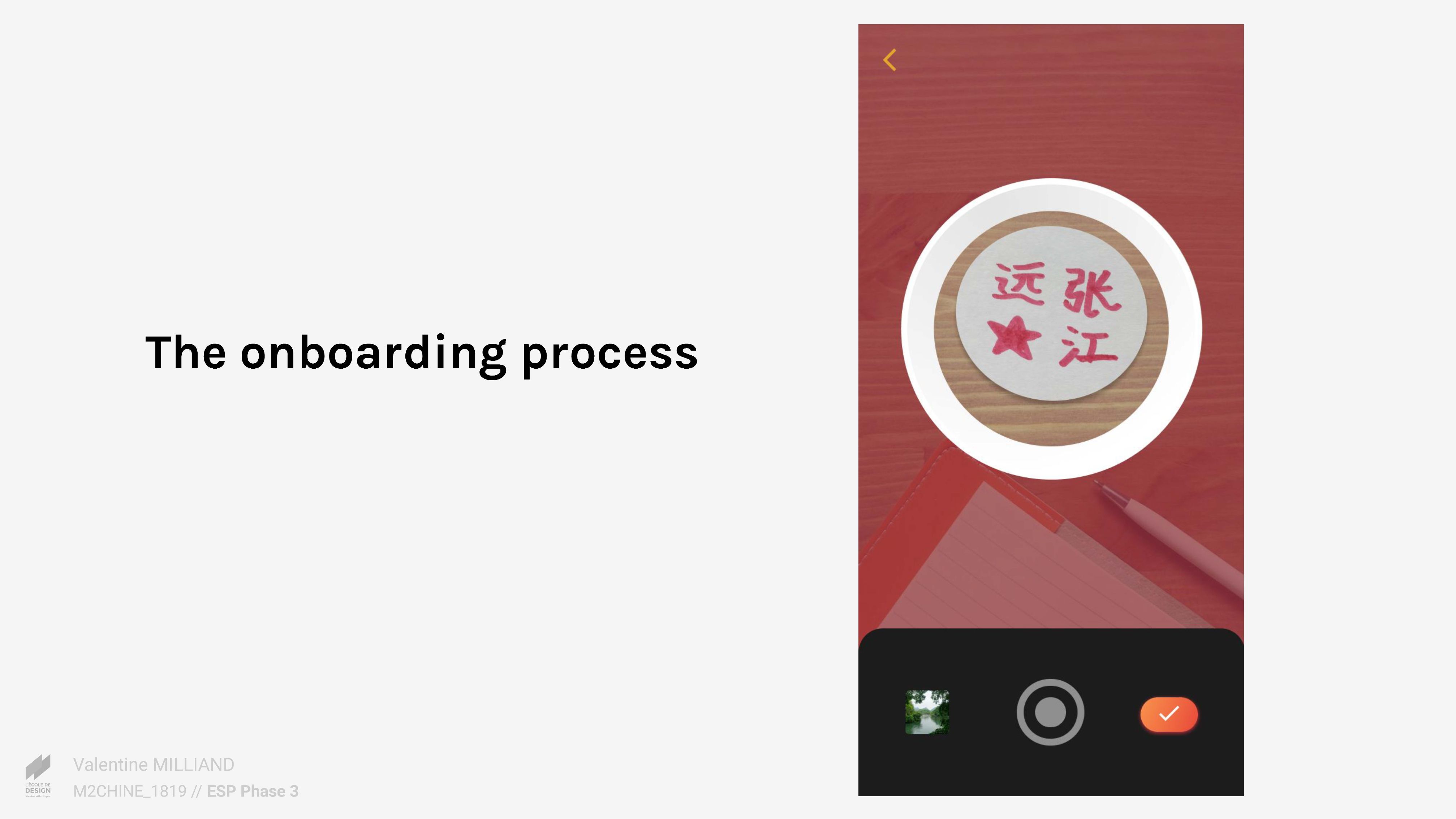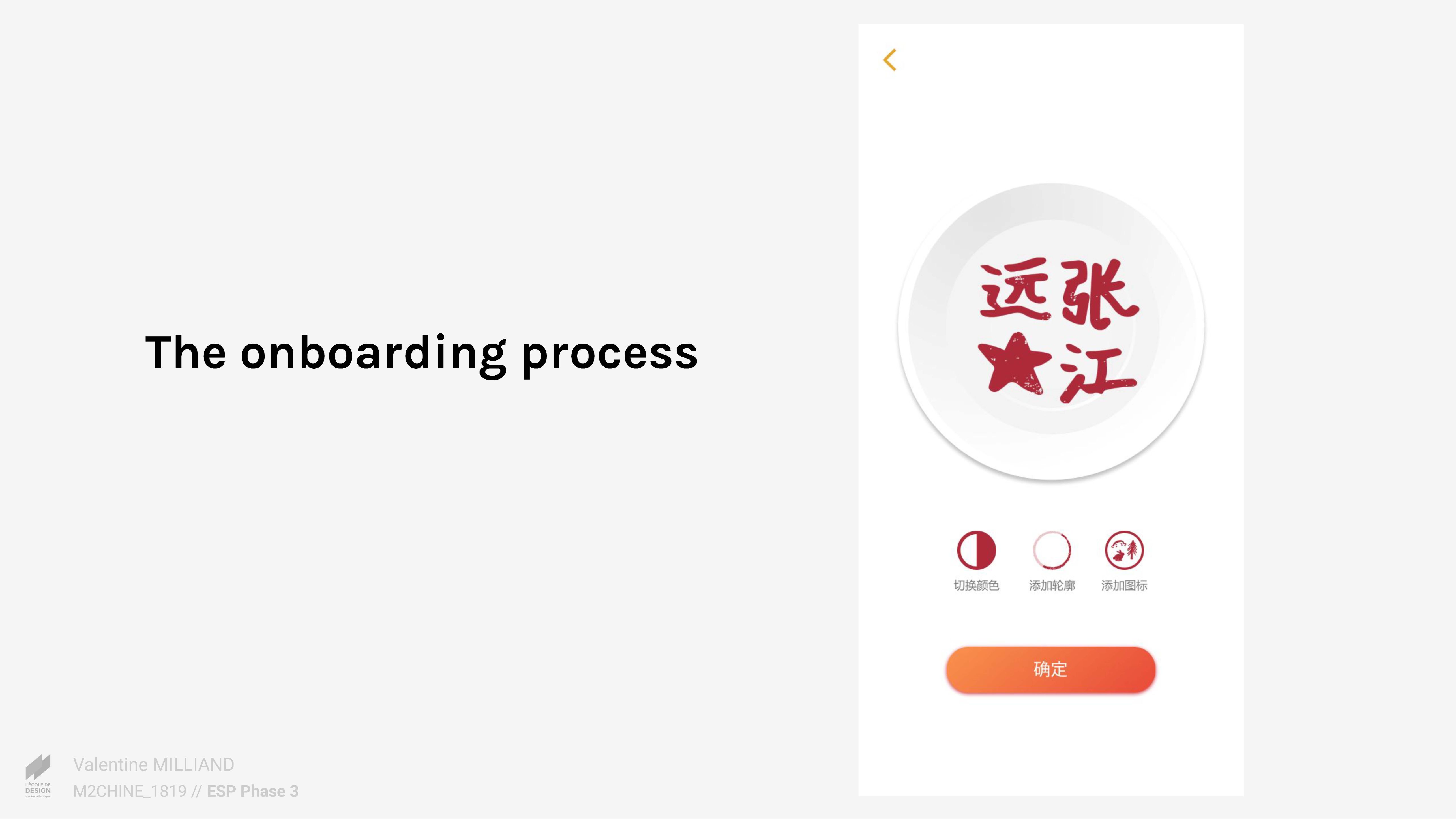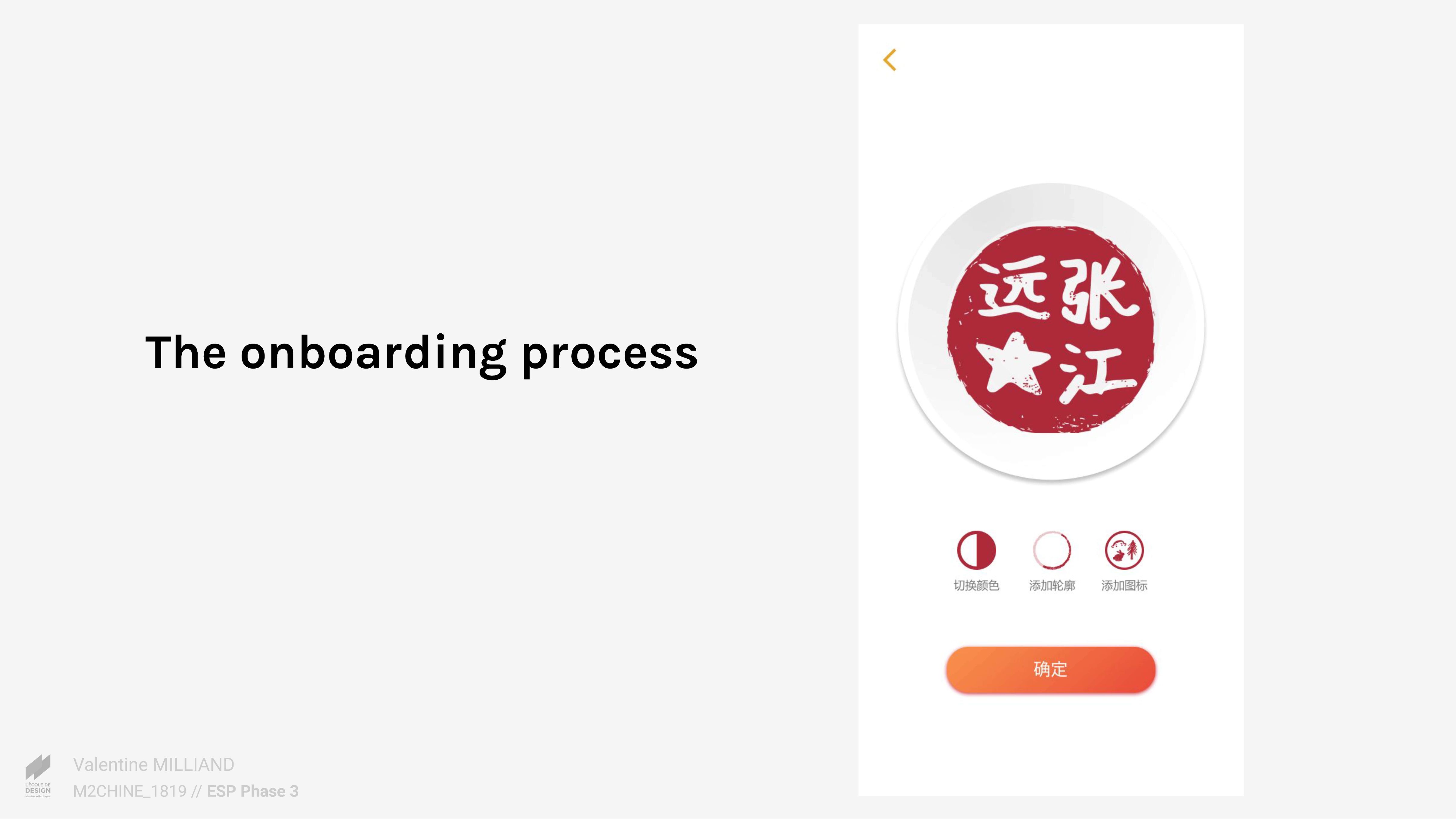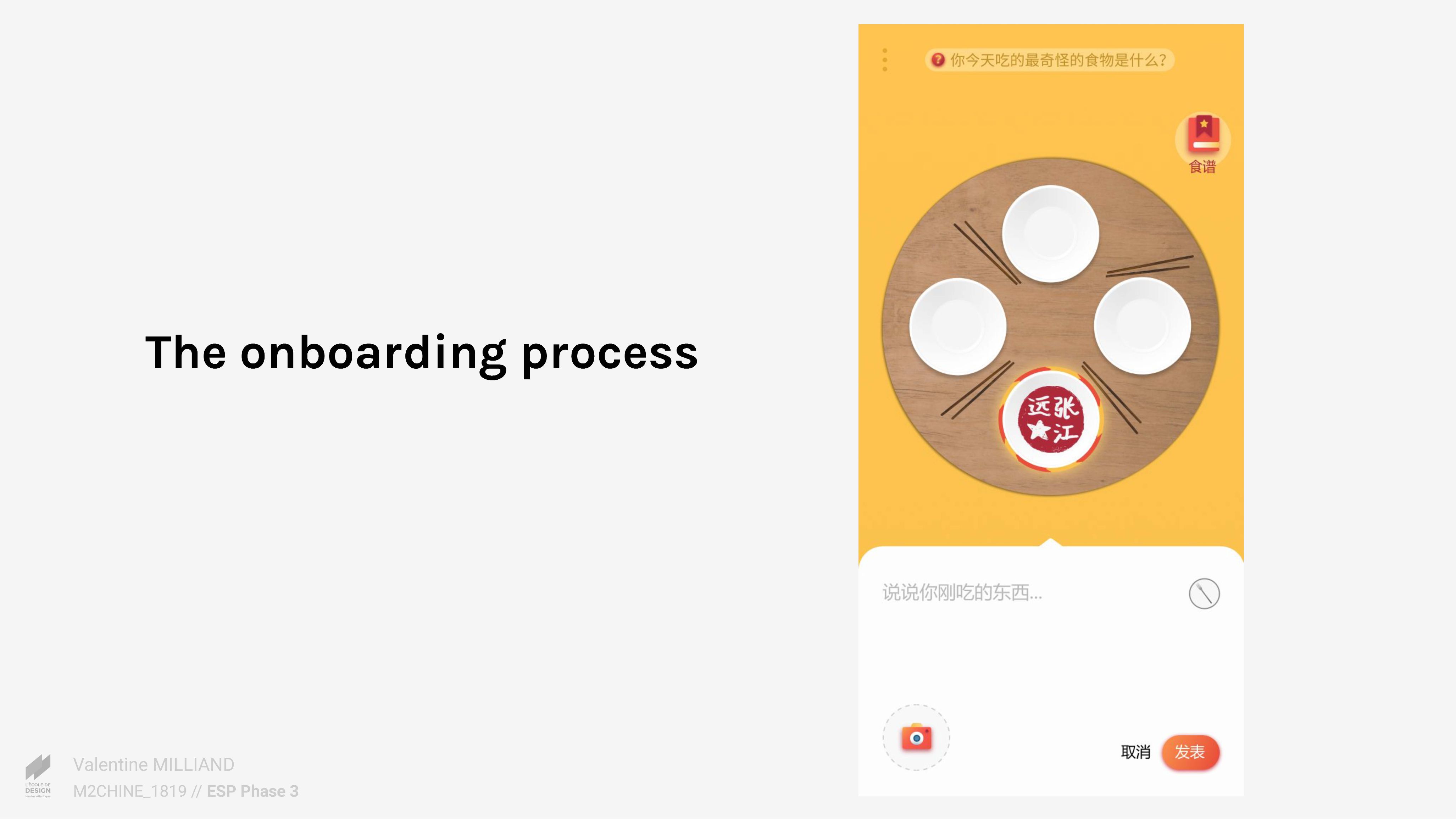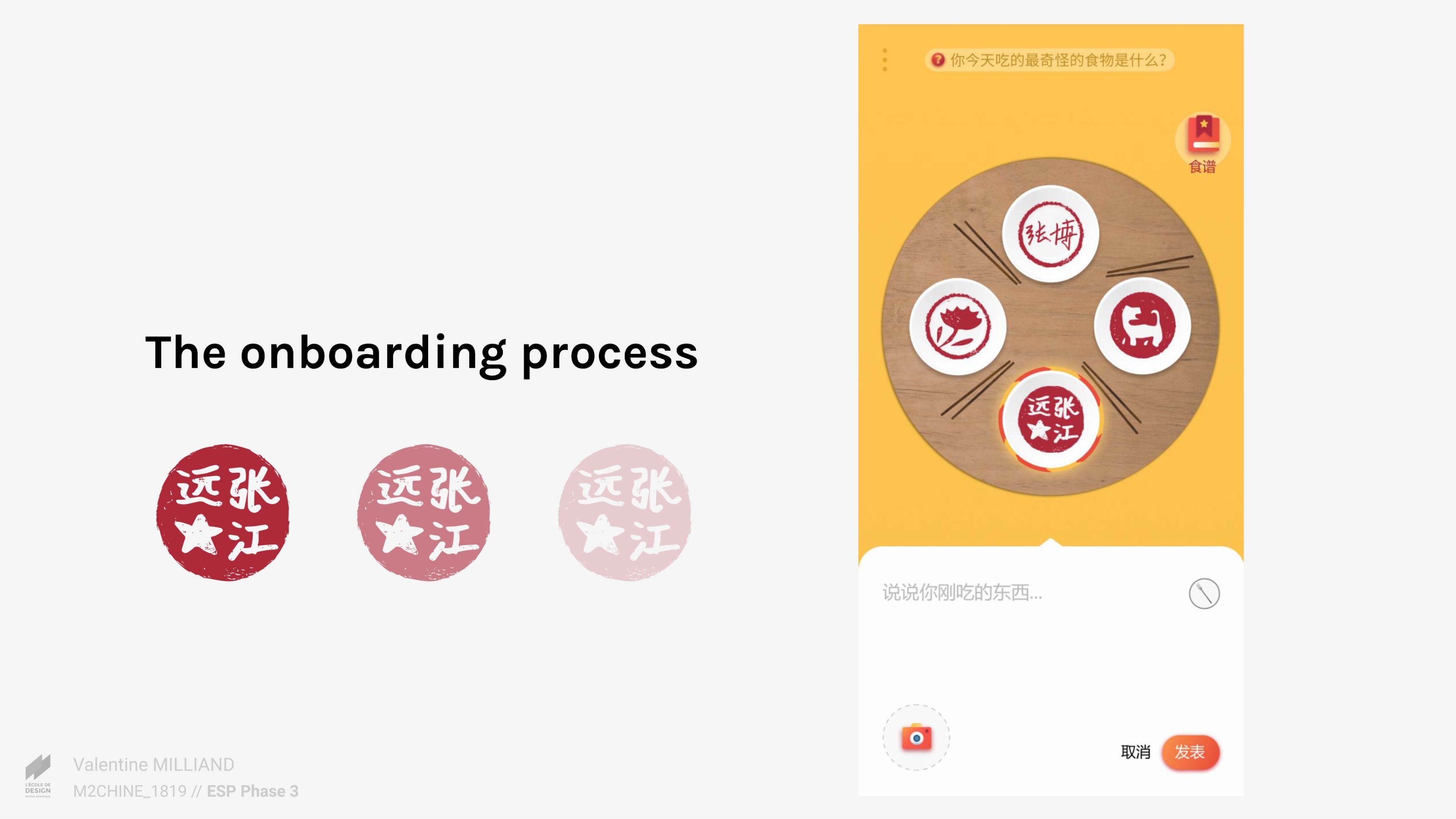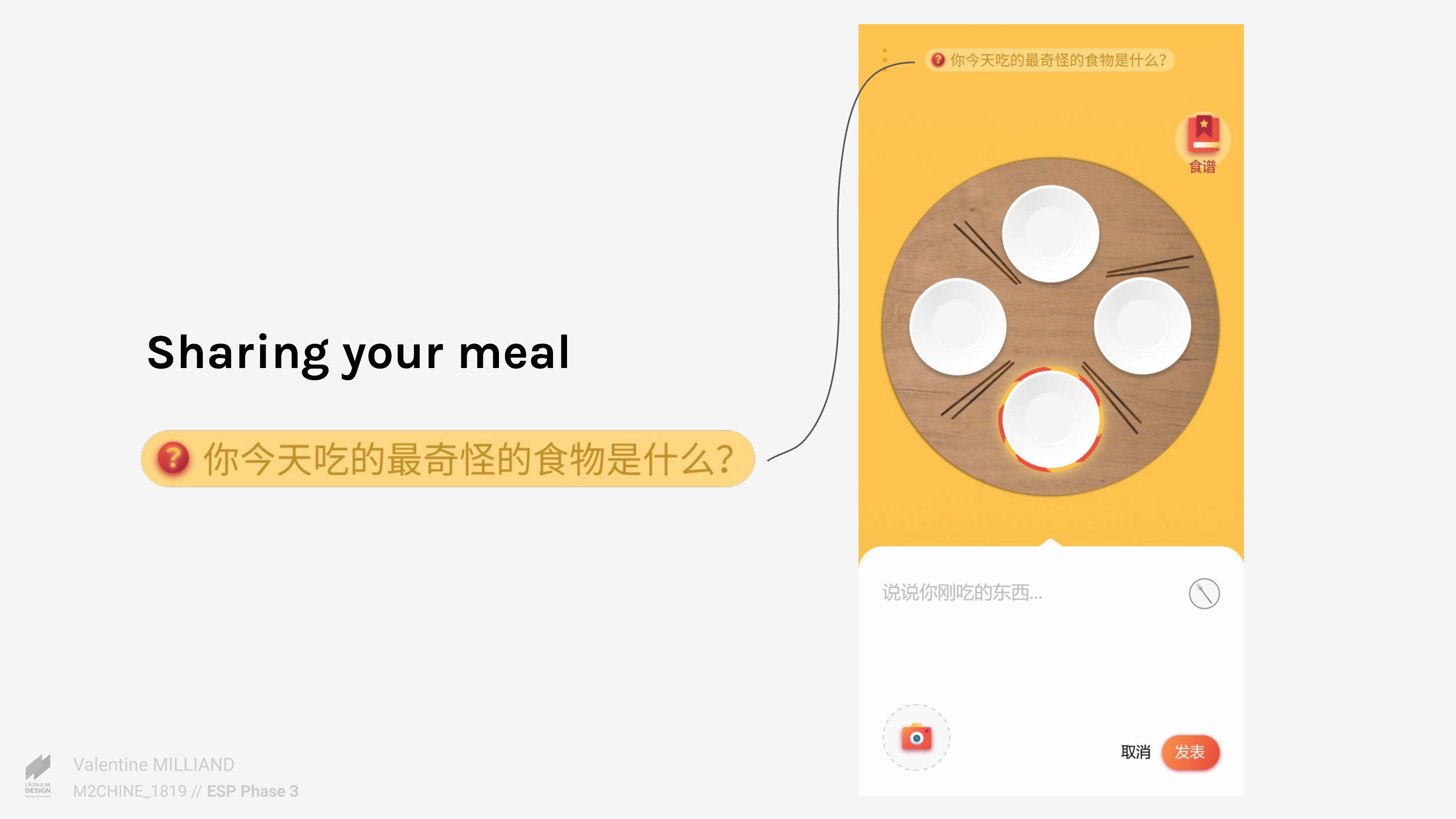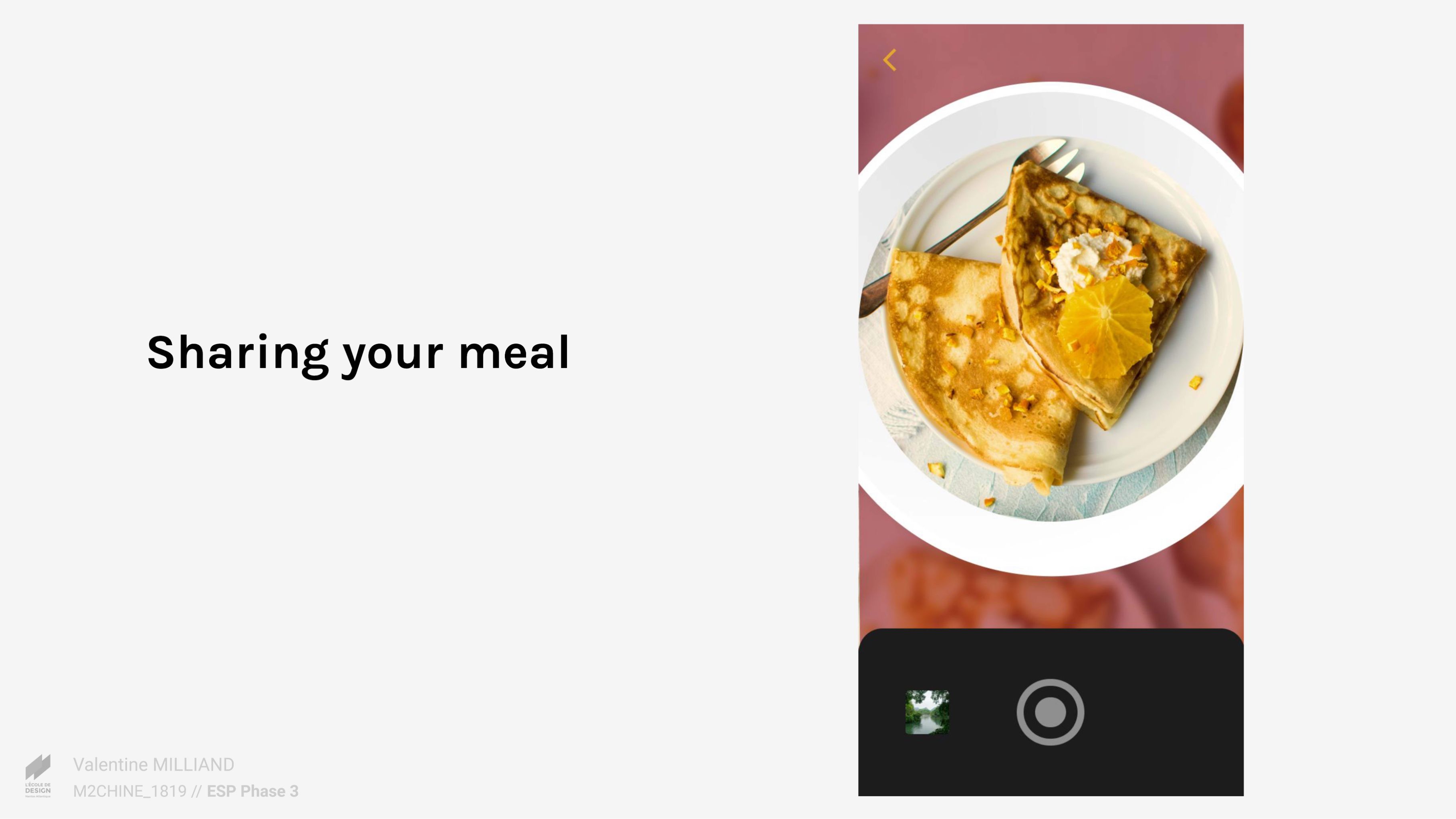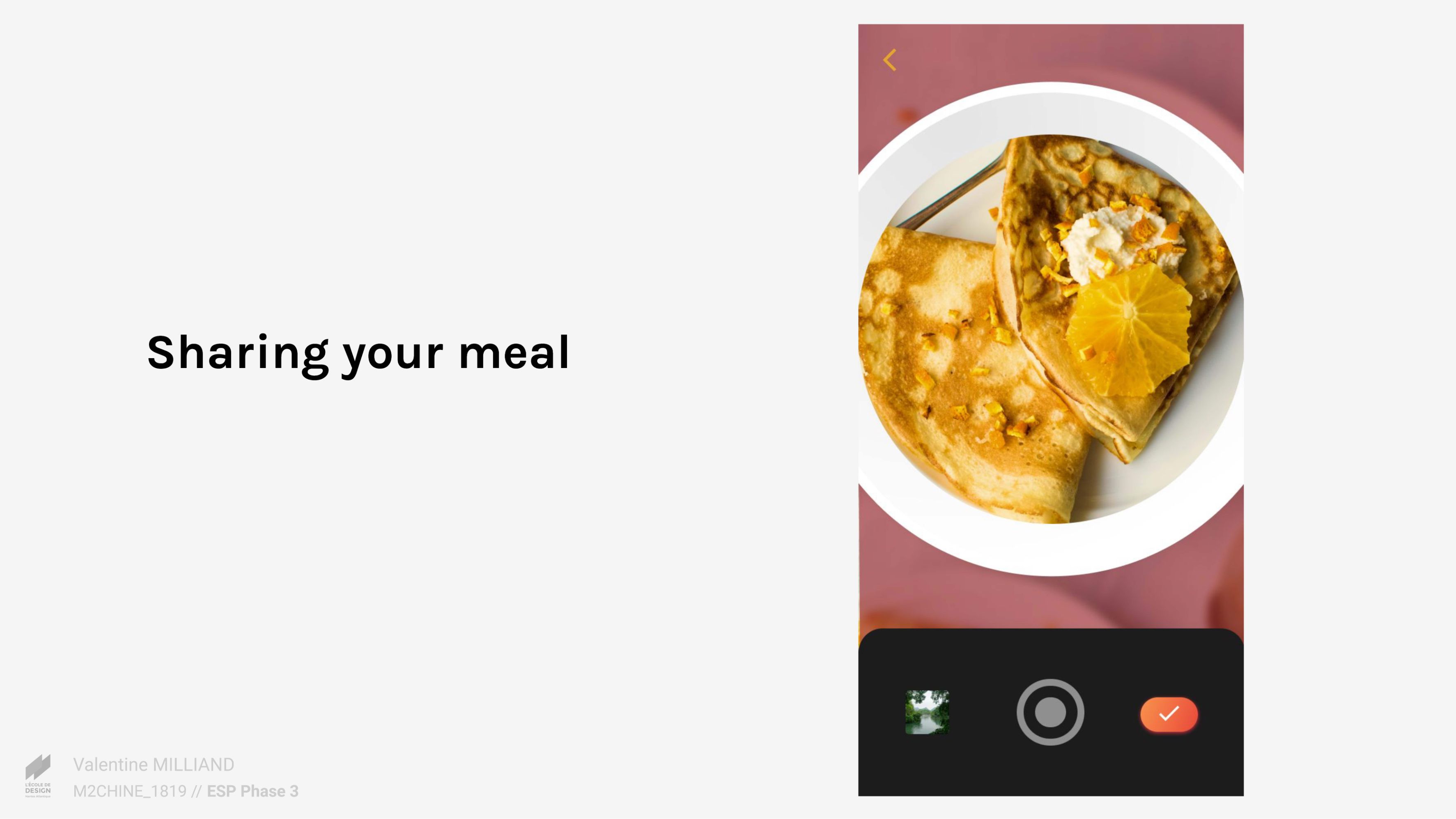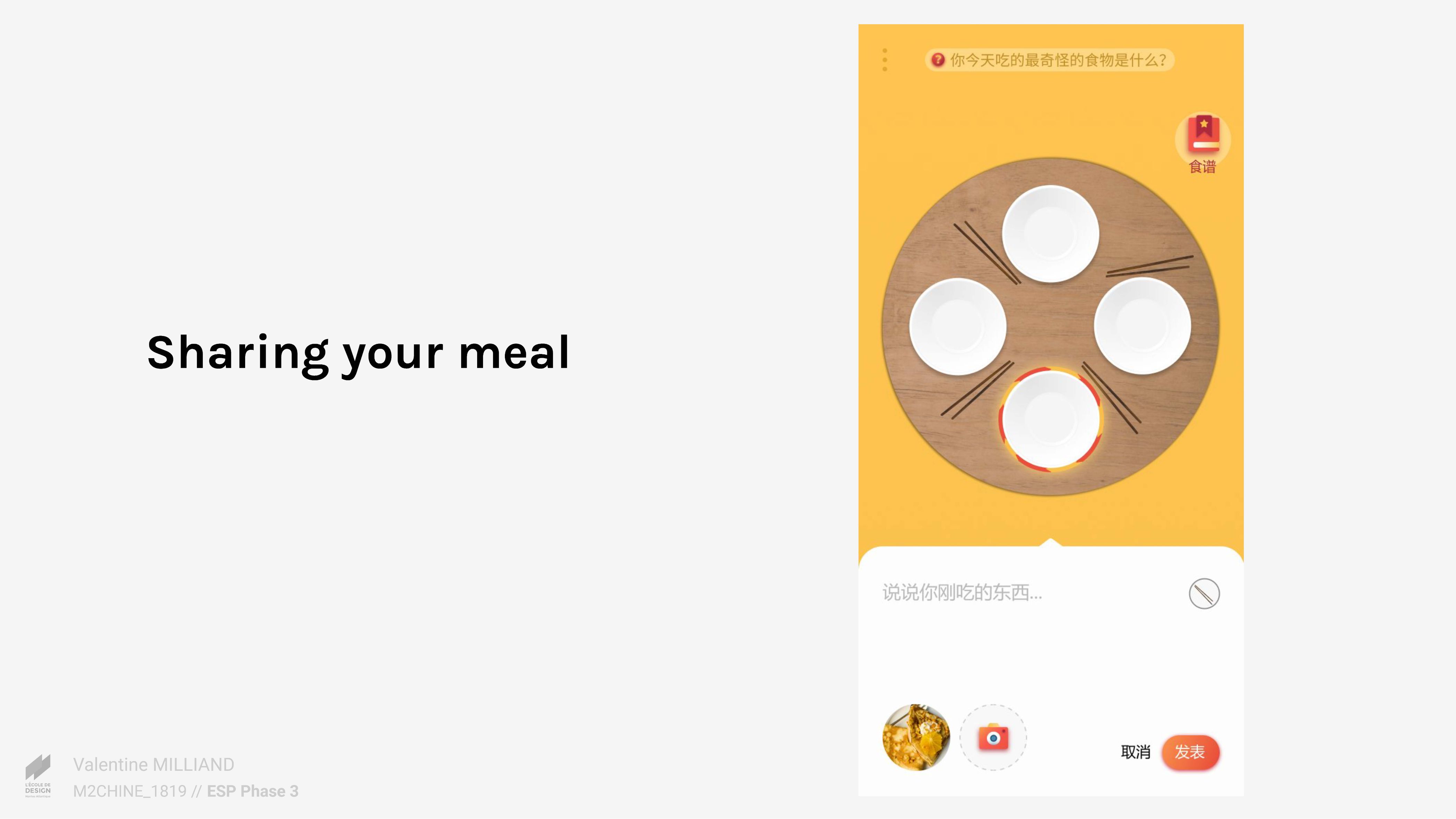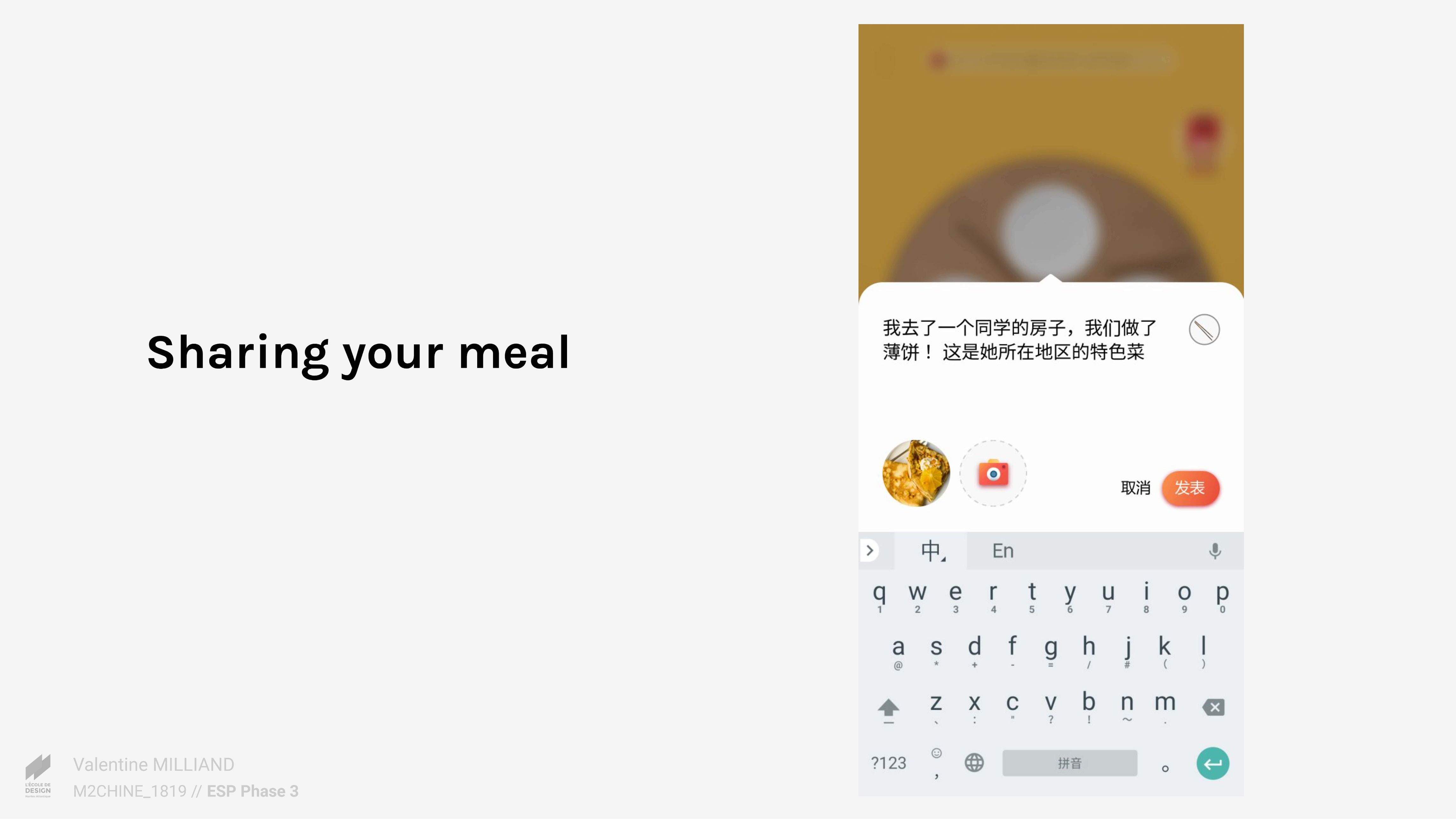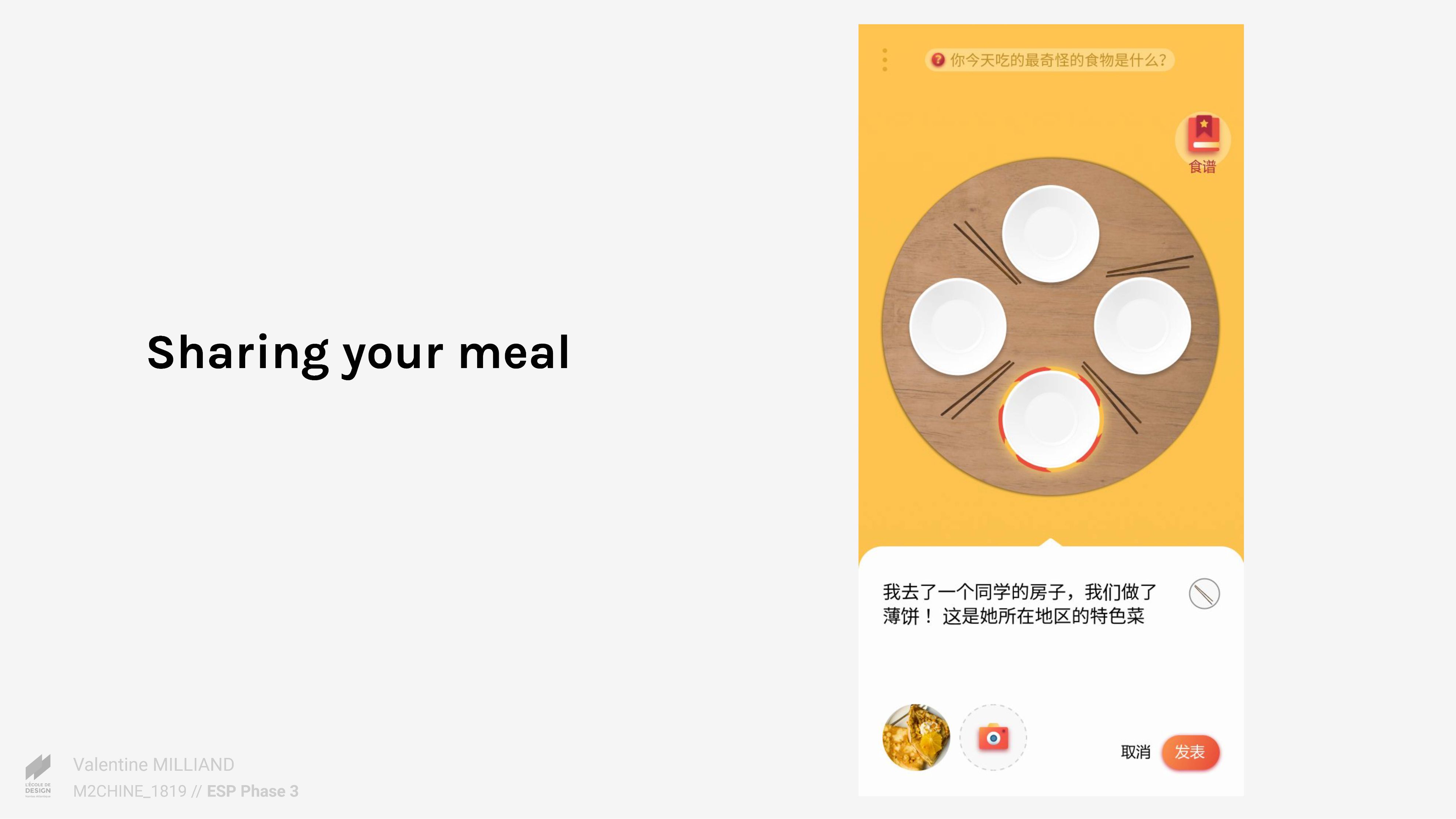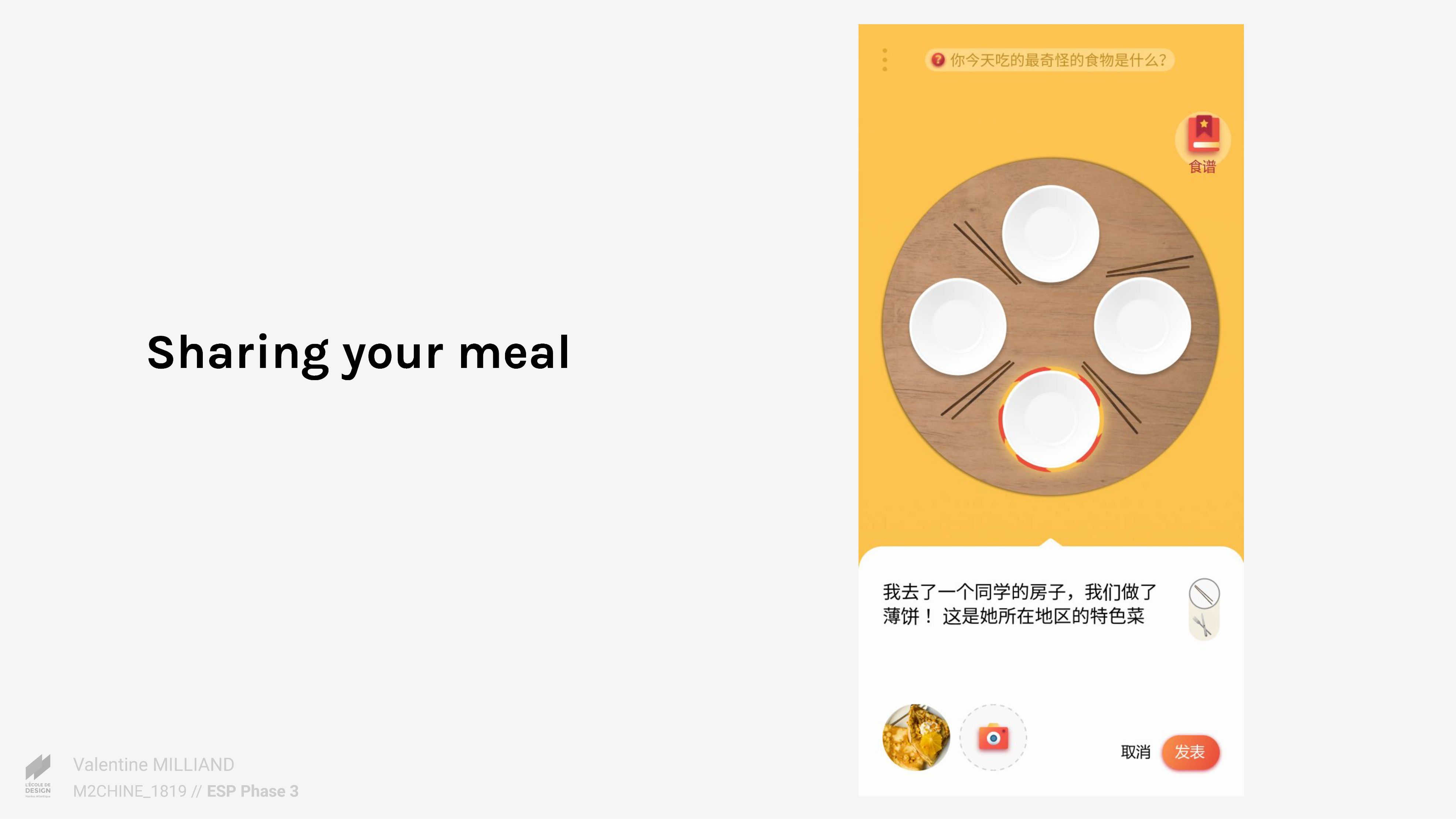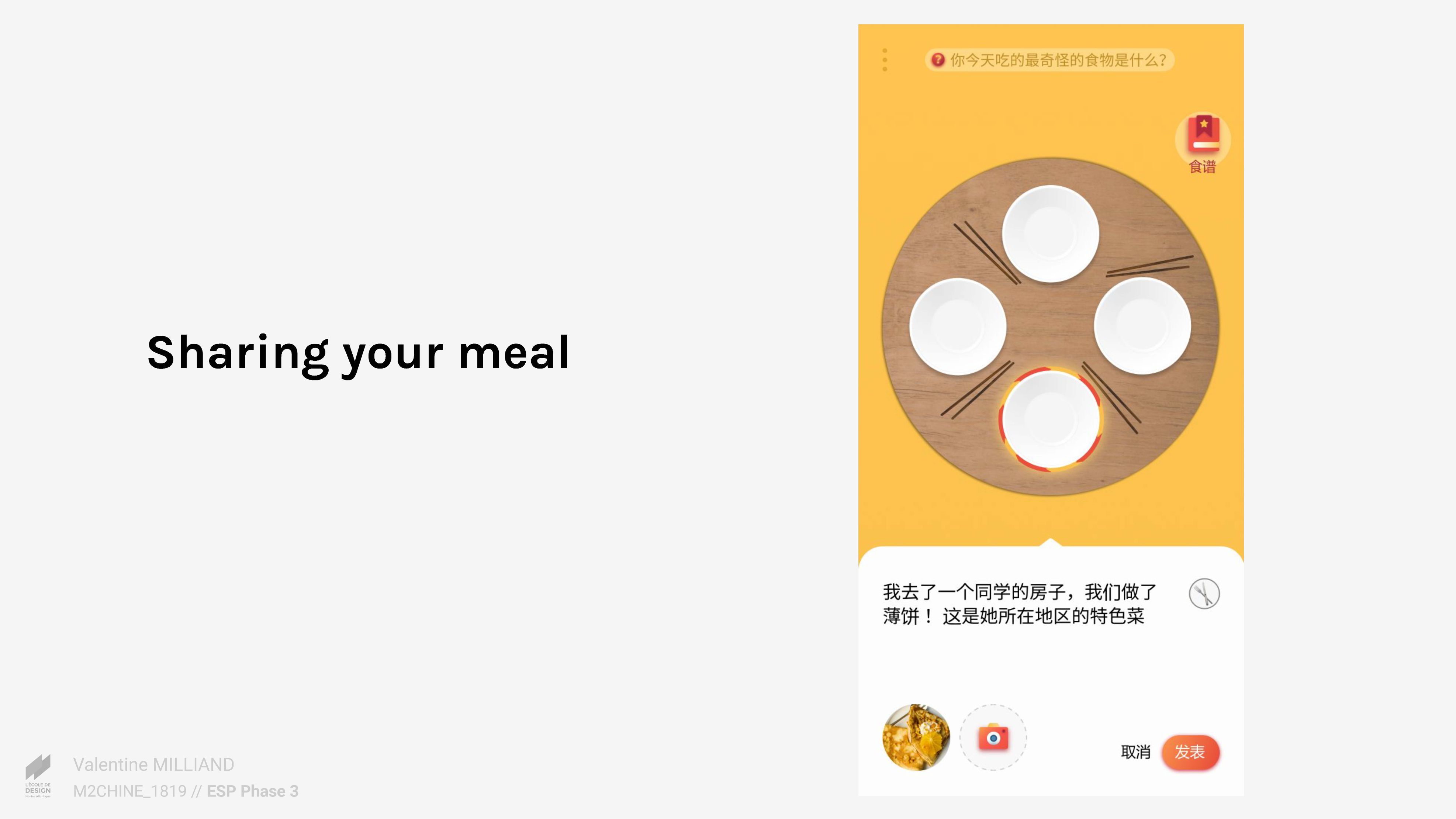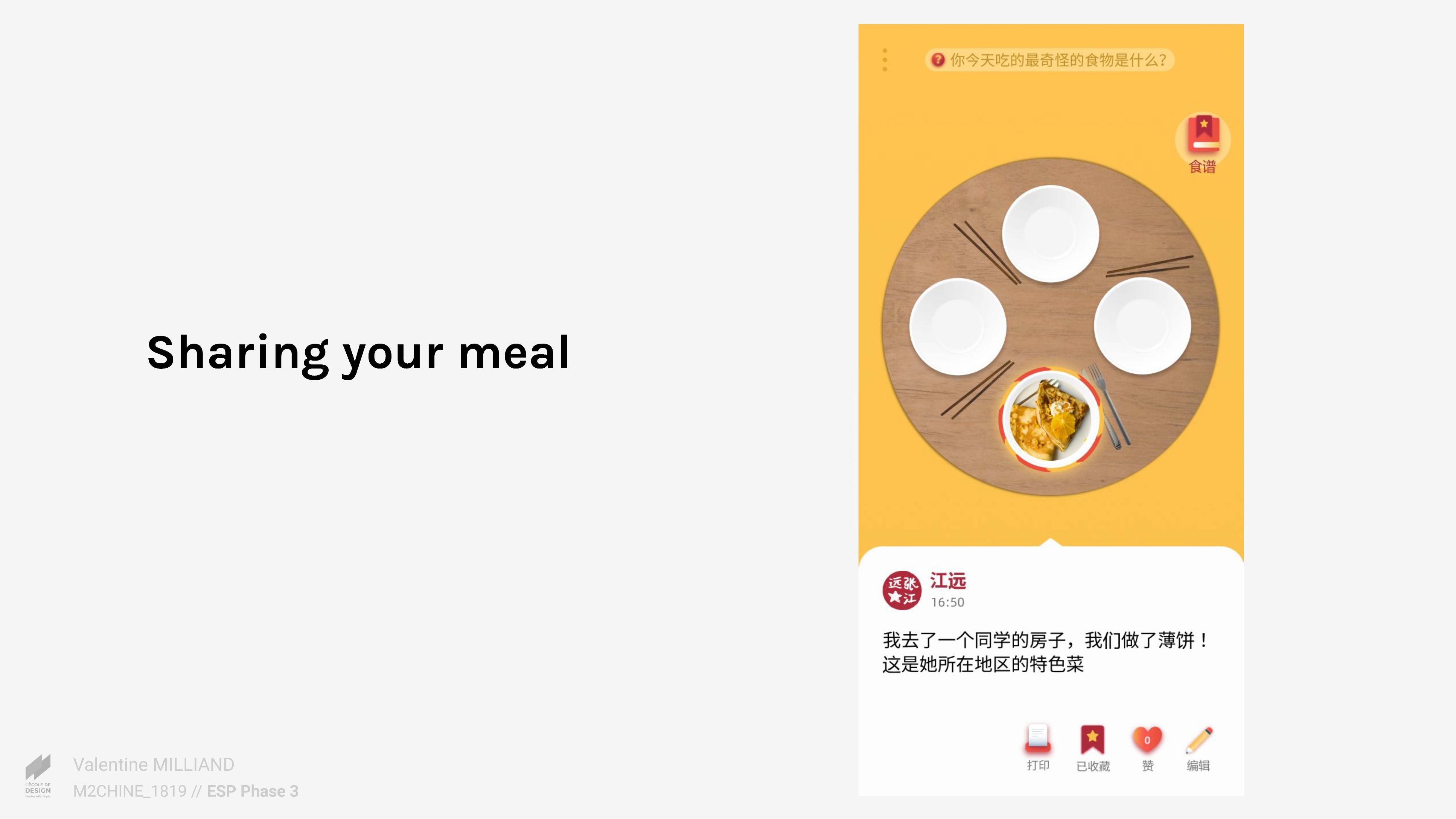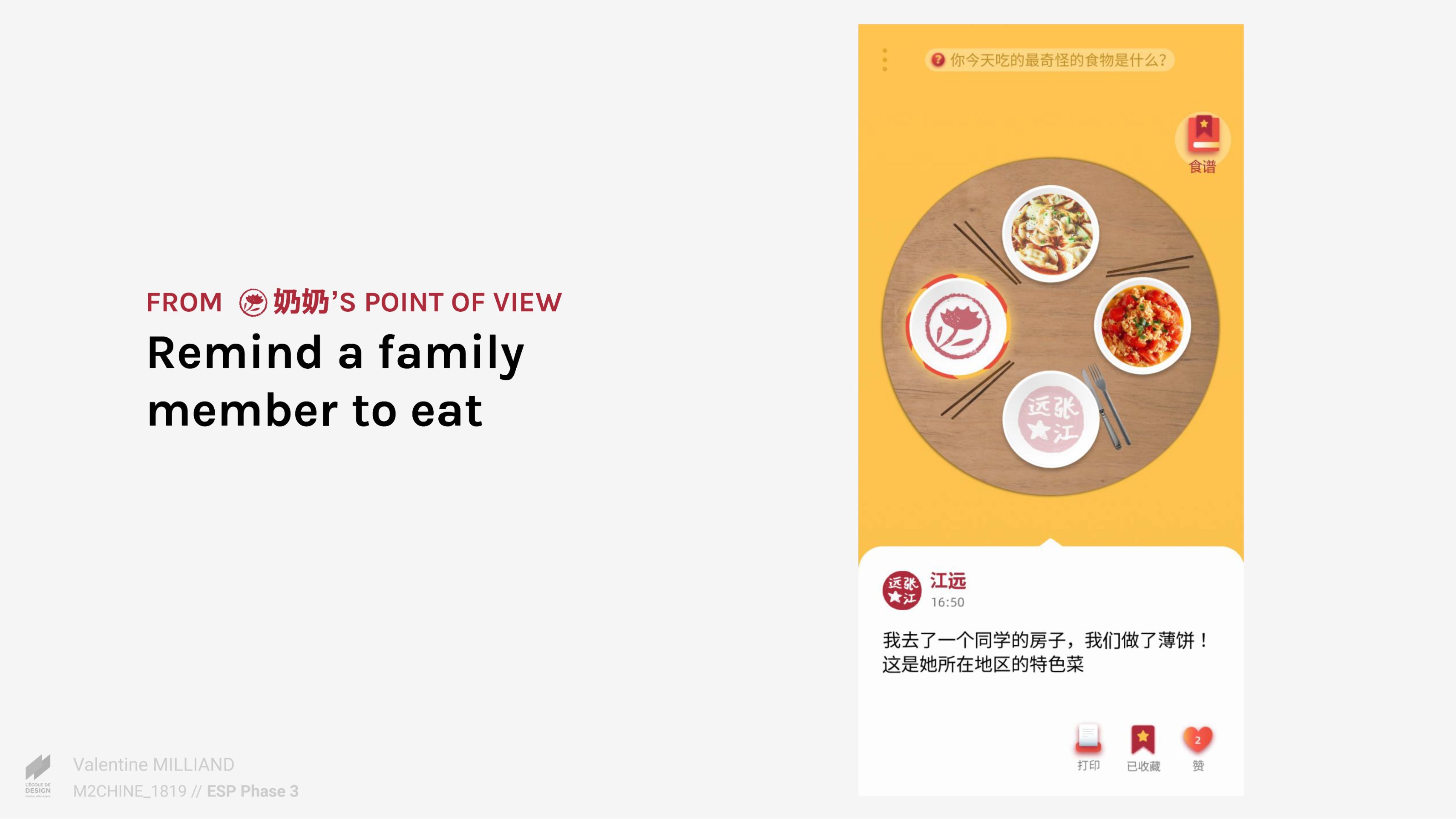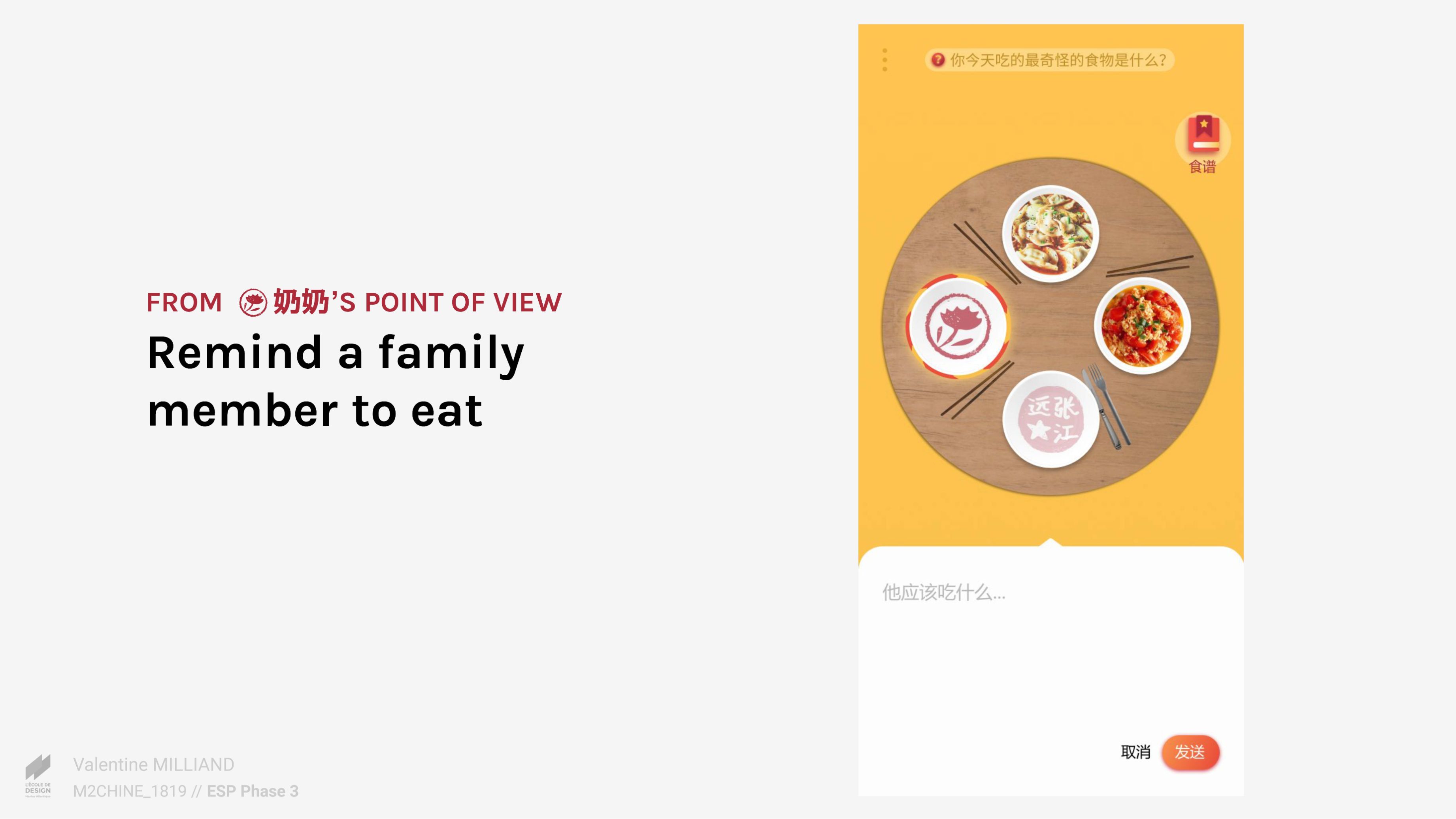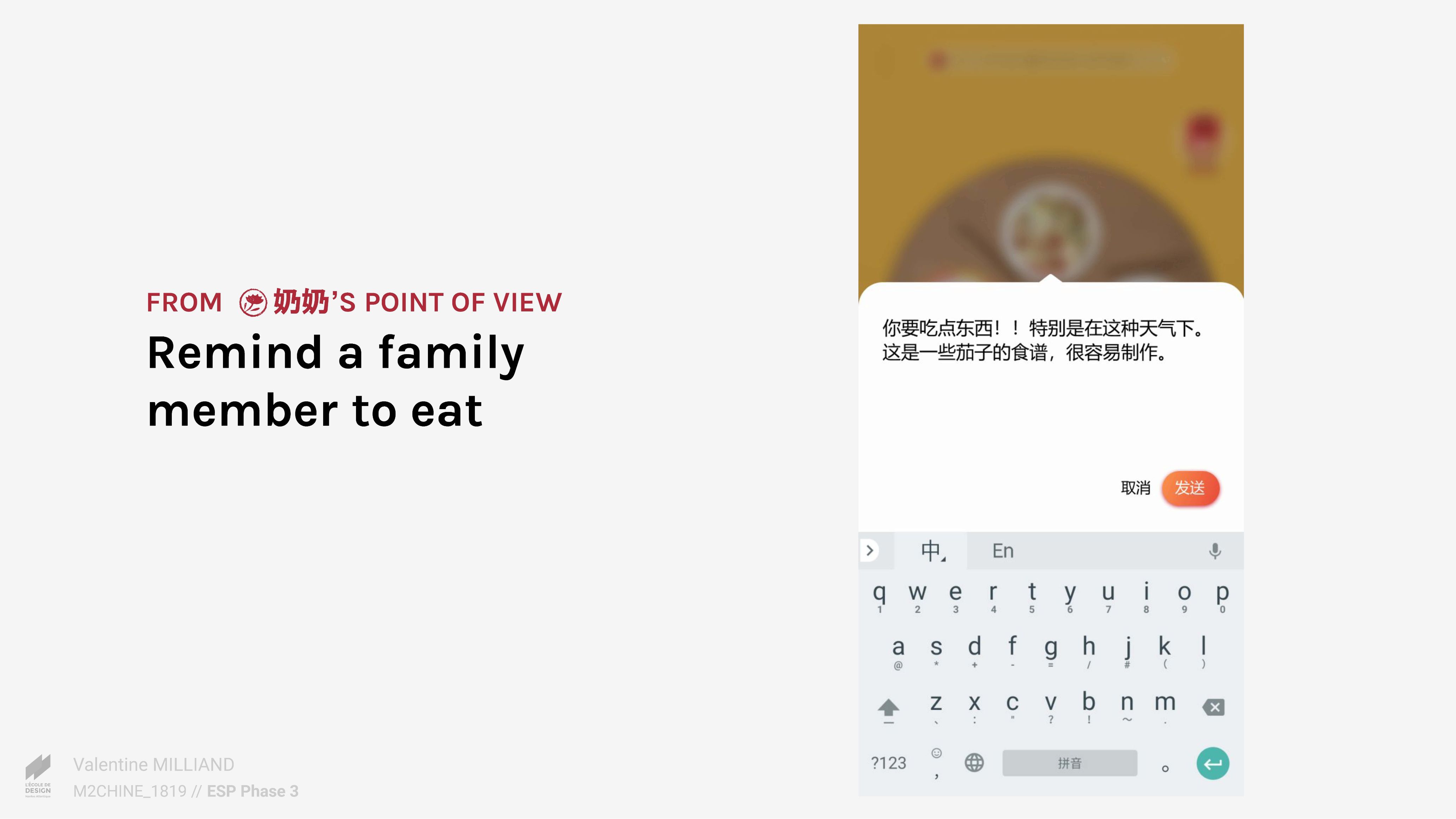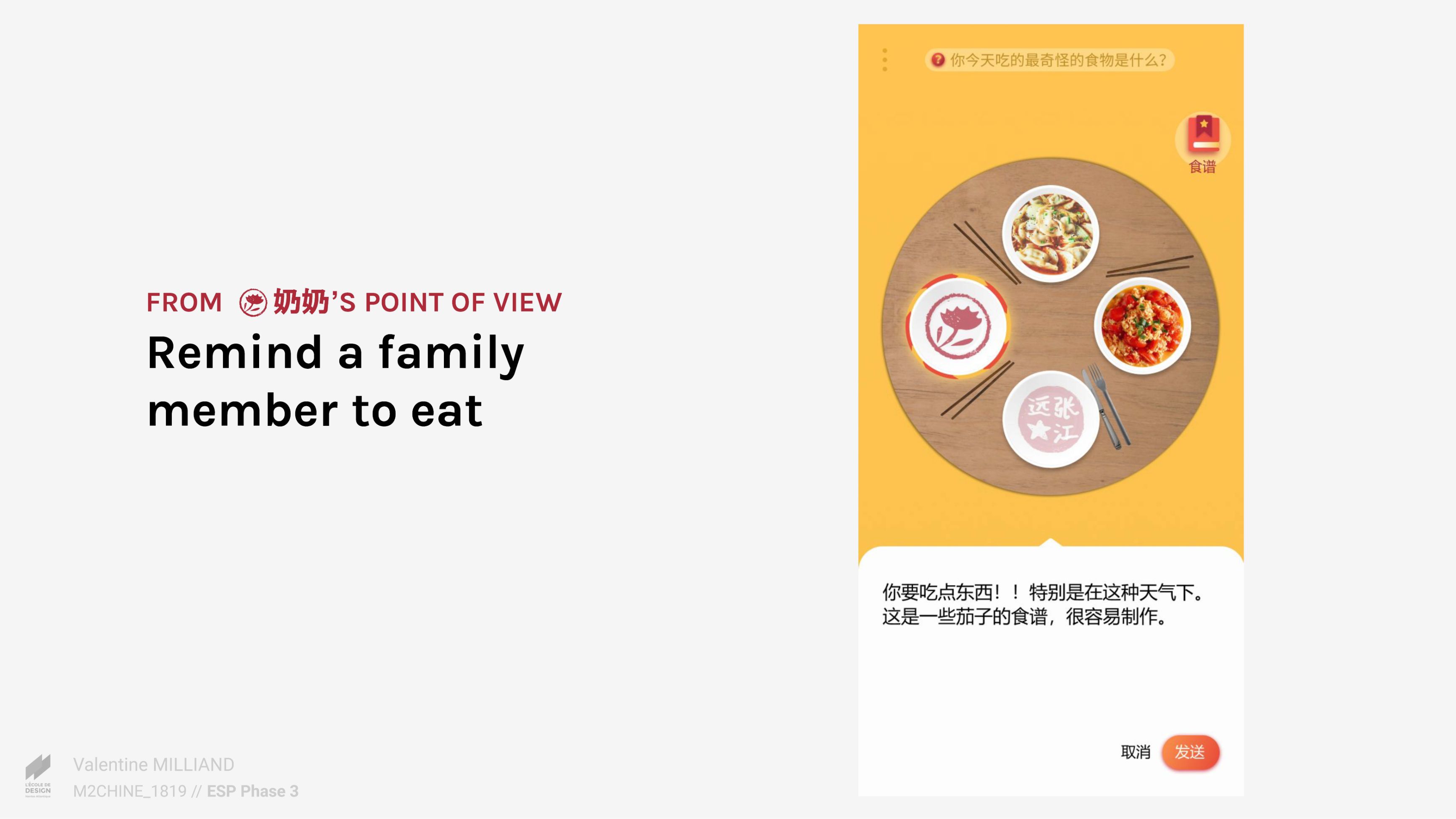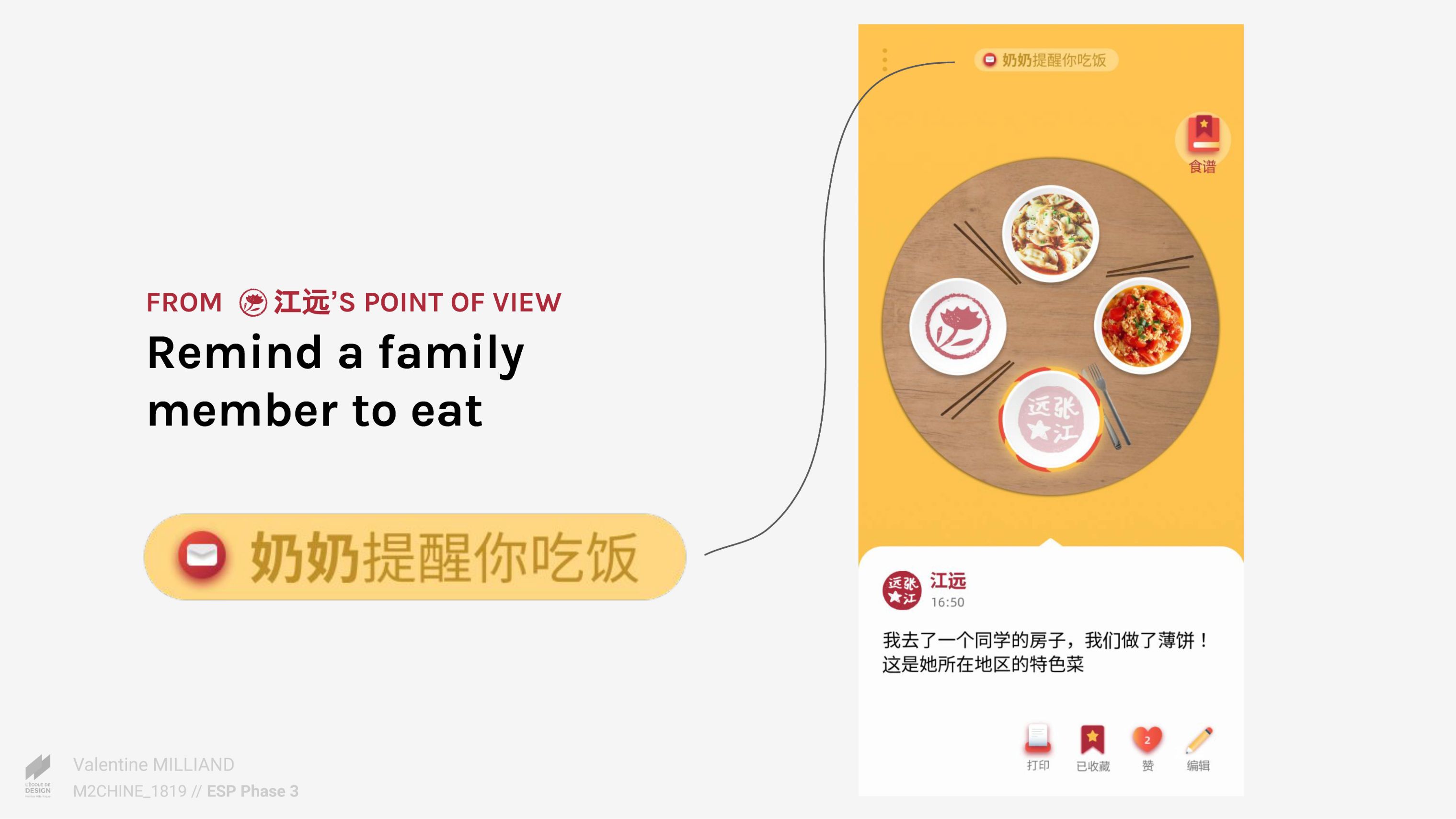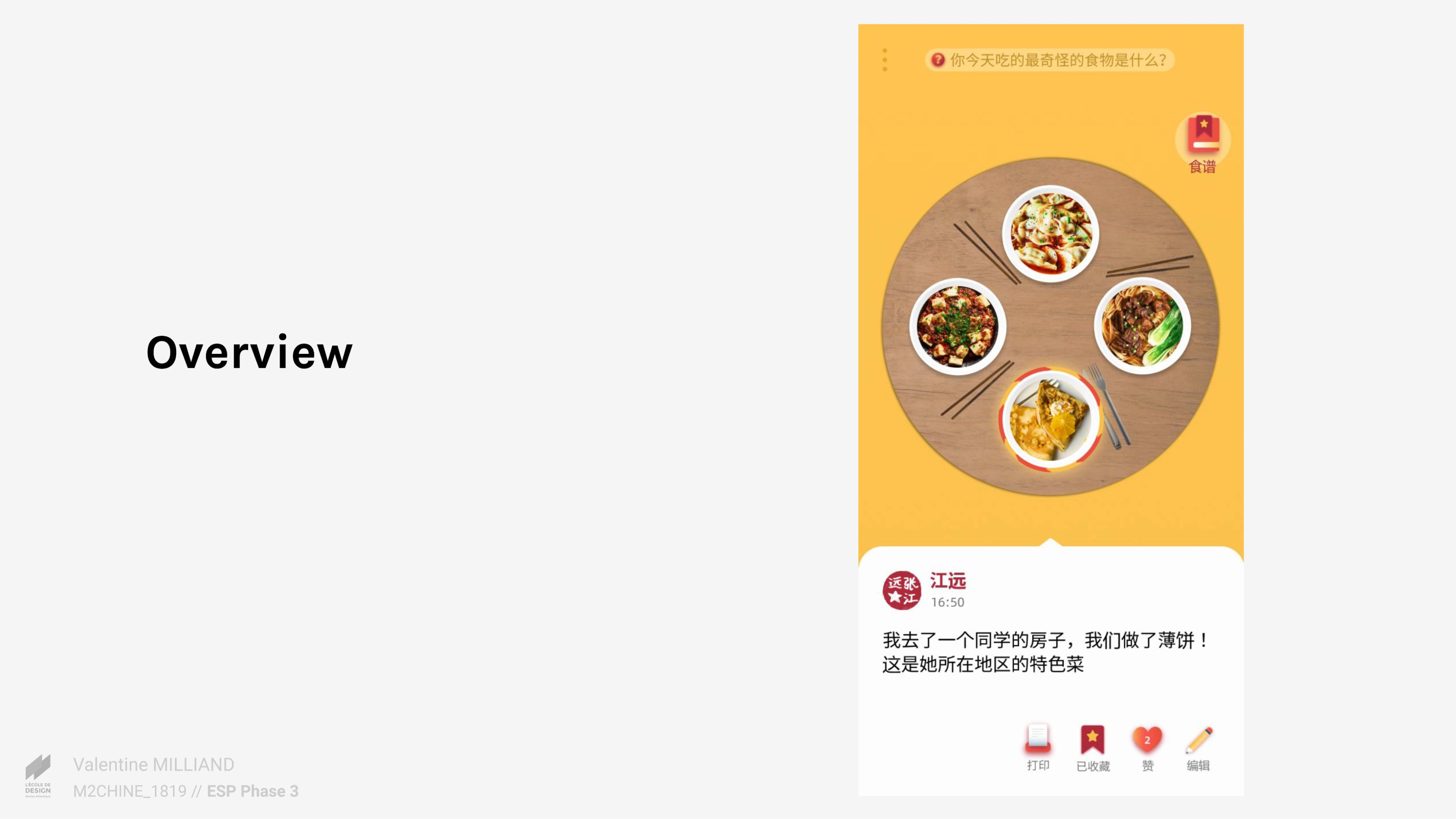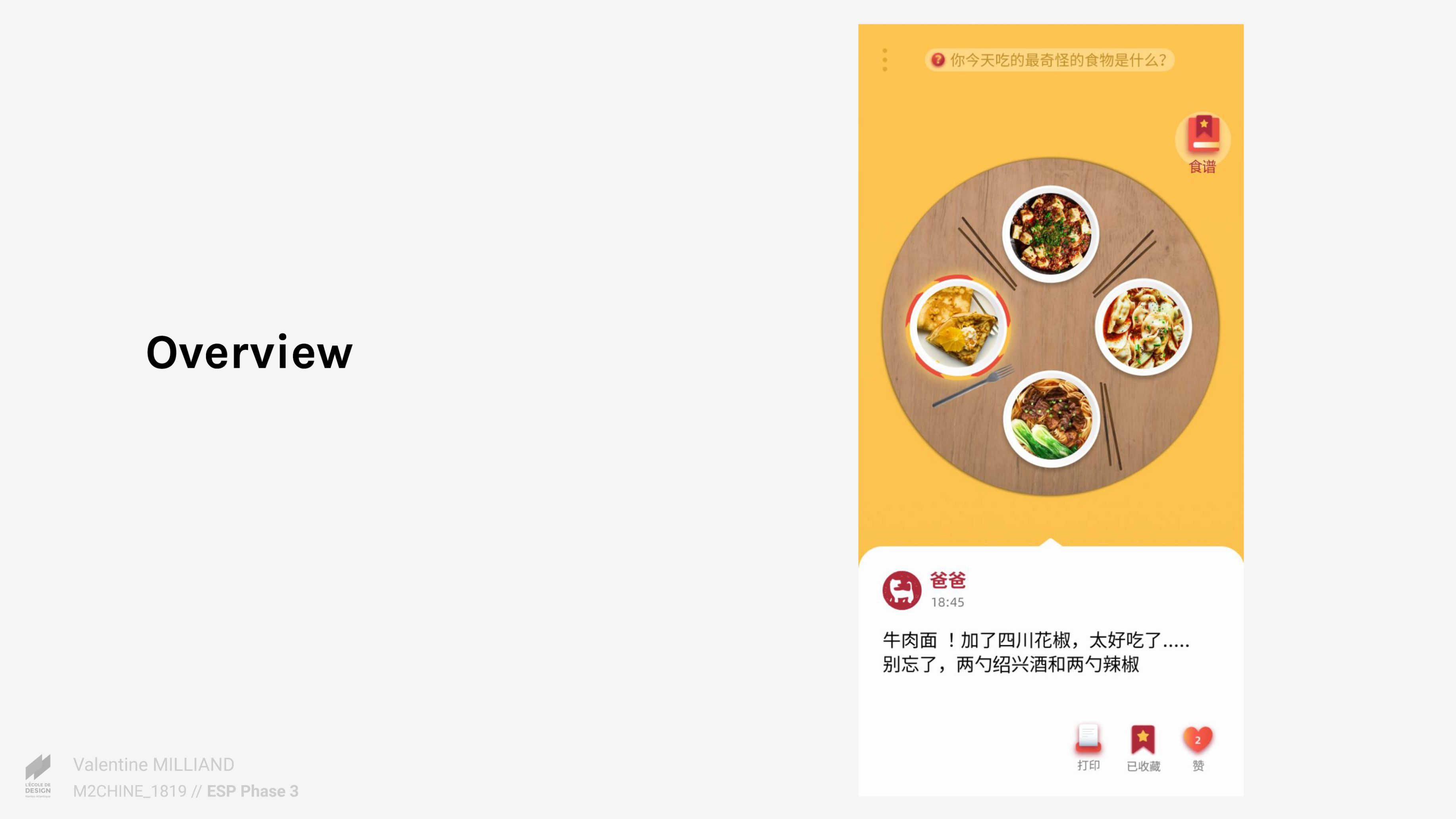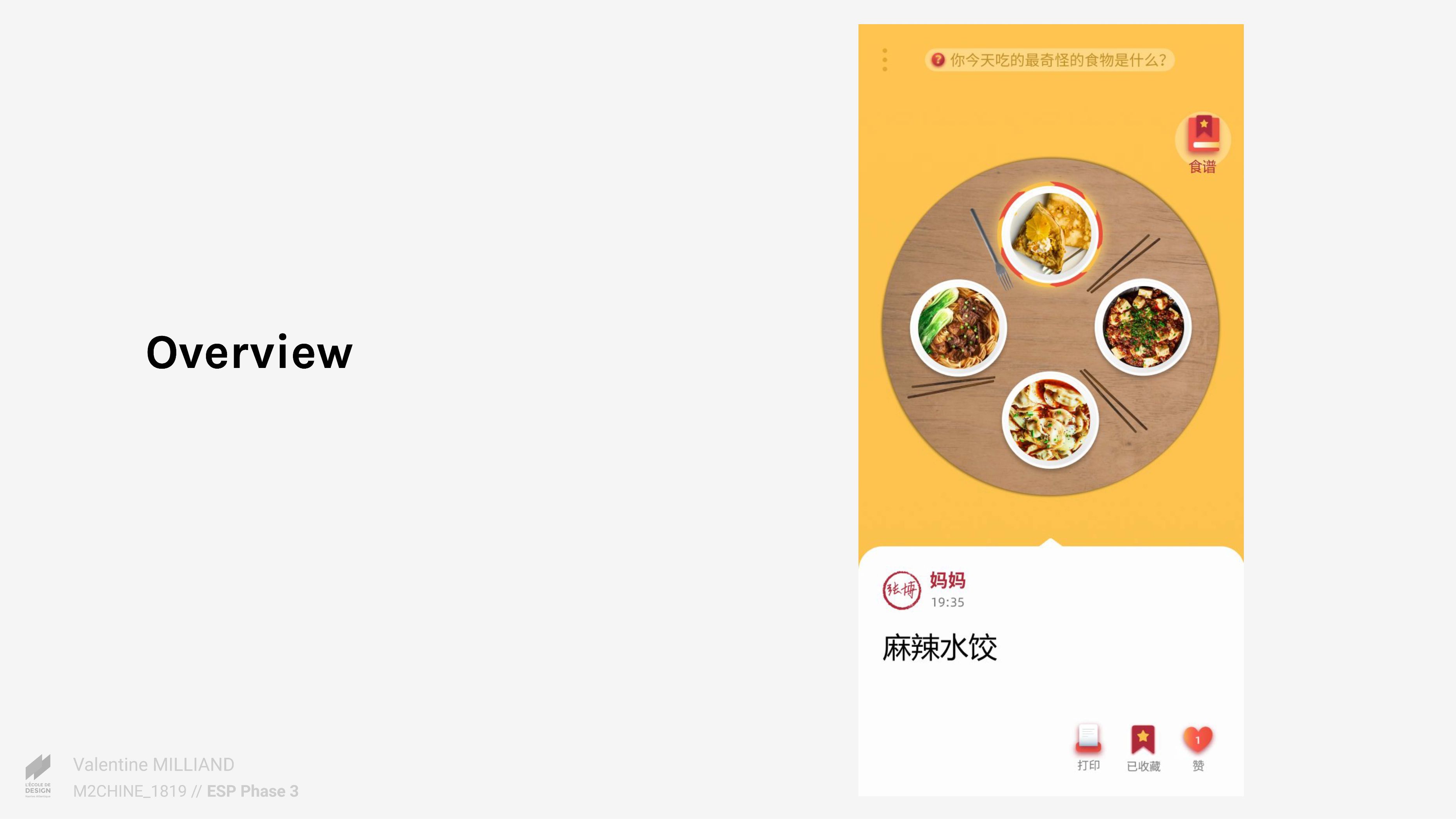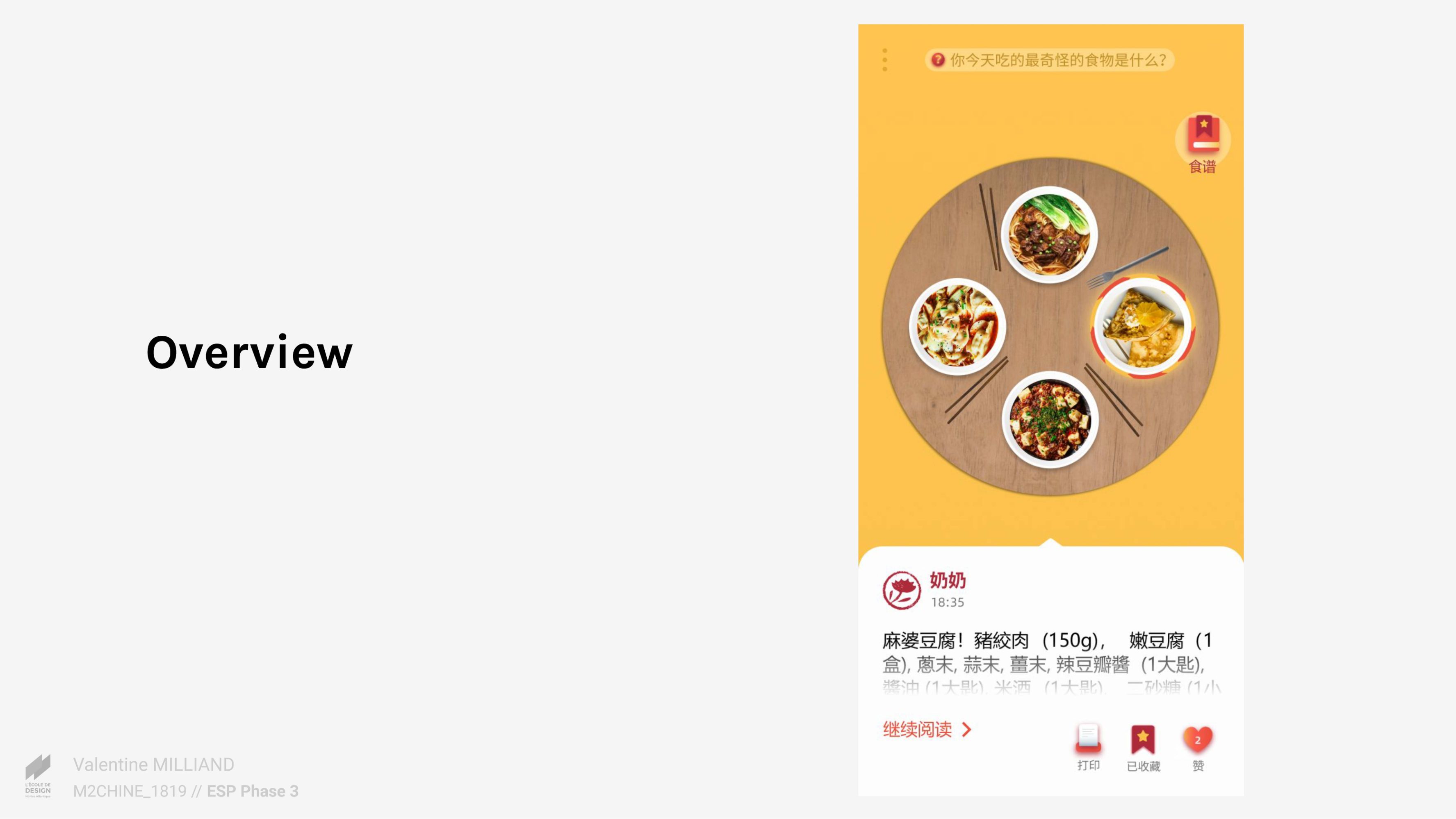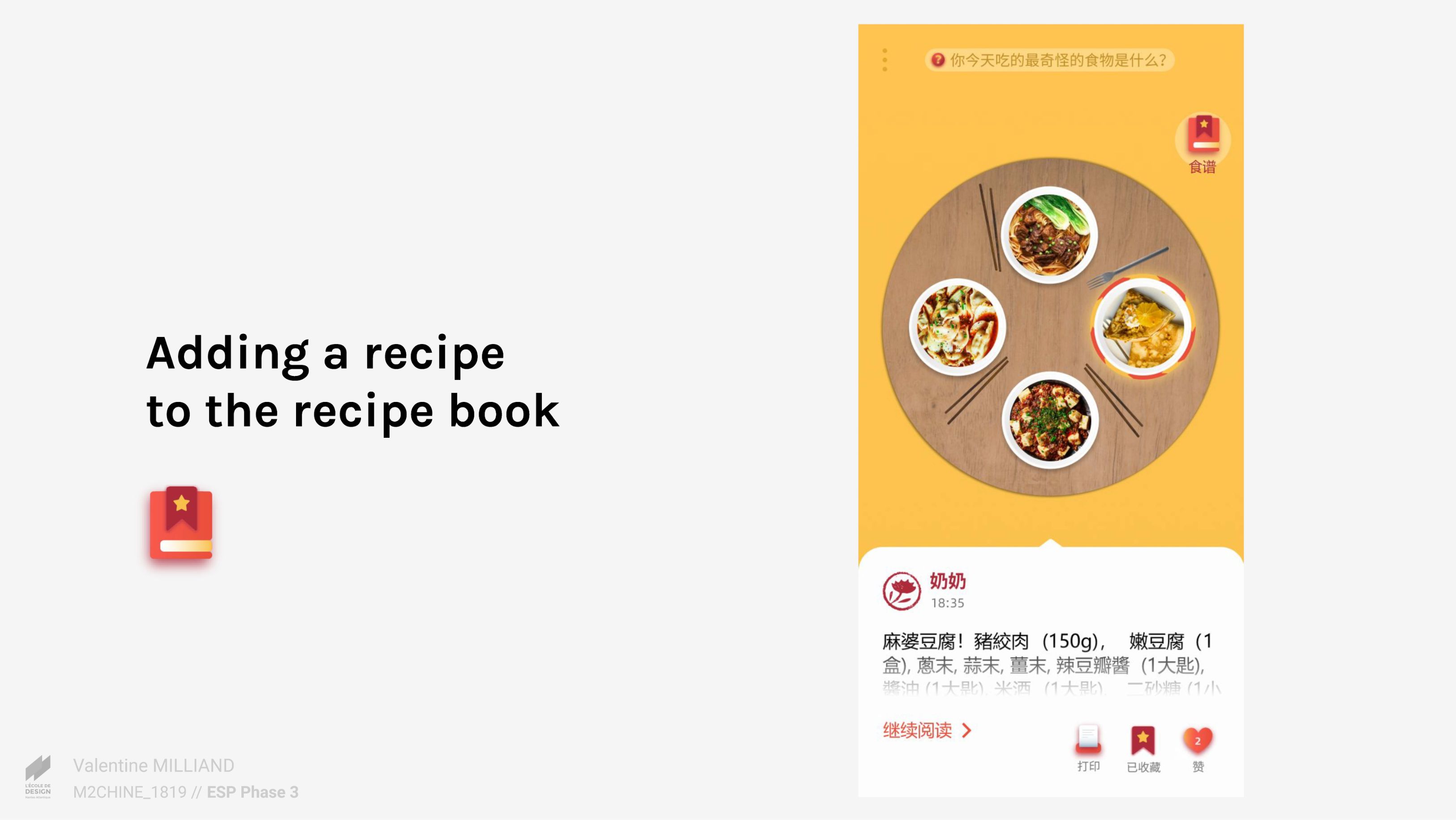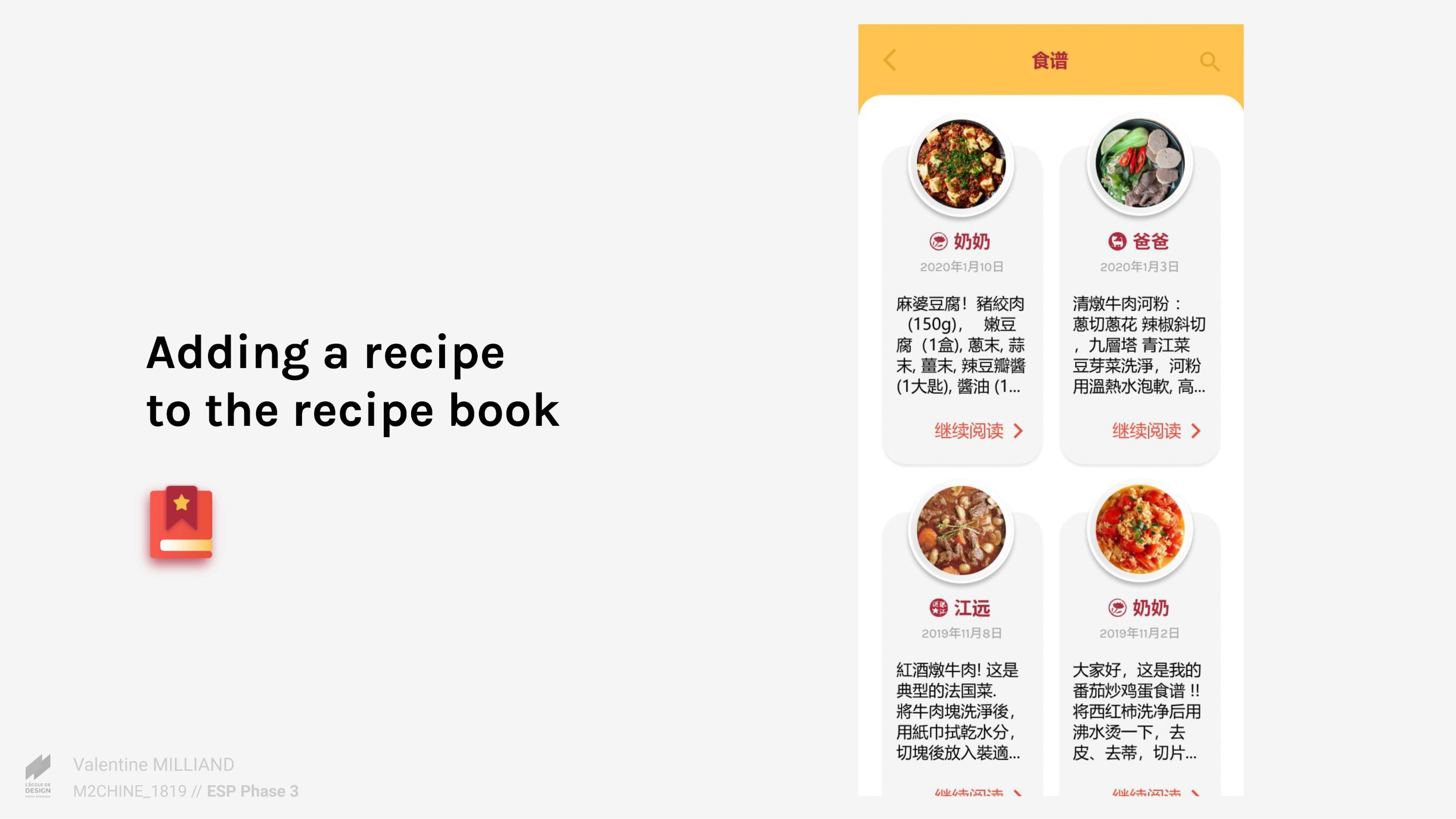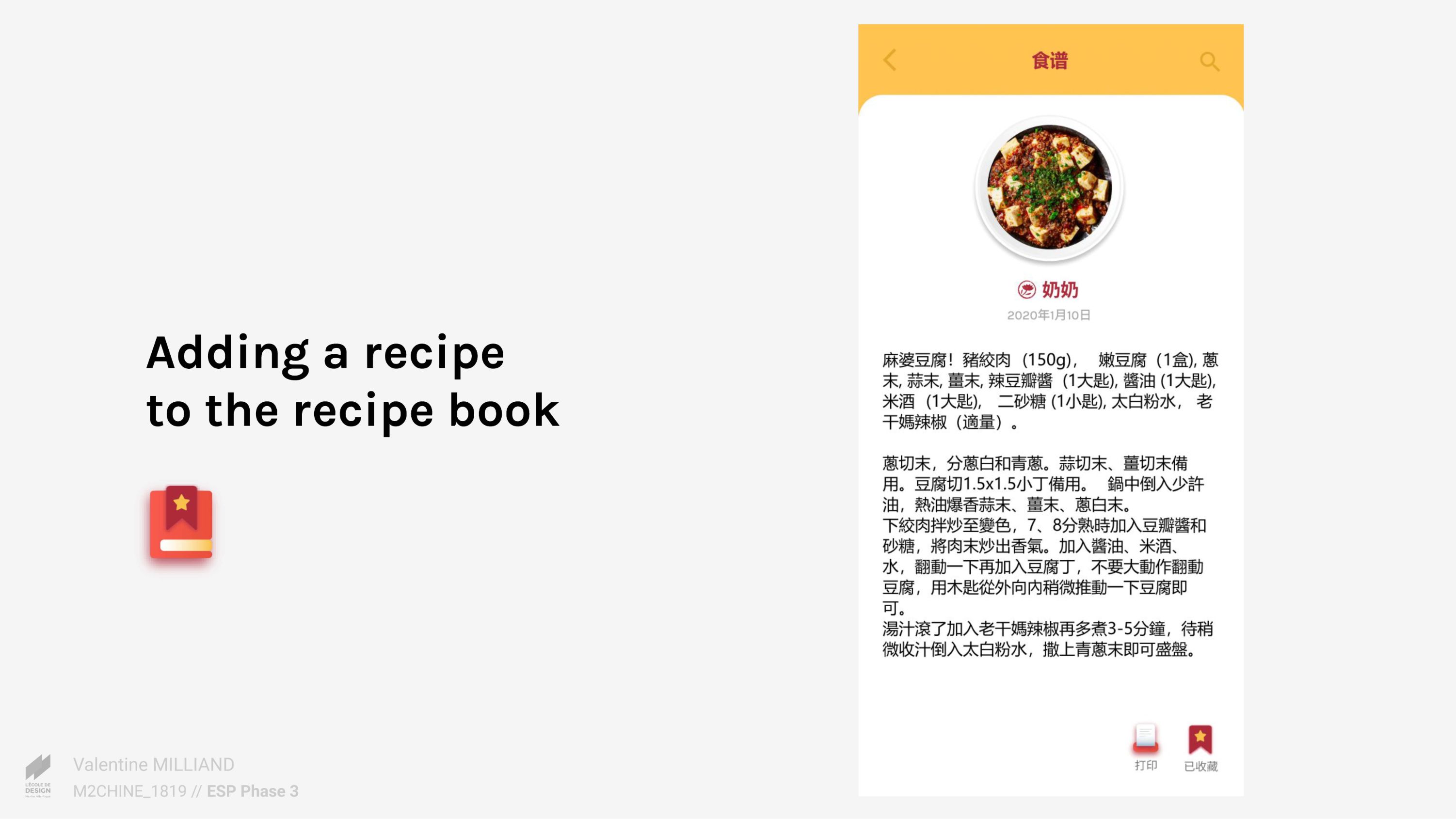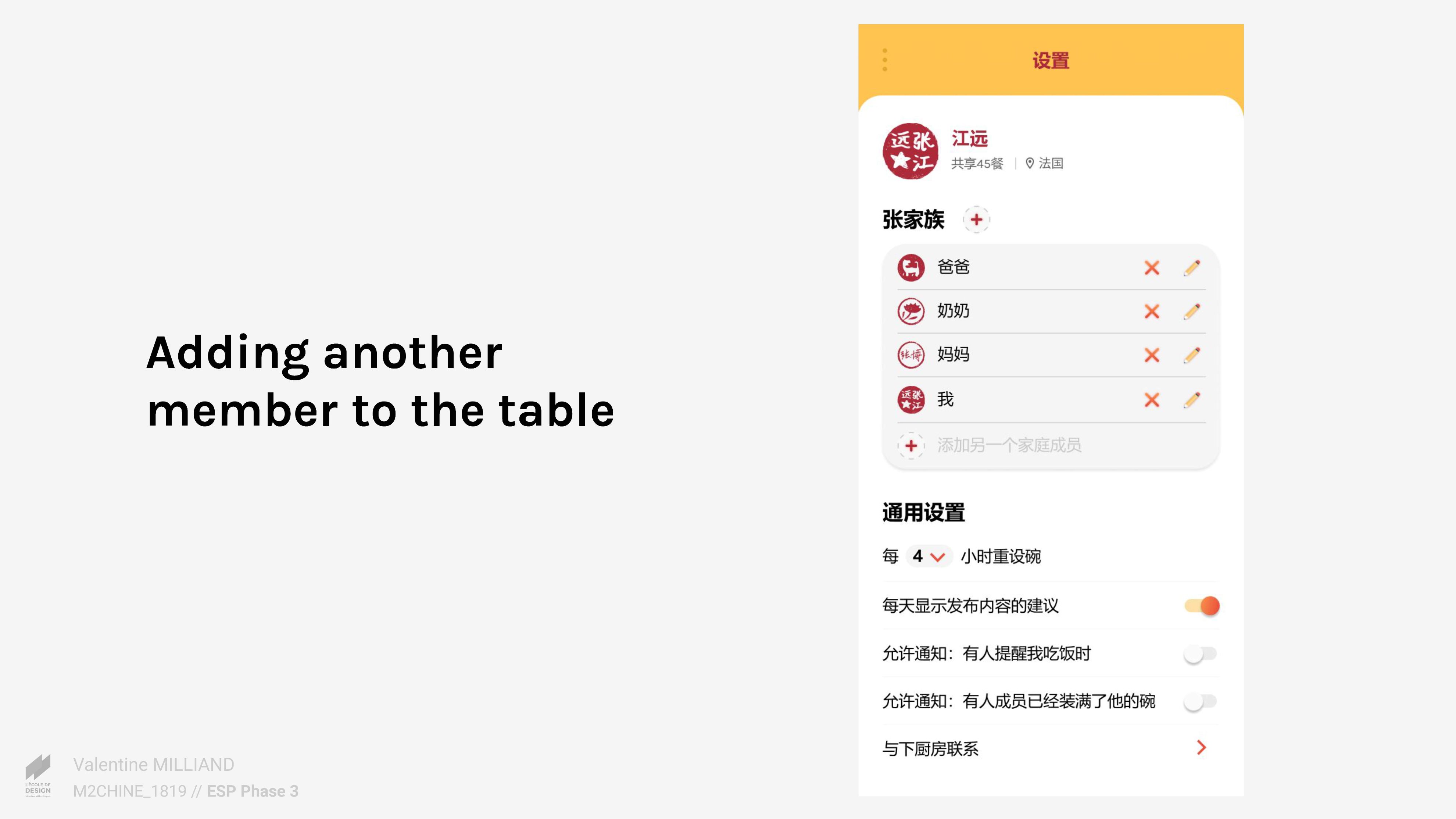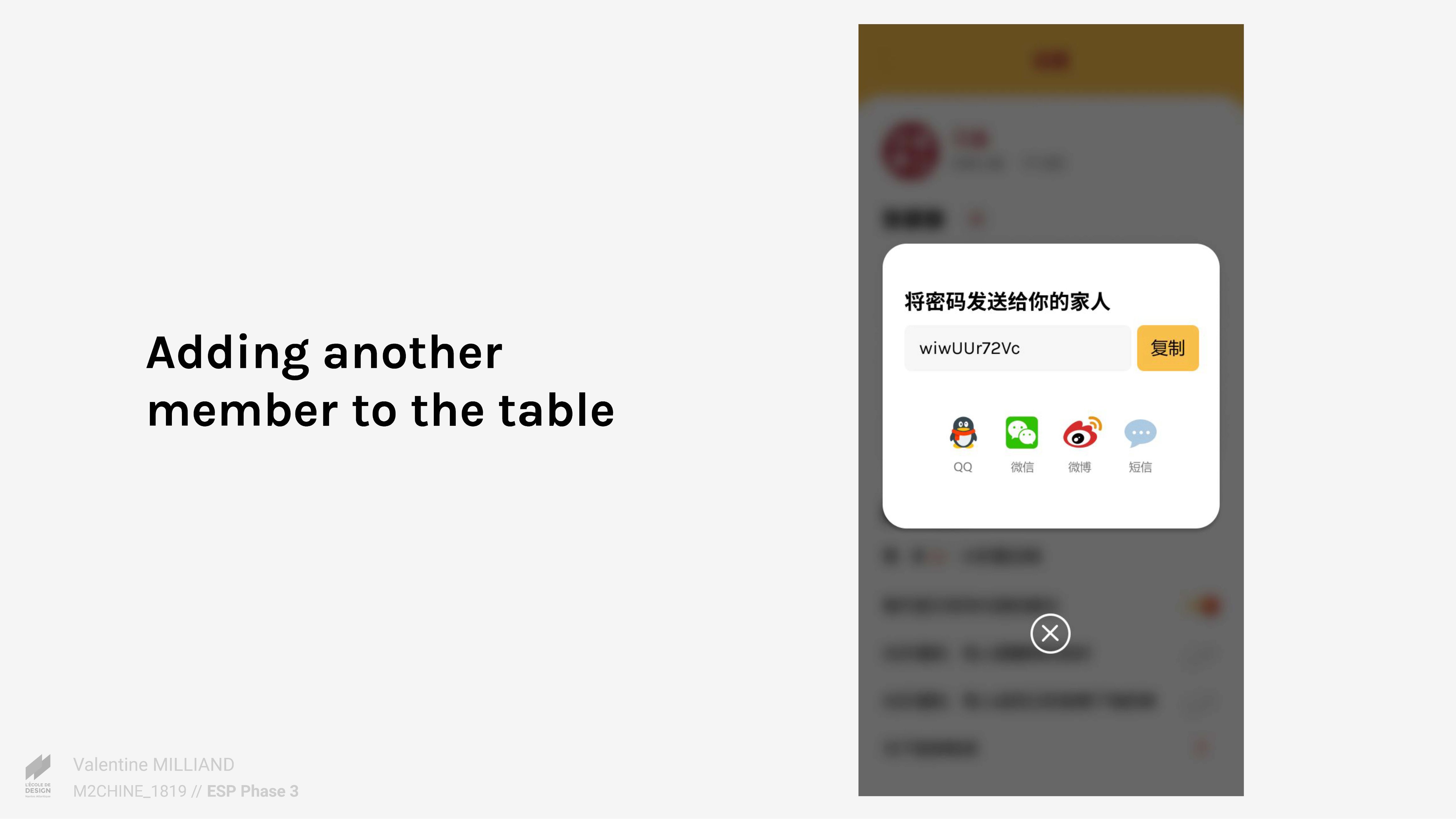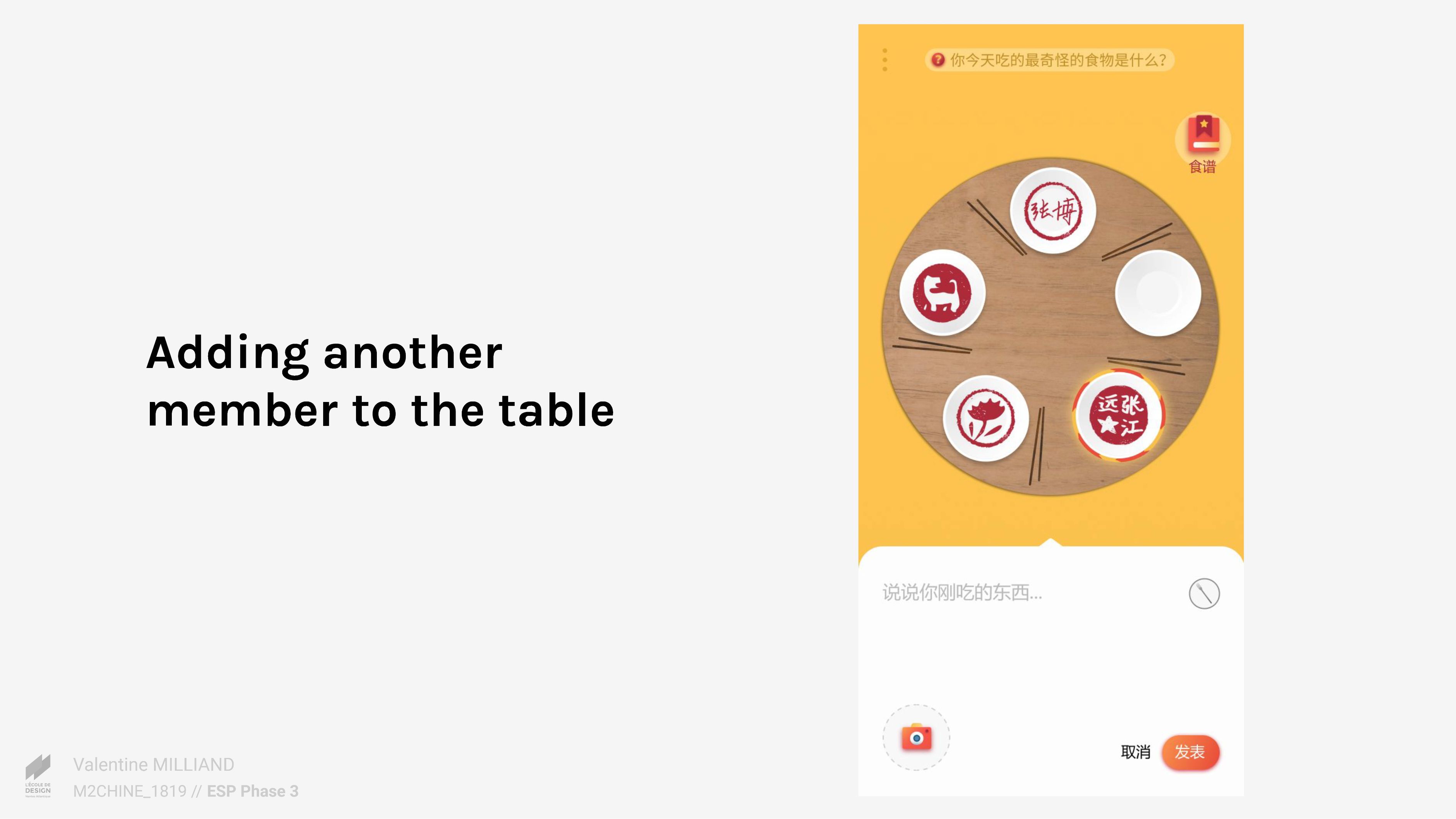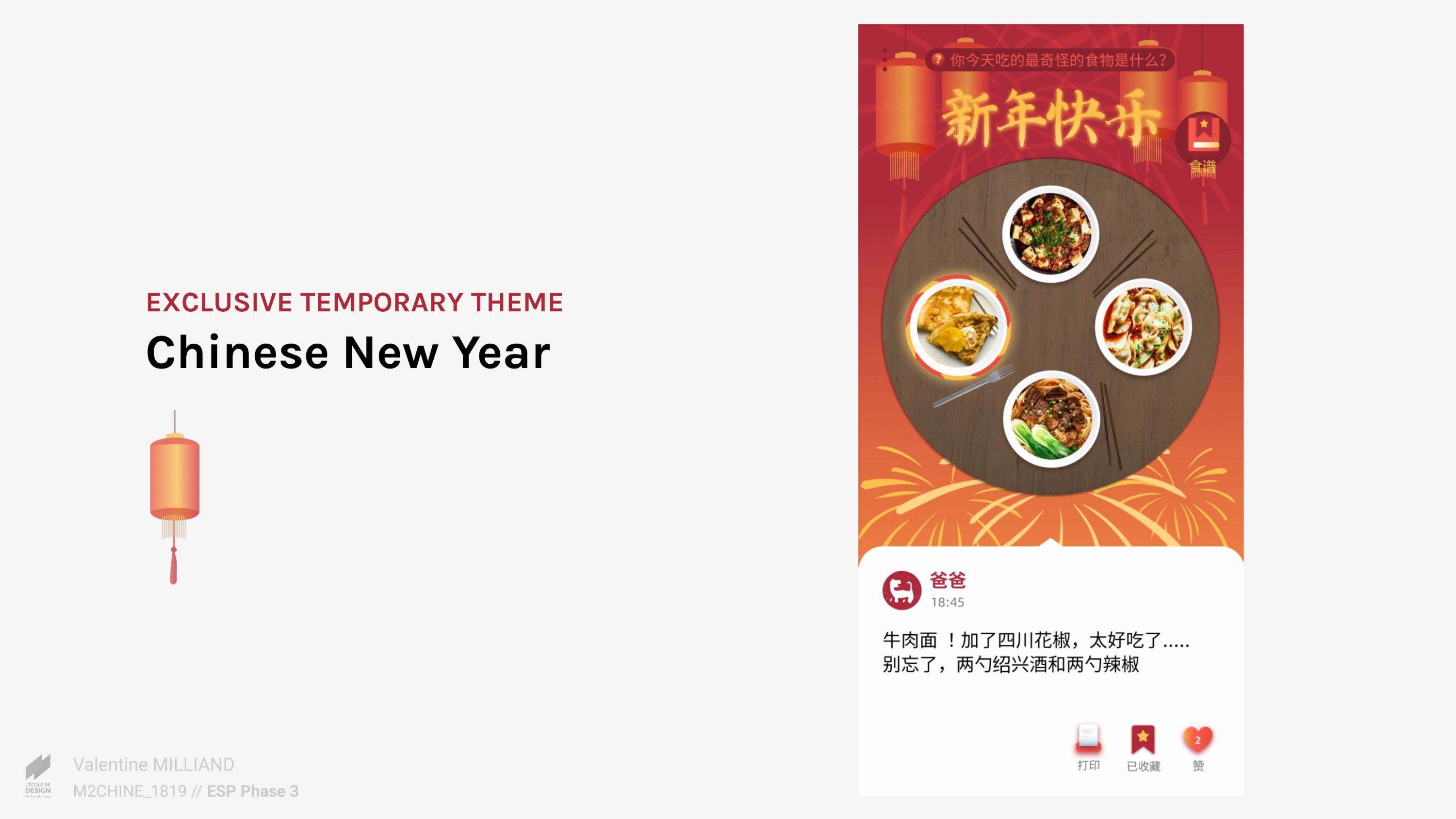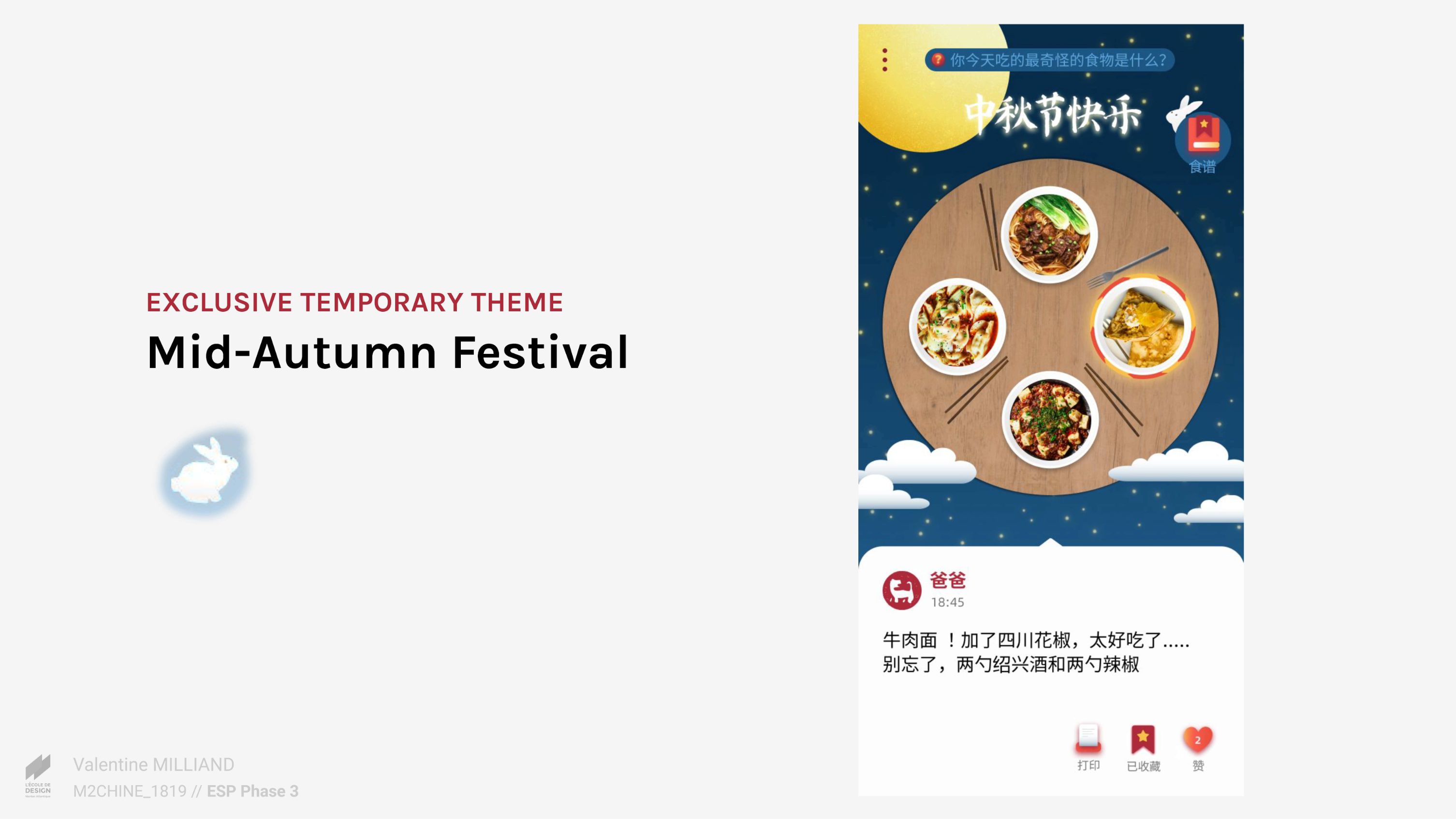你吃了吗? (pinyin: Nǐ chī le ma?) is an alternative medium of communication for translocal Chinese families. In mandarin, 你吃了吗? means more than "have you eaten yet?" : it's also a way to greet a person we care about.
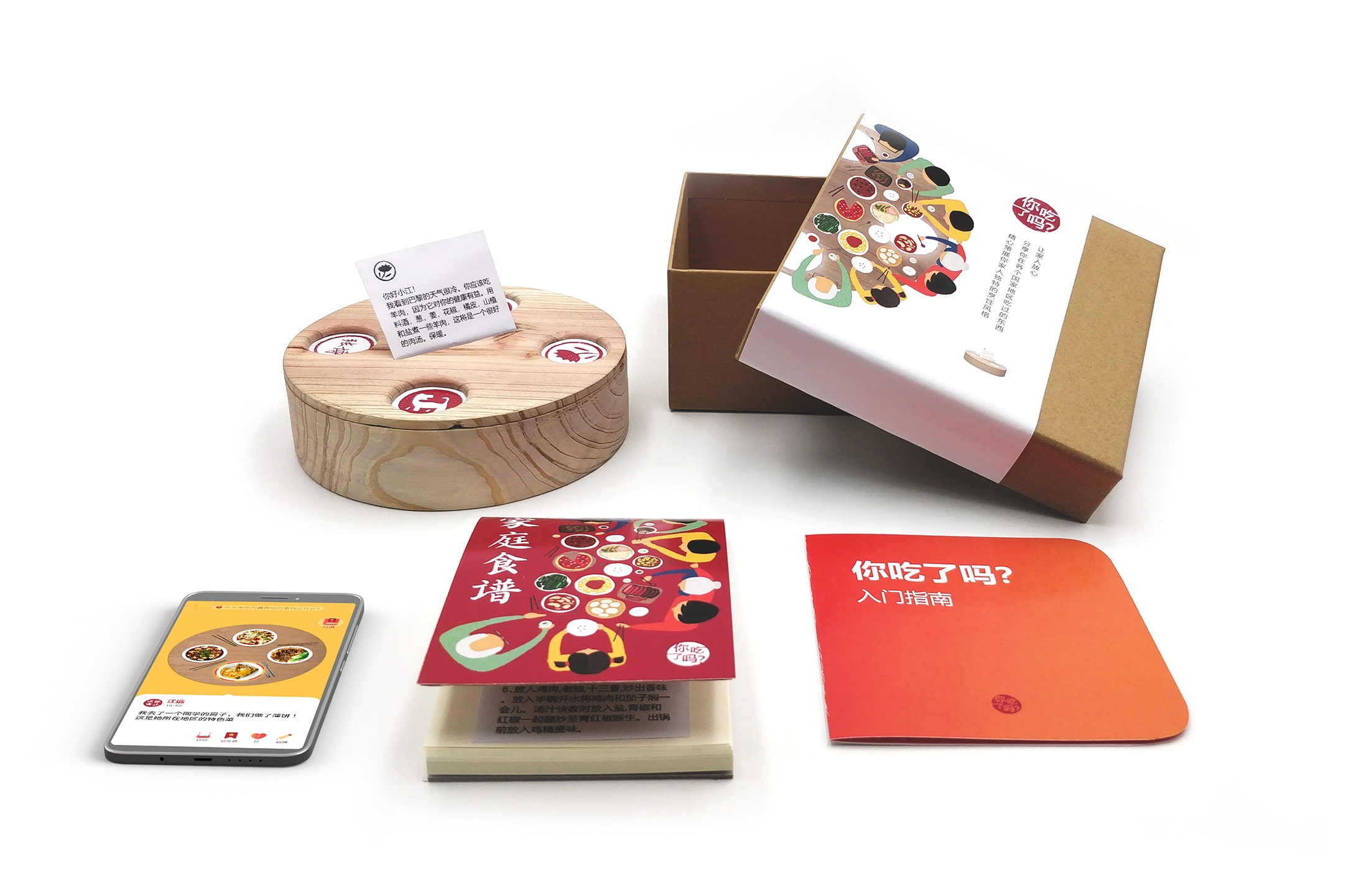
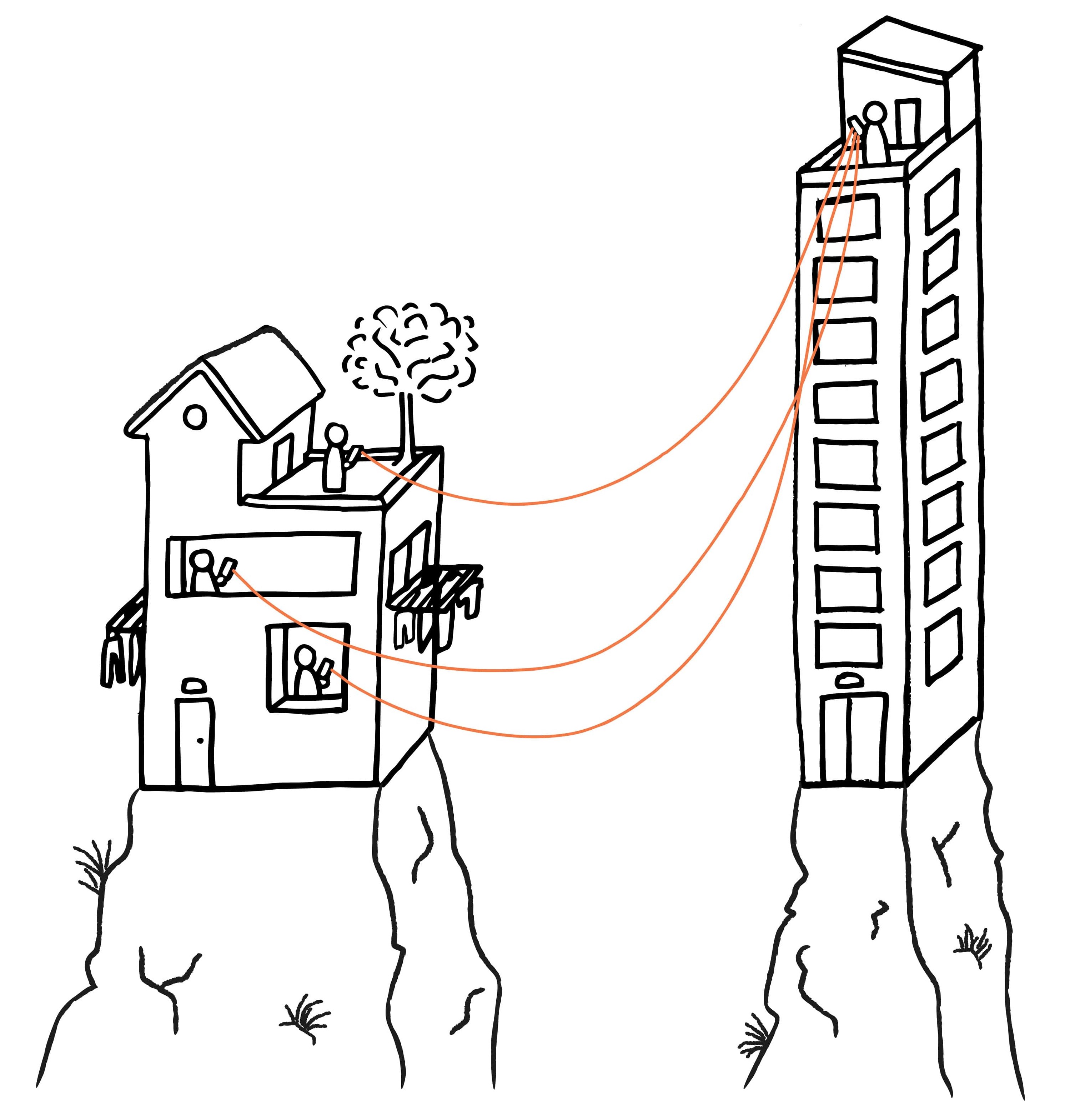
Context
THE RISE OF THE TRANSLOCAL FAMILY
Young Chinese leave more and more their families to study abroad.
As investing in education is a status symbol in China, their number is expected to keep growing, making them the world’s largest floating student population. Their average age is also getting lower : from 18 years old in 2014 to 16 in 2016.
Studies have shown that Chinese students, coming from a collectivist culture, have a higher chance of experiencing cultural loneliness and homesickness (Sawir et al. 2008). There are 3 ways for them to deal with it :

WHERE WECHAT FAILS
Although WeChat is a very useful product for exchanging info, reassuring the parents,
sharing news or sending money, it can also increase psychological distance.
After doing 4 rounds of user interviews with different focuses, I've identified 5 ways WeChat can put a strain on relationships:
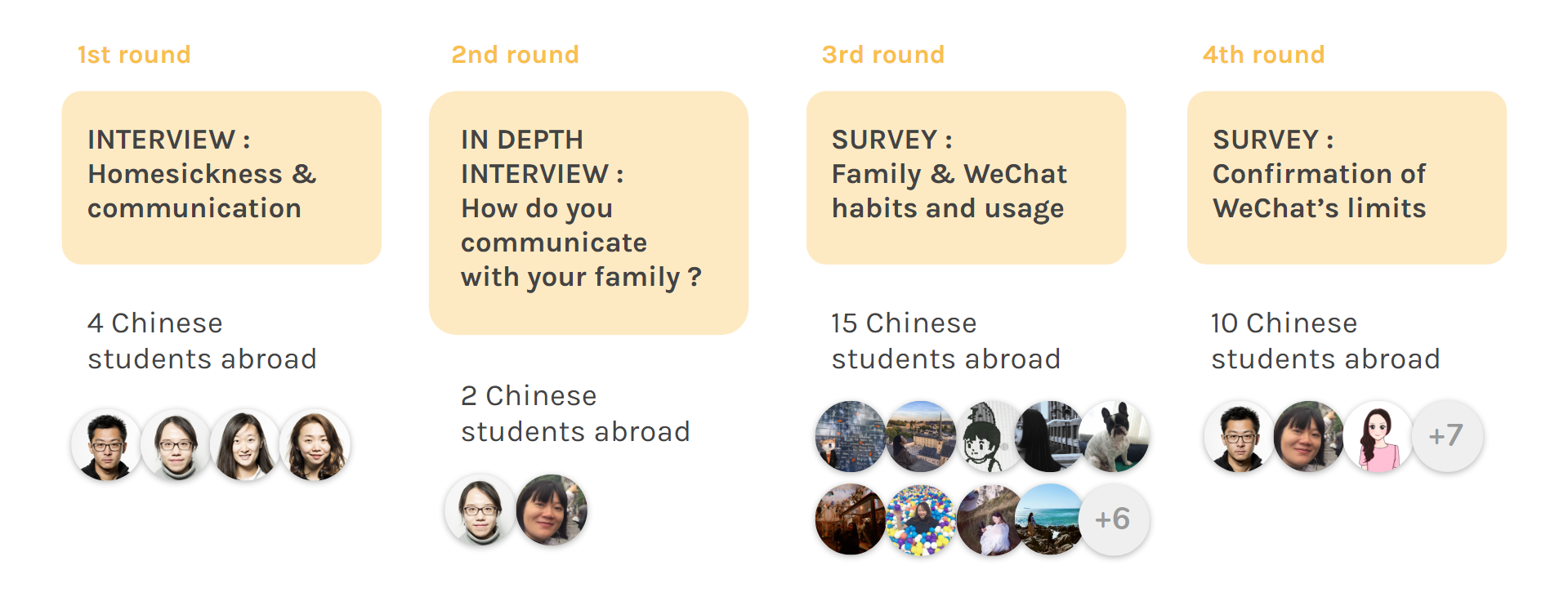
1.
triggers homesickness
Communication relies on existing events that take place IRL. Calling during CNY or birthdays without being there induces homesickness.
2.
ostracizes some family members
As late adopters, older family members struggle more with Wechat and can tend to cut off communication out of frustration;
3.
doesn’t take context into account
Since the student and family no longer share a «common context», every topic requires more background explanation.
4.
relies on a single limiting language
Not everyone is skilled to express their emotions in a single text or a call. The complexity of family relationships can’t be restricted to 1 language.
5.
breaches privacy
As the student enjoys a new invididual life away from their parents, it can be difficult to balance the obligation of reassuring the family and their newfound privacy.
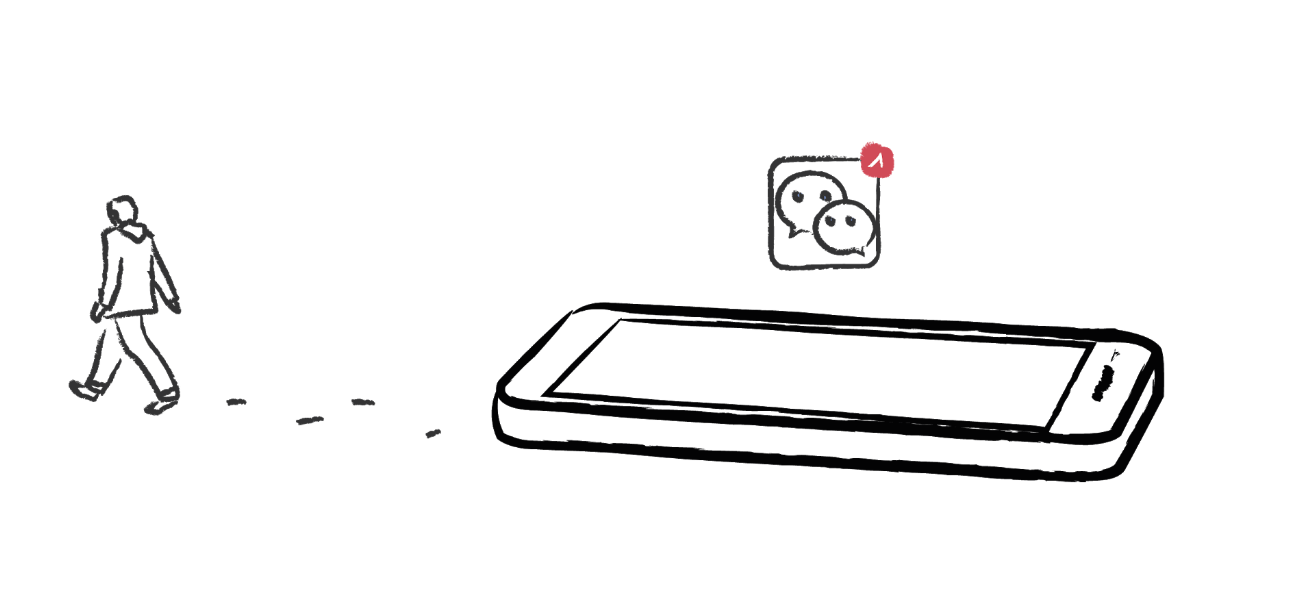
My positioning
As an interaction designer, I want to make sure tech is not widening the gap between families. My goal is not to create a replacement for WeChat, but rather give users an option B.
Furthermore, as a reaction to the app's pervasiveness in daily life, more and more users are developing "WeChat fatigue" . This phenomenon highlights the need for an alternative.
Designing an alternative medium of communication
that sustains family relationships and provides a relief for homesickness.
My design process
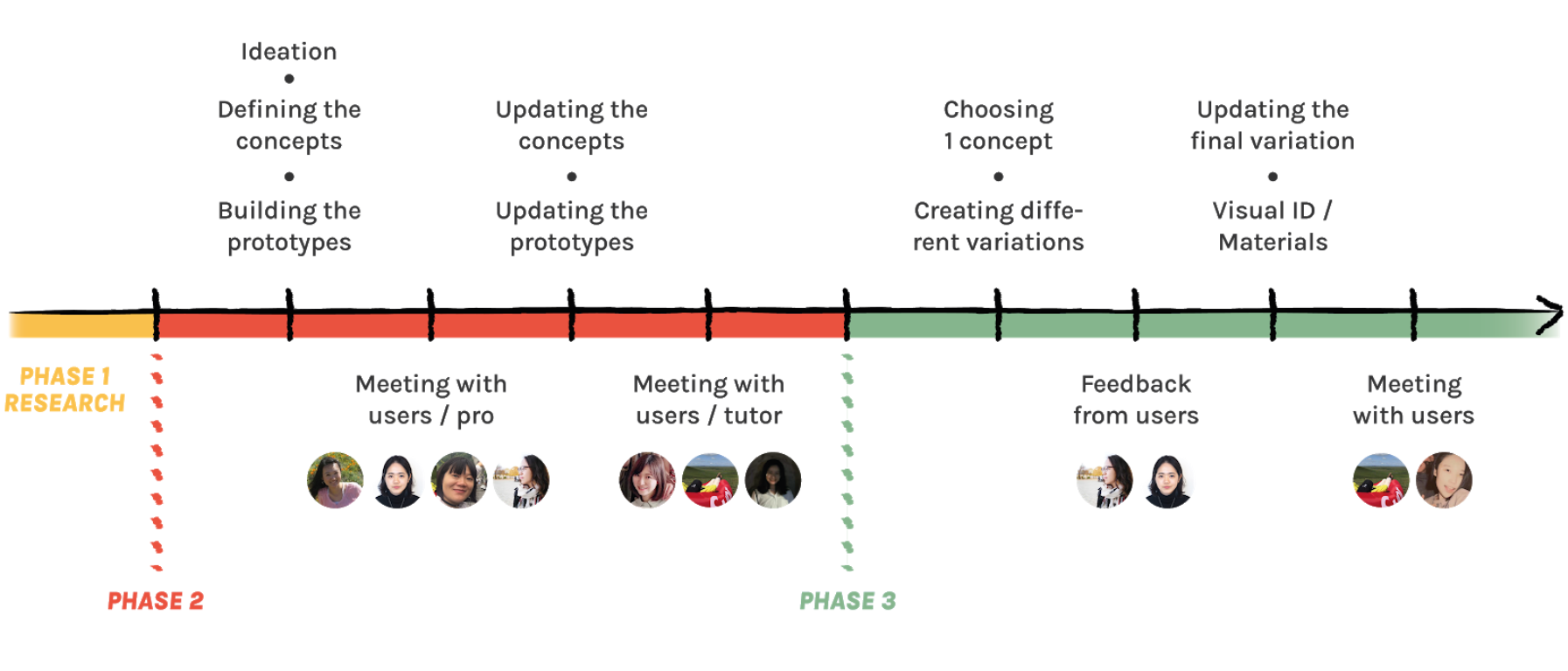
THE ORIGINAL CONCEPTS
I first came up with 3 different concepts and tested them with my users.
I chose to go with 你吃了吗? as it was the most popular one among students. It also had a lot of room for improvement.
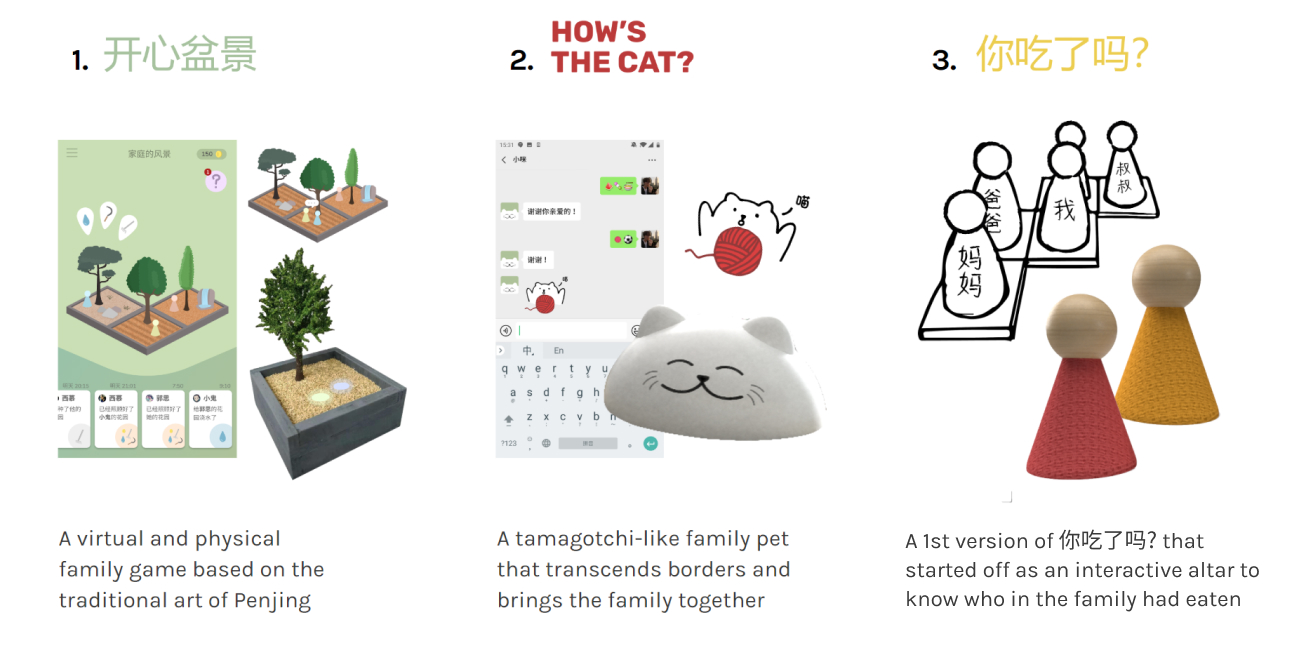
THE CHALLENGE OF REPRESENTING A PERSON
你吃了吗? posed a greater difficulty than the other concepts : family members were not profile pictures on a screen anymore.
I had to find another way to represent them. Using sketches, clay, wooden figurines, 3D, I organized customization workshops to observe how users perceived their family members.
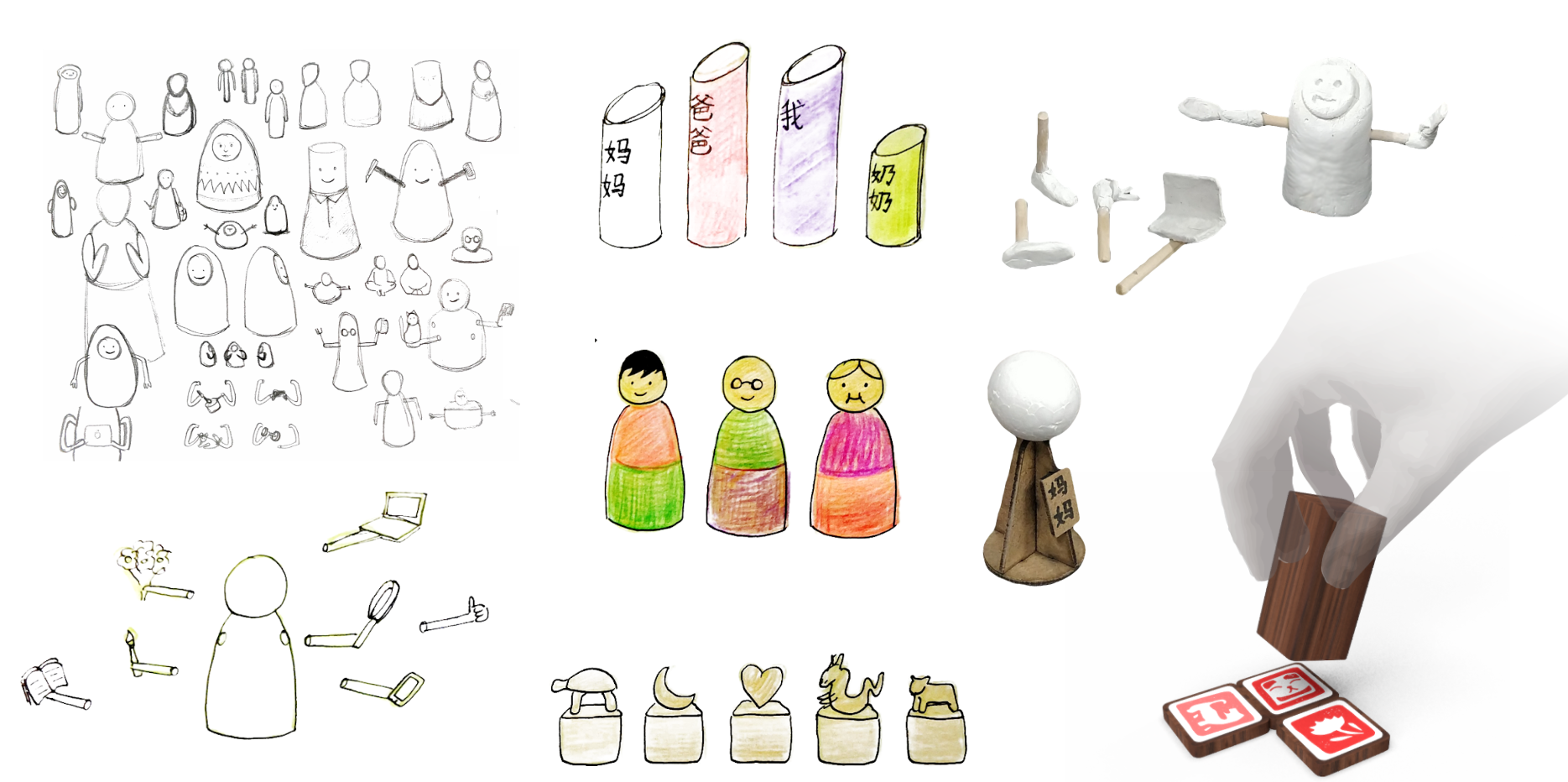
The final iteration
你吃了吗? goes back to the essentials : it’s a low-tech way of notifying your family you have eaten and that you are alive.
It is built to fulfill 2 fundamental needs of a harmonious family : reassure about the present + curate the past.
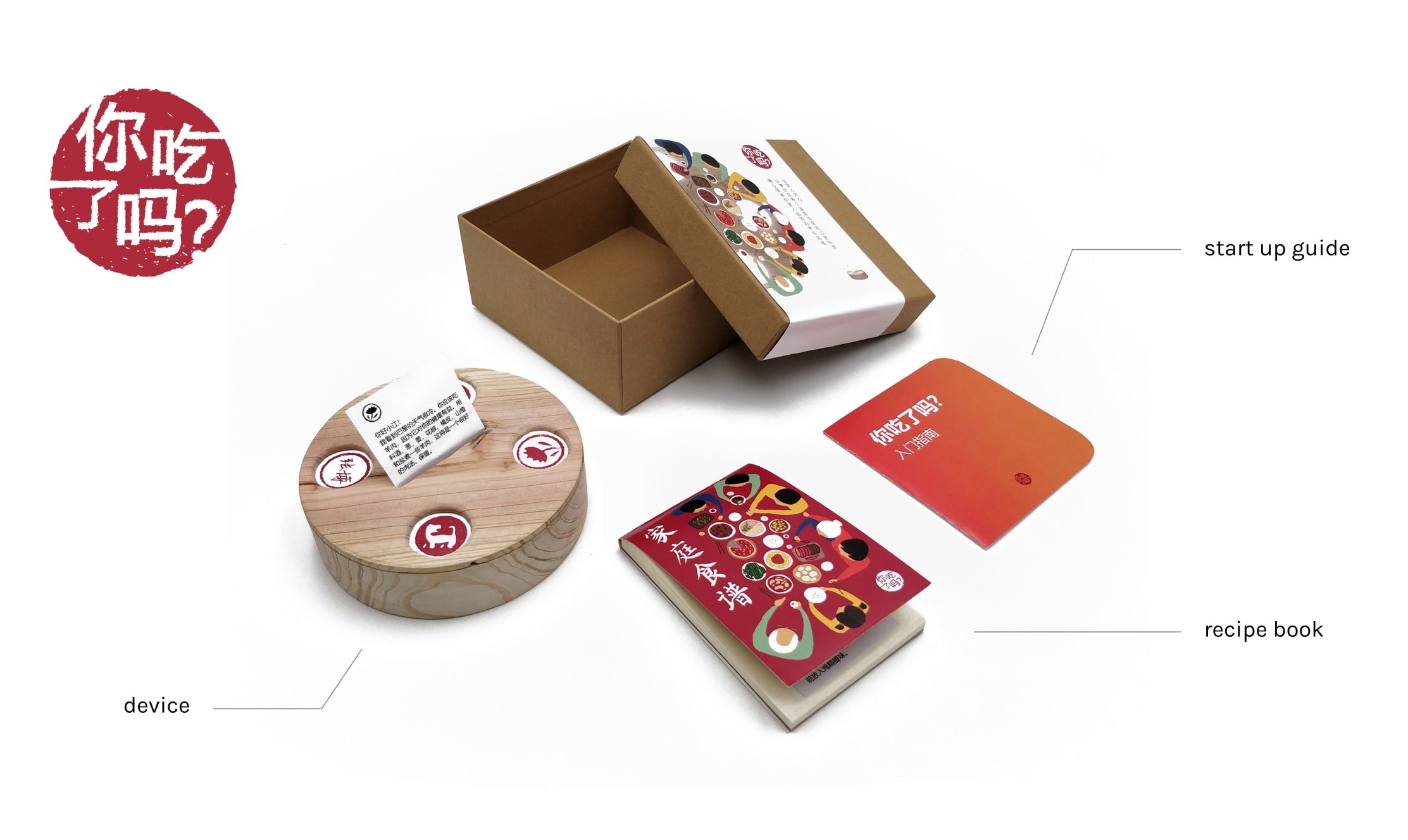
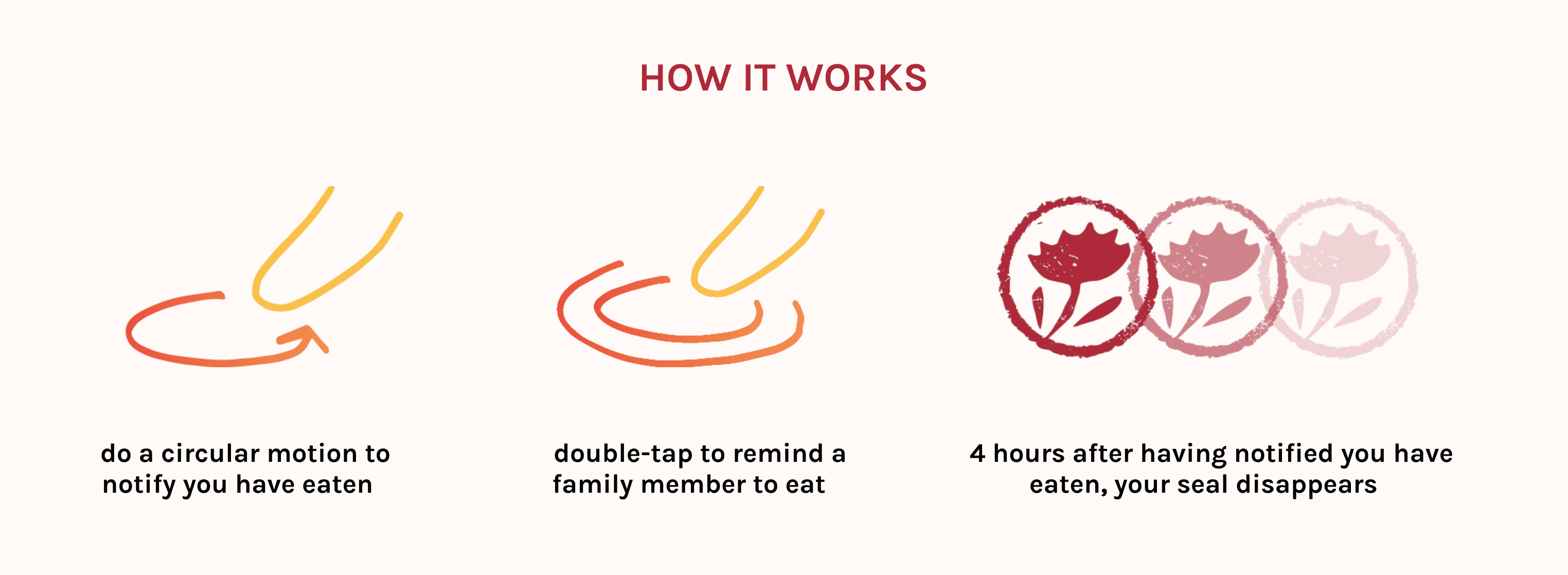
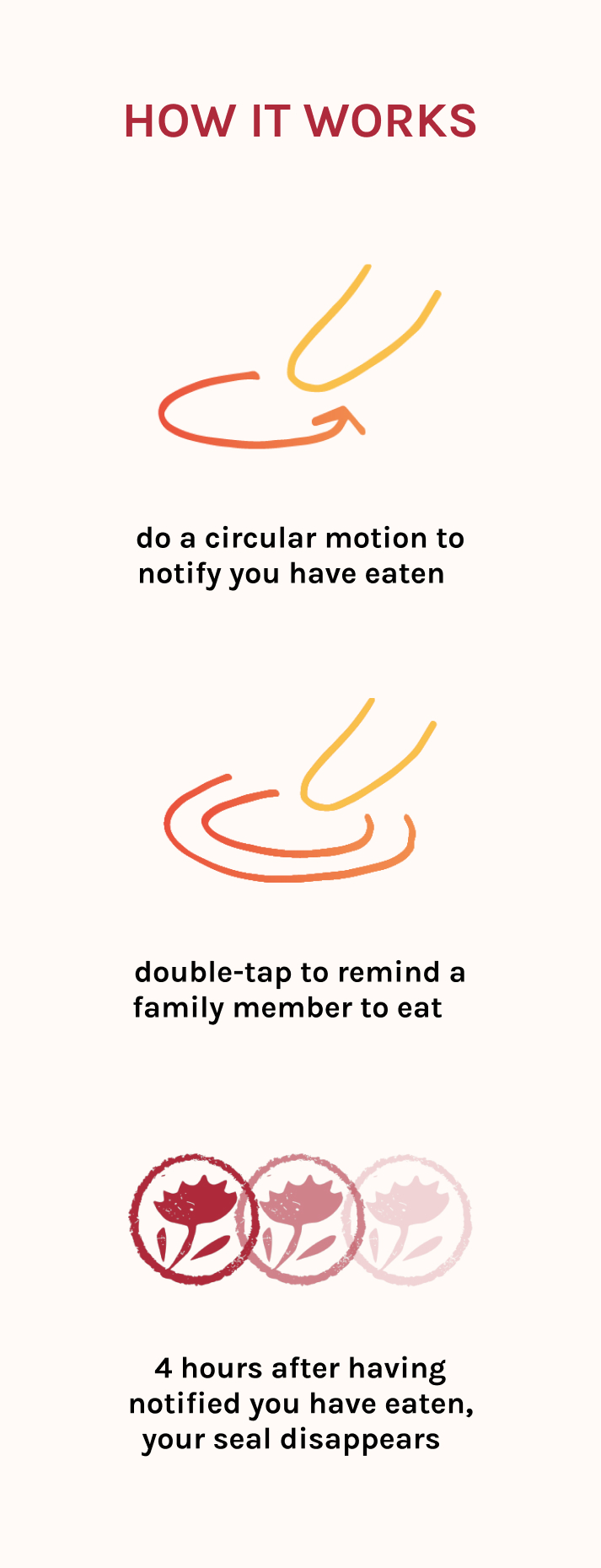
DIFFERENT LEVELS OF COMMITMENT
你吃了吗? is designed to be as scalable as possible to suit the different needs of the family members.
More committed users can share their meal, exchange, print and curate family recipes via the app.
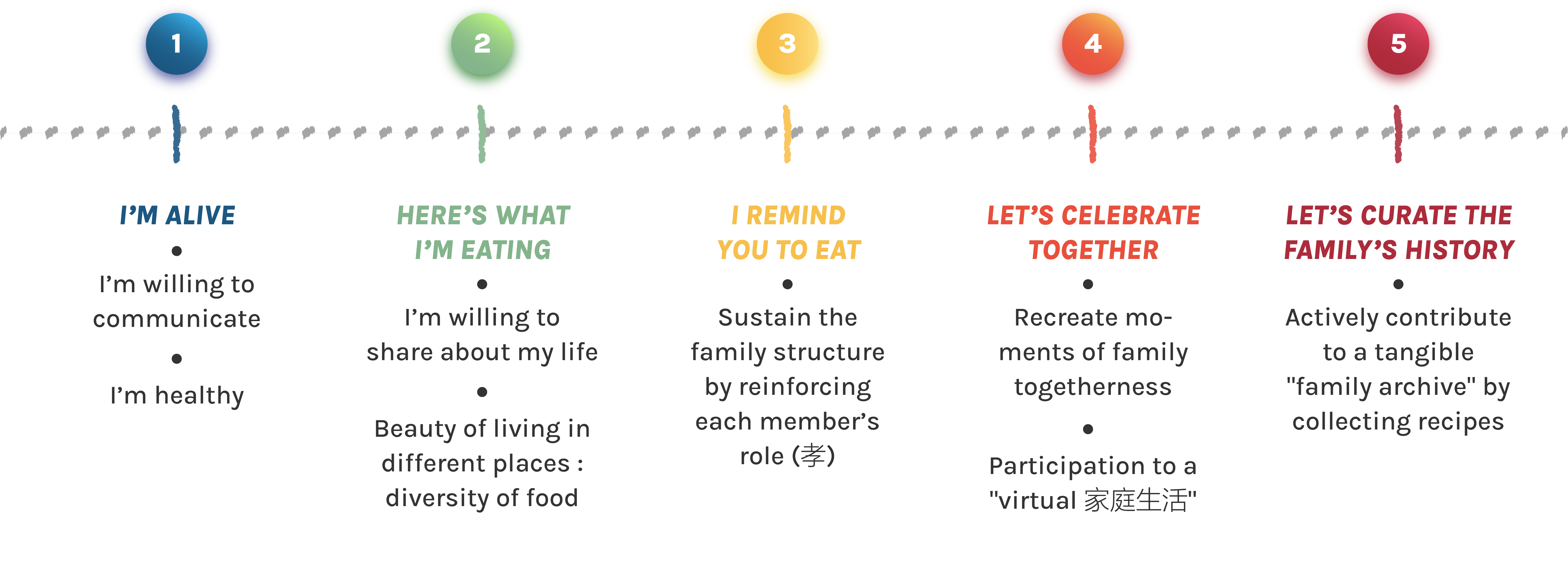
APP WALKTHROUGH
LOW TECH / HIGH EMOTIONS
The device itself is built with very simple hardware. It uses e-paper for the stamps interfaces, a material that consumes less than 0,01% of what LCD does. The paper-like display also gives a handwritten note feeling, and provides a distraction-free experience that can be appreciated by all generations.
Rather than using only recyclable materials, I chose to use durable ones, as 你吃了吗? is a connected object meant to be transmitted from a generation to another. For even more scalability, the lid can be changed to add more family members.
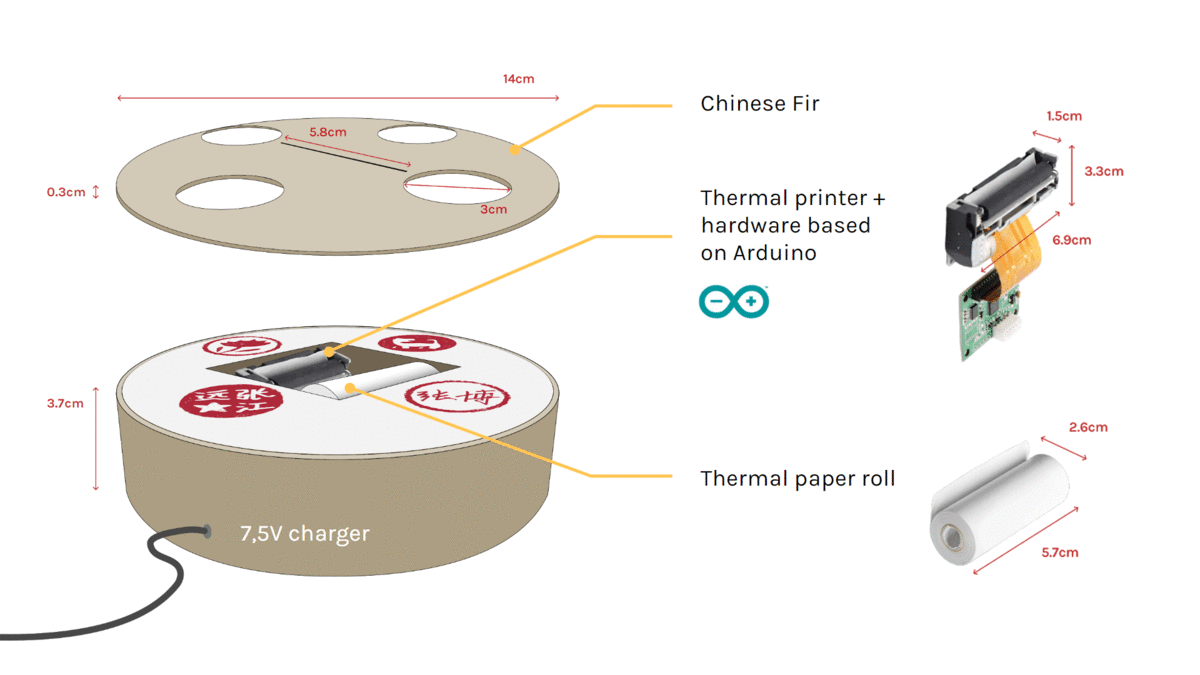
Conclusion
DOES 你吃了吗? SUCCEED WHERE WECHAT FAILS?
1.
triggers homesickness
NEW FAMILY RITUALS
2.
ostracizes some family members
SIMPLE INTERACTION MECHANISMS
3.
doesn’t take context into account
PROVIDES A 3RD “COMMON CONTEXT”
4.
relies on a single limiting language
SYMBOL BASED LANGUAGE
5.
breaches privacy
NON-INTRUSIVE & FAMILY EXCLUSIVE
LOOKING BACK ON THE USER RESEARCH
Working on 你吃了吗? was an interesting challenge, especially interviewing Chinese students abroad. Being also a foreign student, it was enriching to compare our experiences of expatriation and see how they were influenced by our respective cultures. I'm grateful that each of them opened up to me about the sensitive topic that is family relationships.
In my opinion, the pursuit of objectivity in design research is a lost cause. Rationalism and neutrality are myths perpetuating the idea that we are able to go anywhere in the world, observe, take notes, classify our users' complex lives without any bias. Giving up on this "neutral observer" point of view, and doing my research as a fellow "Stranger in a Strange Land" helped me greatly.
Even though it was not foolproof, levelling the ground between "surveyor" and "surveyed" is an approach I will improve and reuse as much as possible.
BUILDING AN OPTION B
Regarding the project itself, I'm aware that 你吃了吗? is only a partial answer geared towards the Chinese market.
But as the size of the floating population increases both in China and internationally, it's becoming pressing to address the needs of these “split households” in terms of communication.
Moreover, in an era of monopoly where interpersonal relationships rely on 2 or 3 apps, I believe it's important to start imagining other ways we could use technology to interact with our loved ones. As interaction designers, I think we have a responsibility to provide new decentralized alternatives, no matter how unescapable the competitors seem to be.
Full presentation
Moreover, in an era of monopoly where interpersonal relationships rely on 2 or 3 apps, I believe it's important to start imagining other ways we could use technology to interact with our loved ones. As interaction designers, I think we have a responsibility to provide new decentralized alternatives, no matter how unescapable the competitors seem to be.
Full presentation

